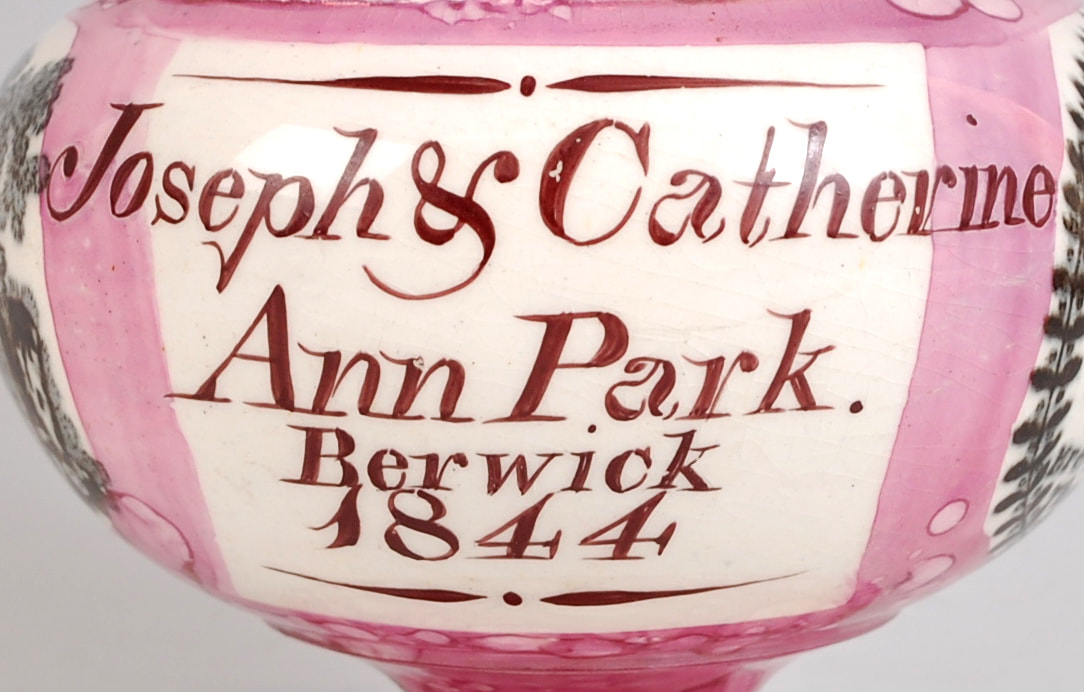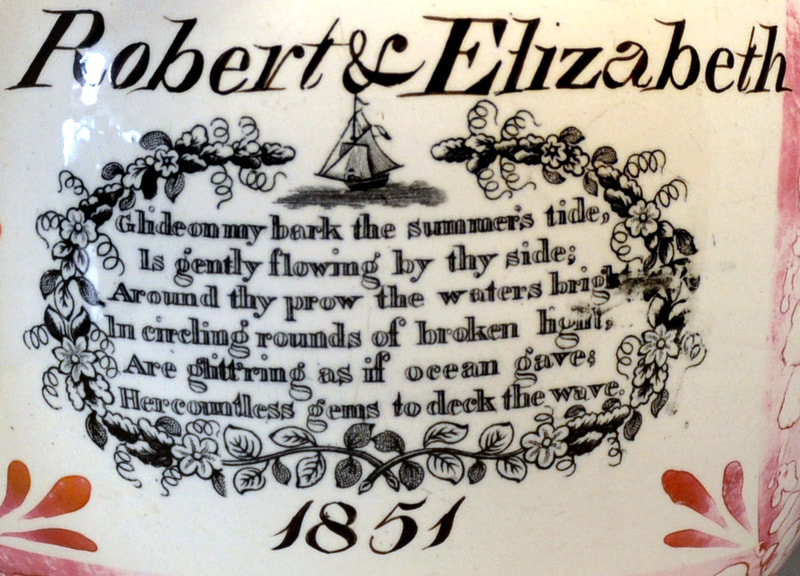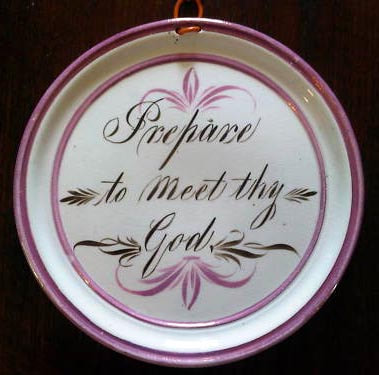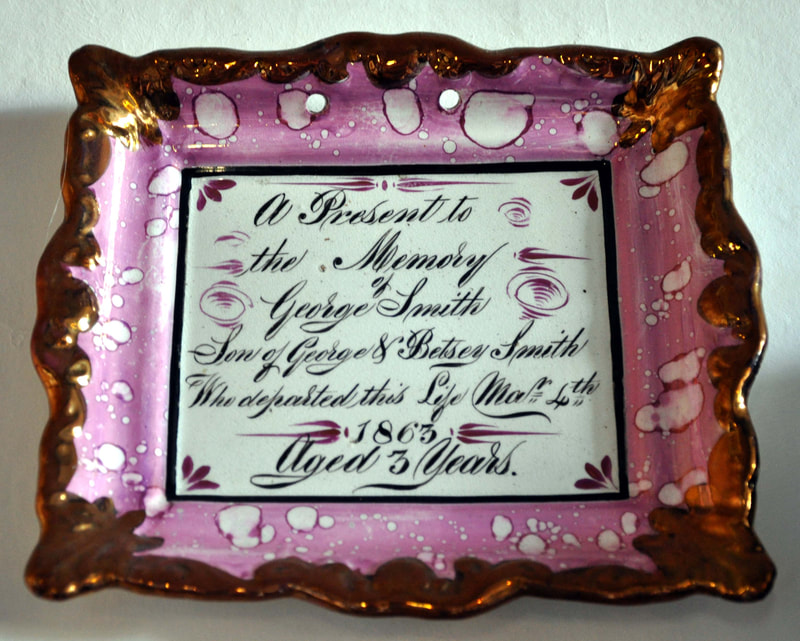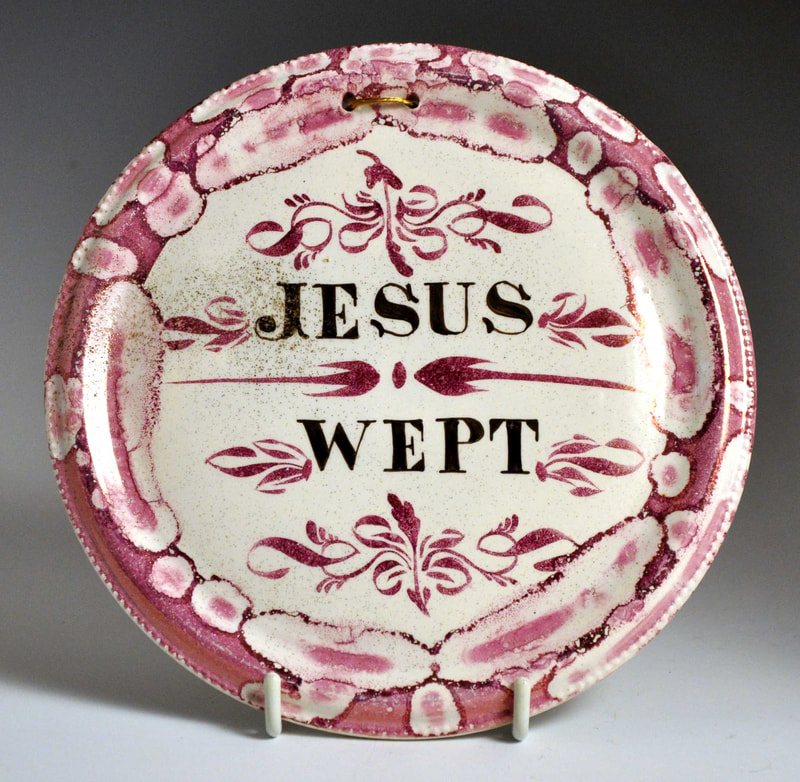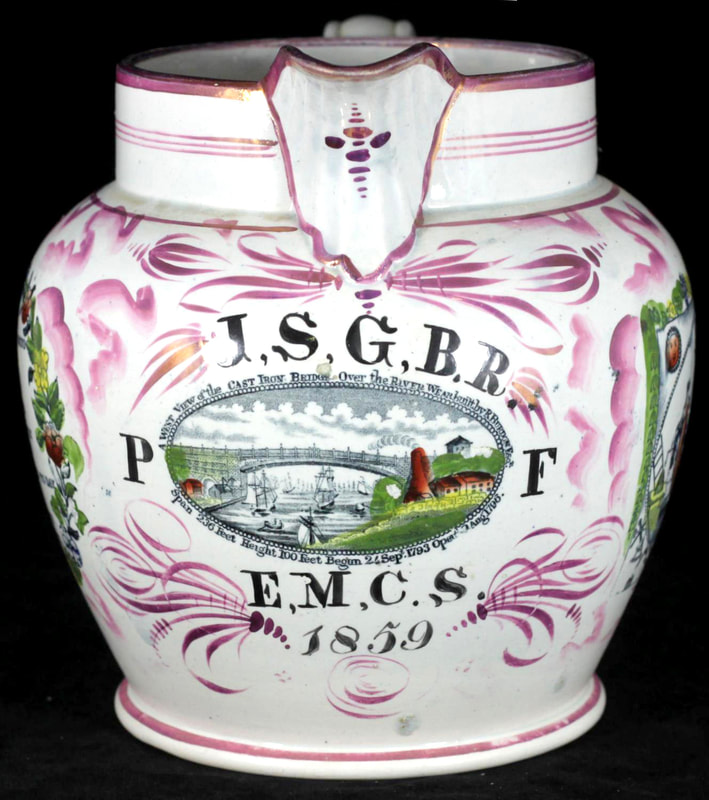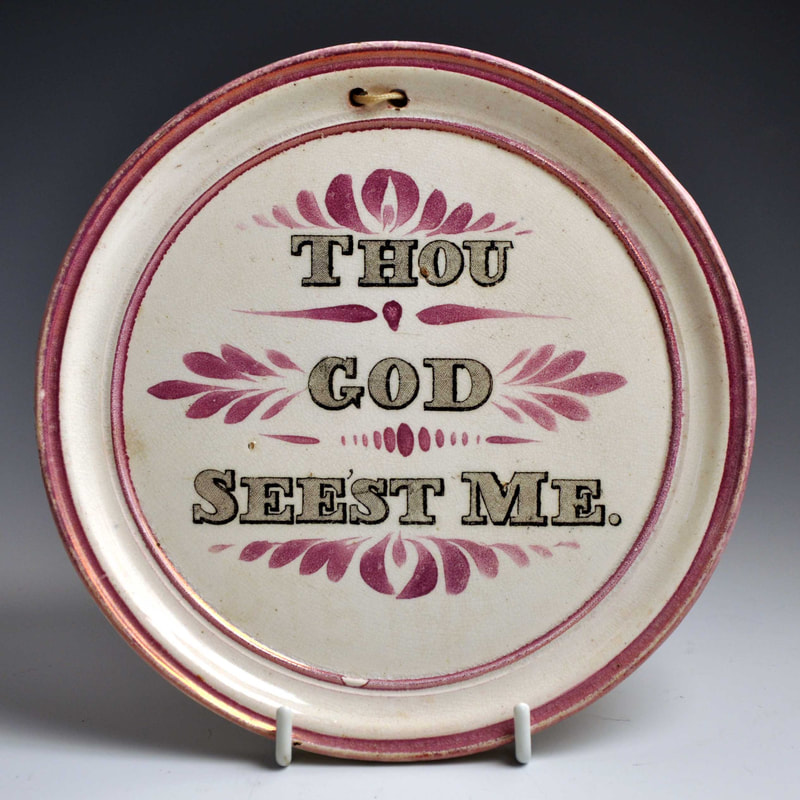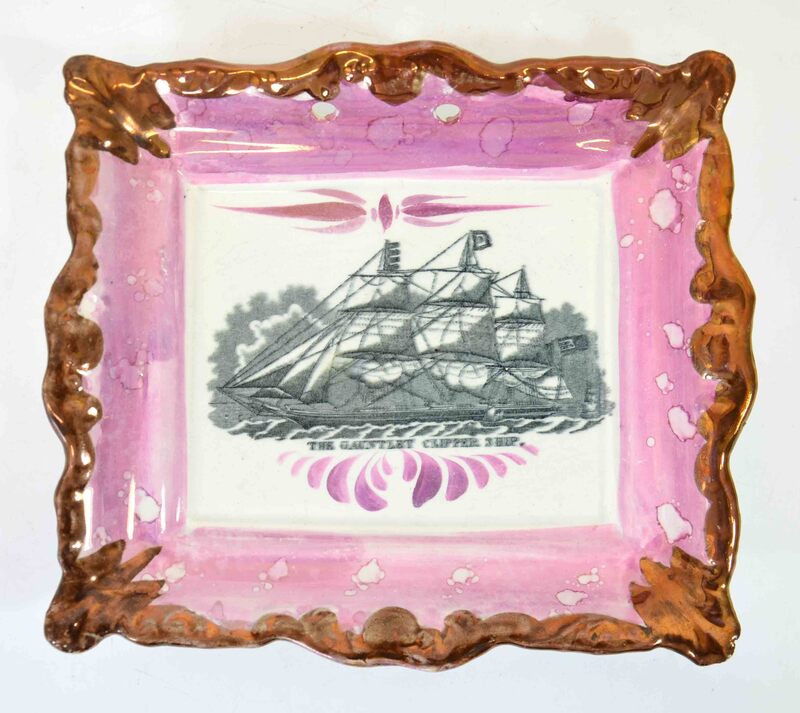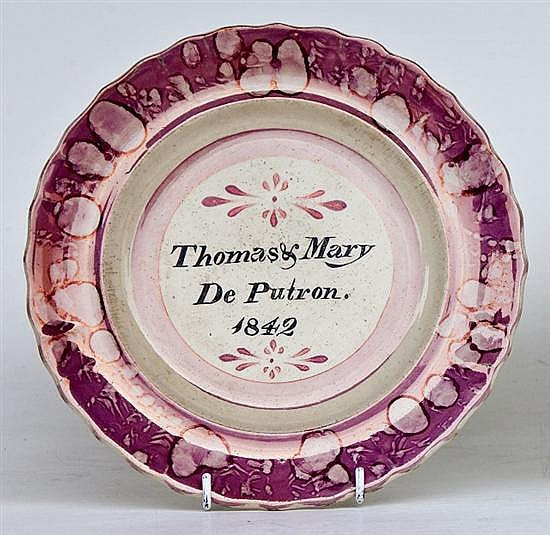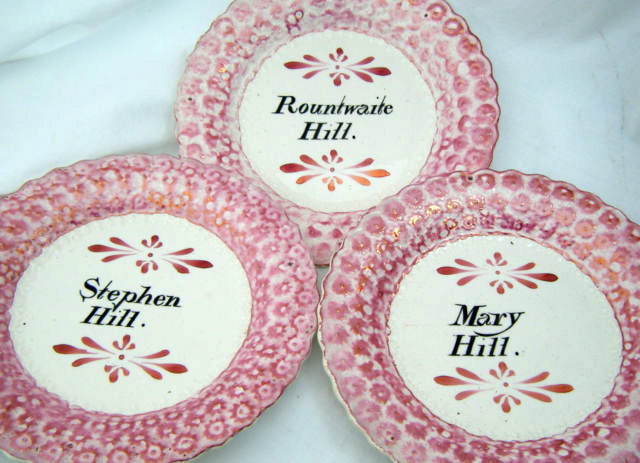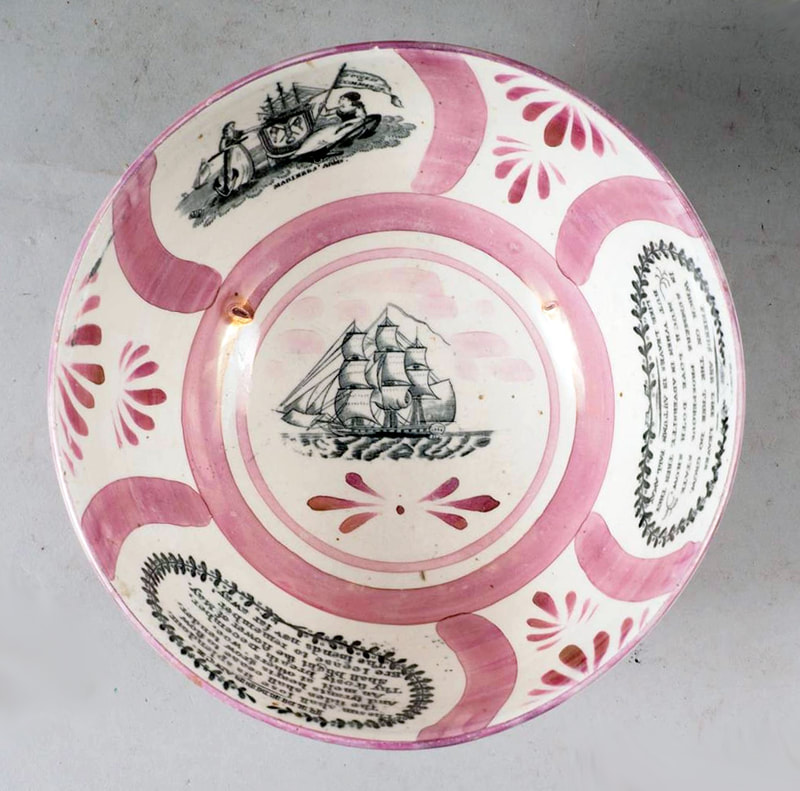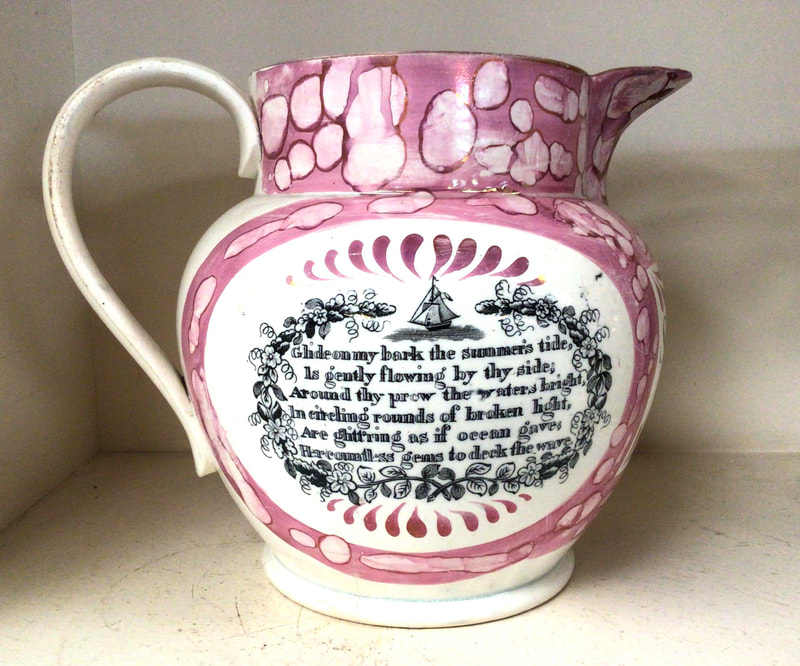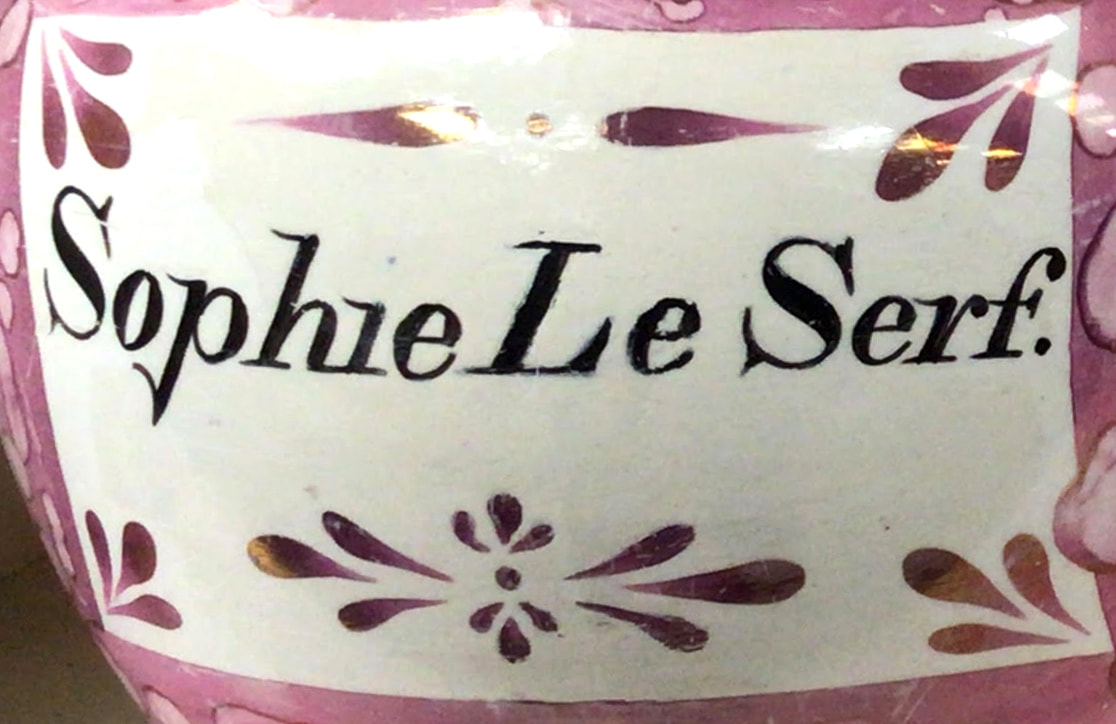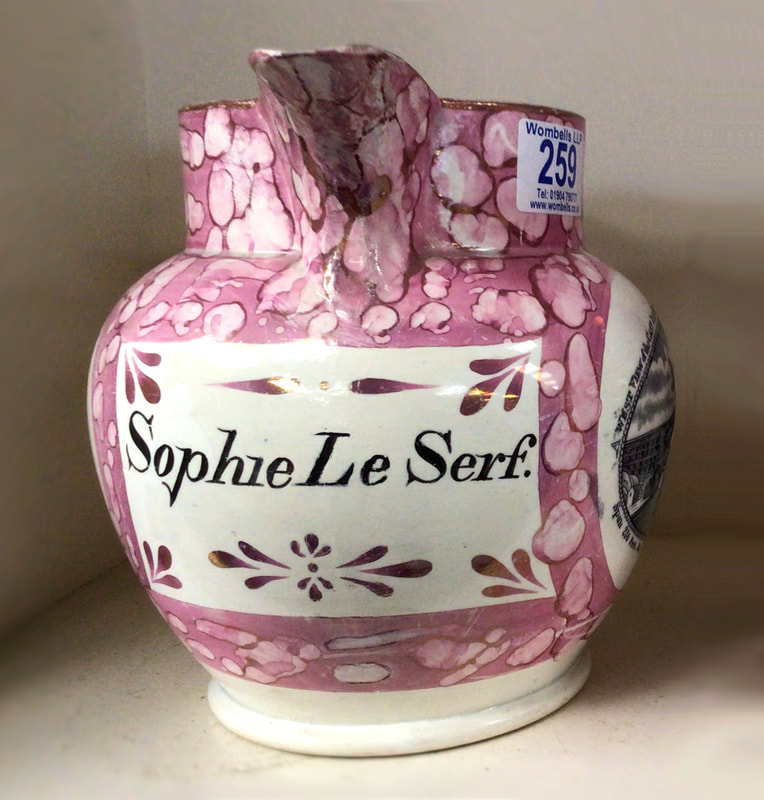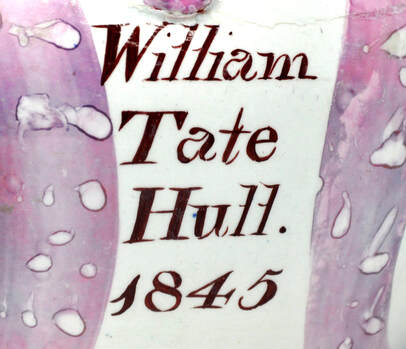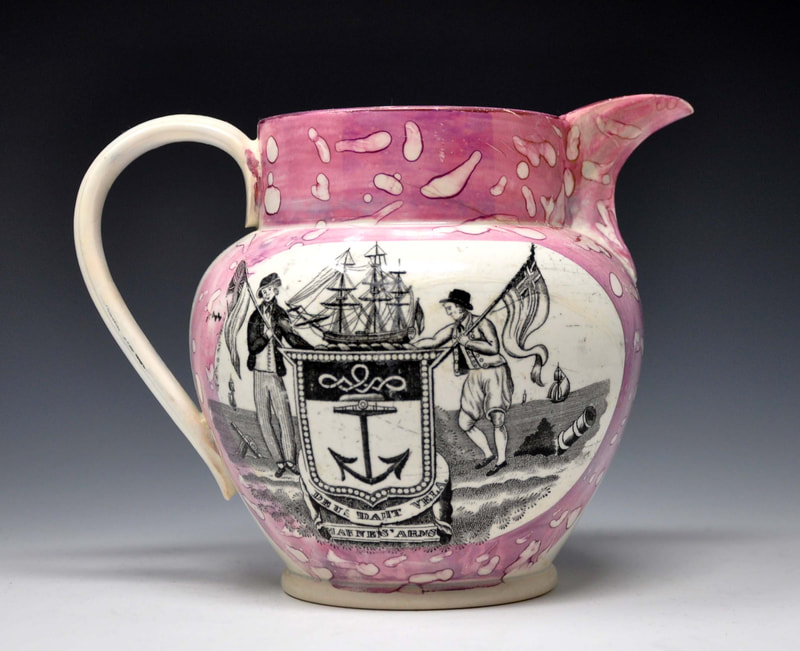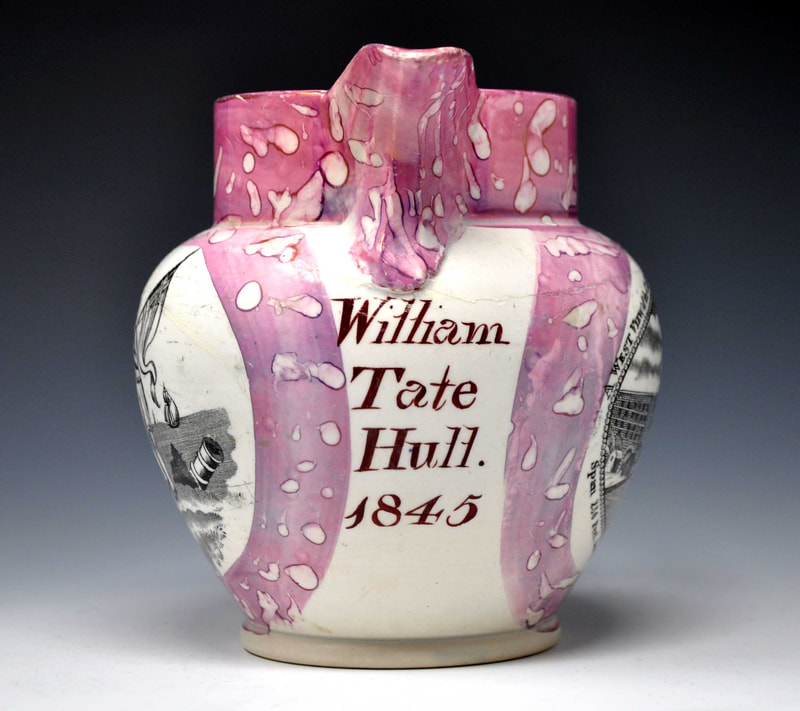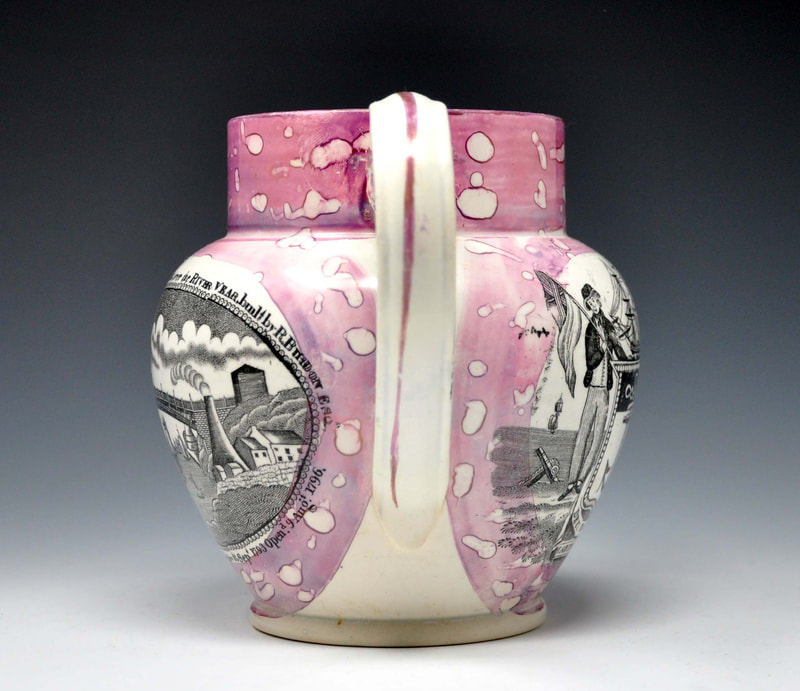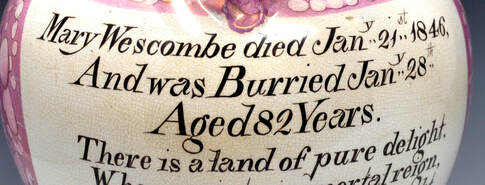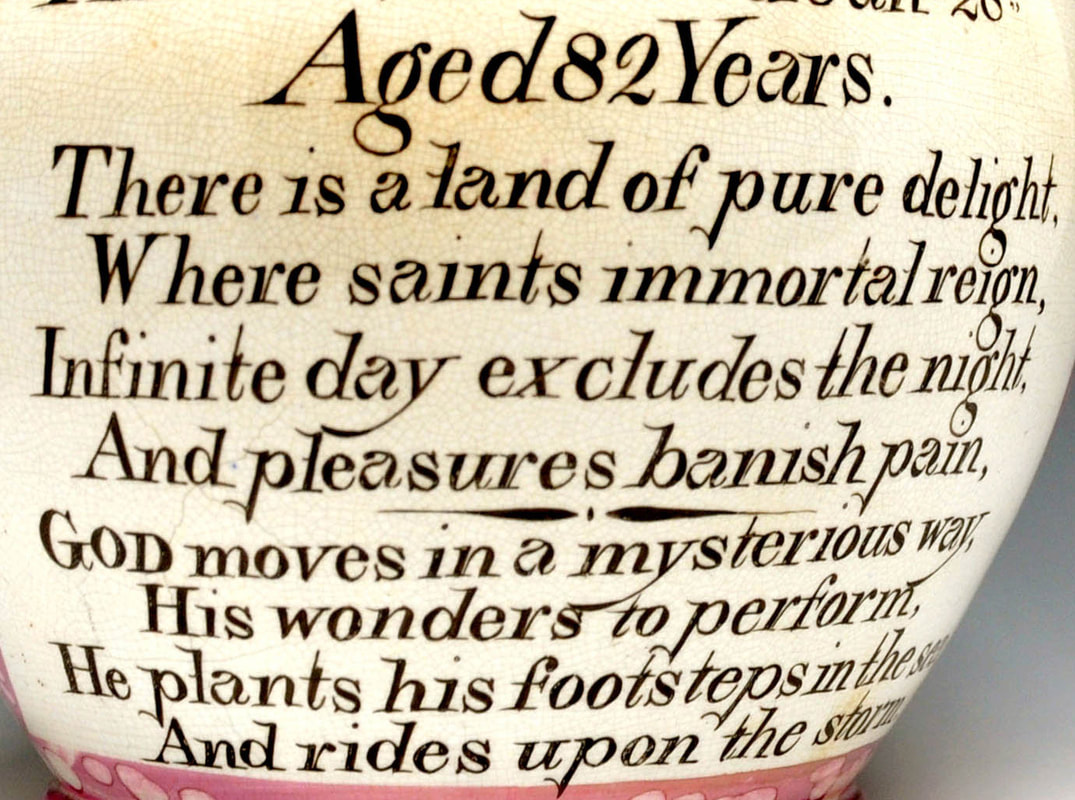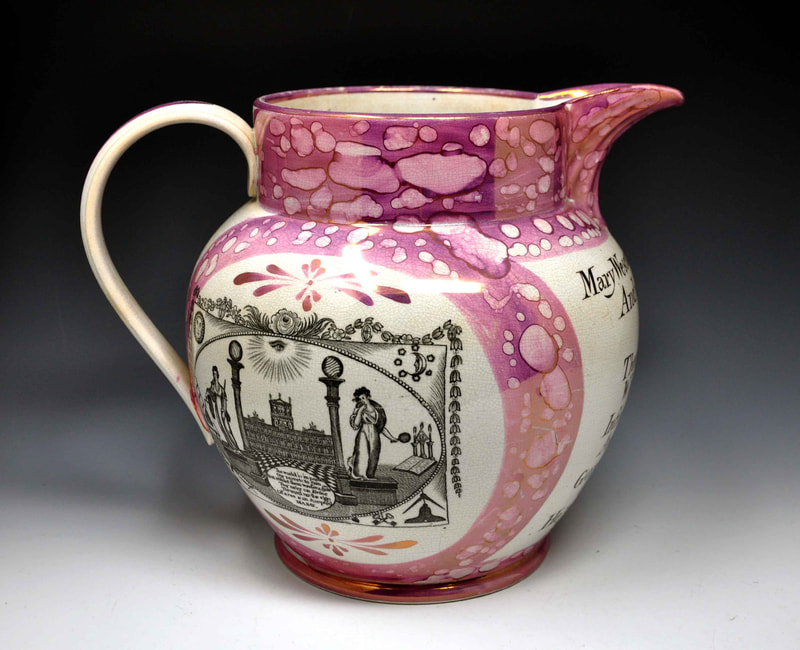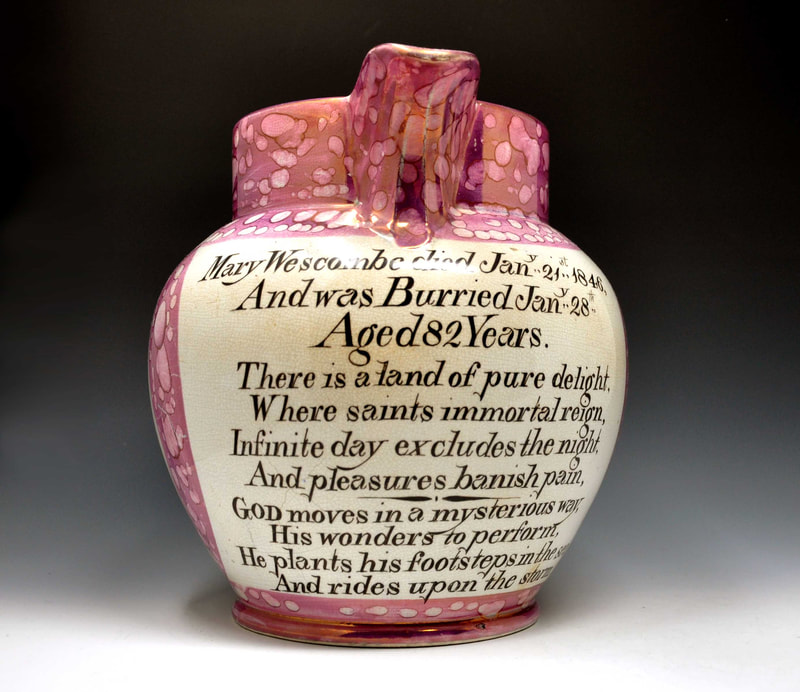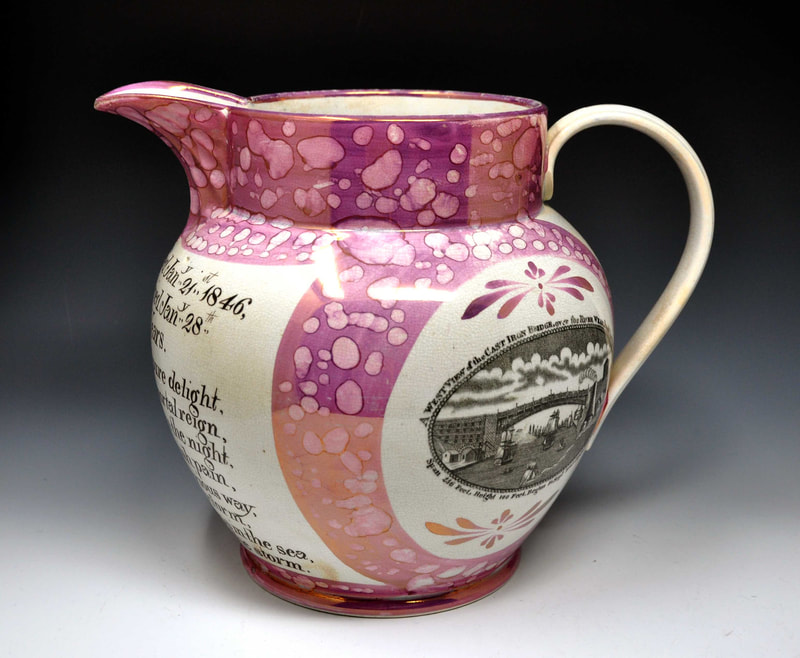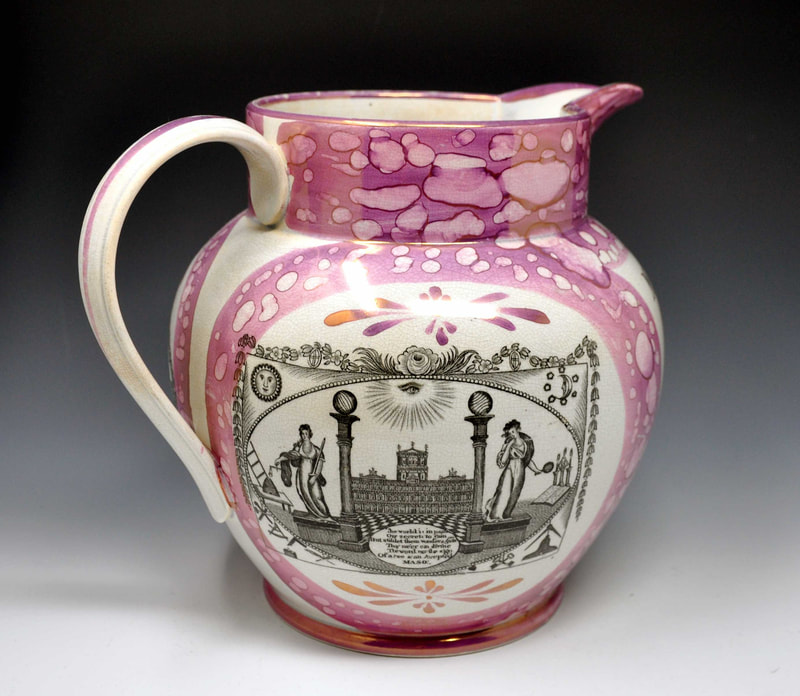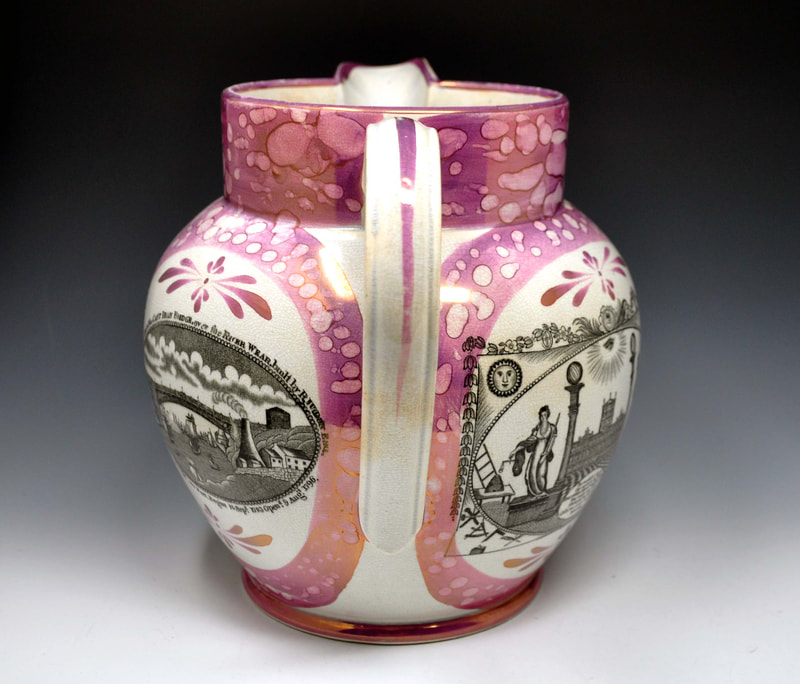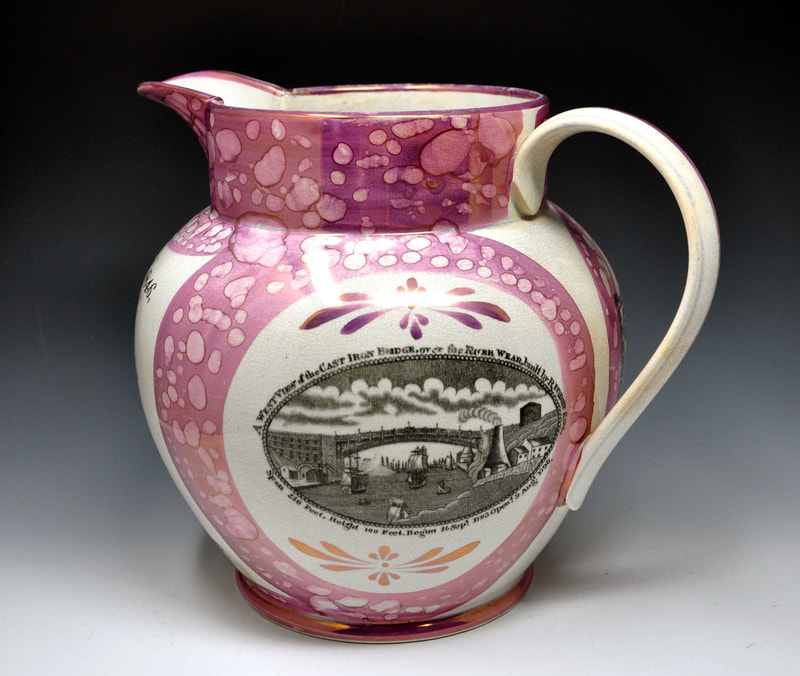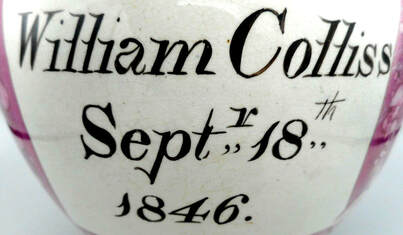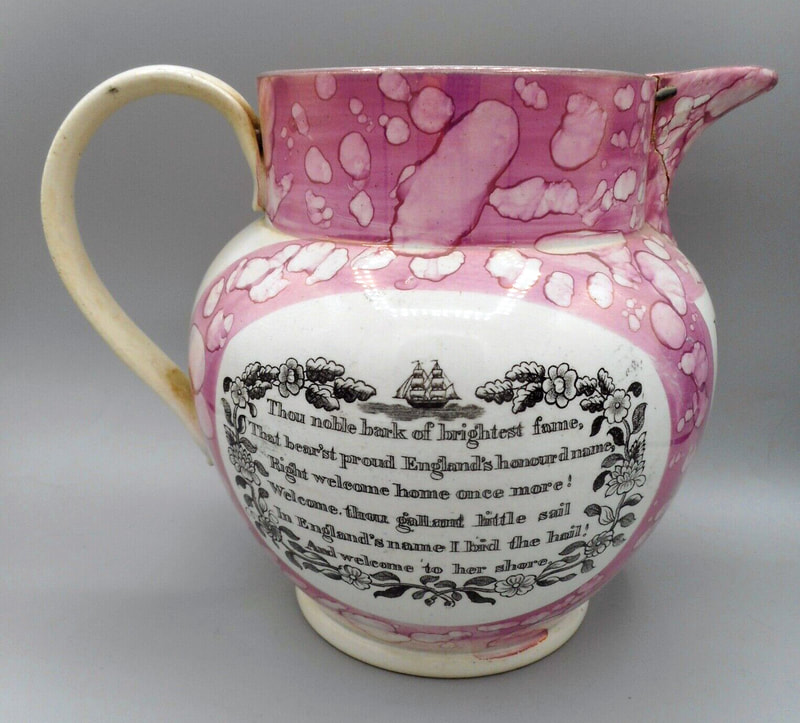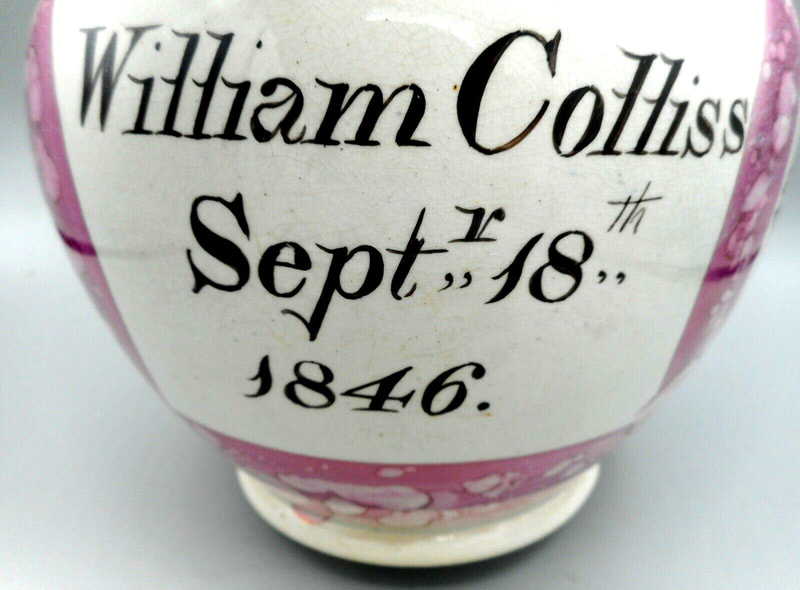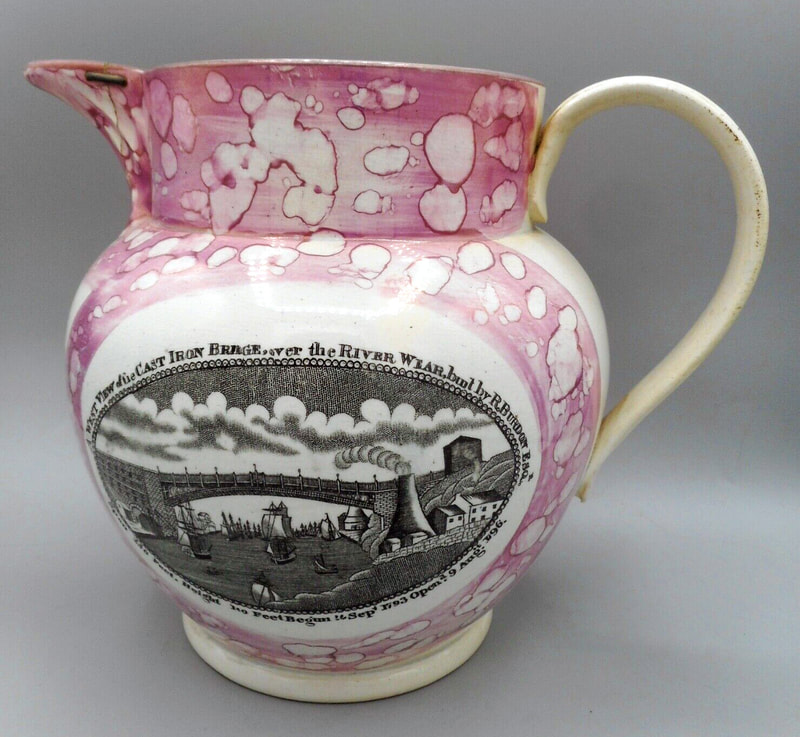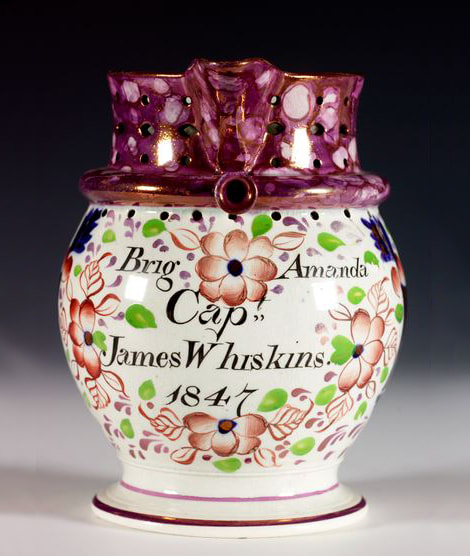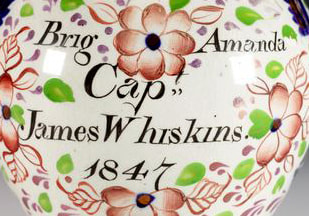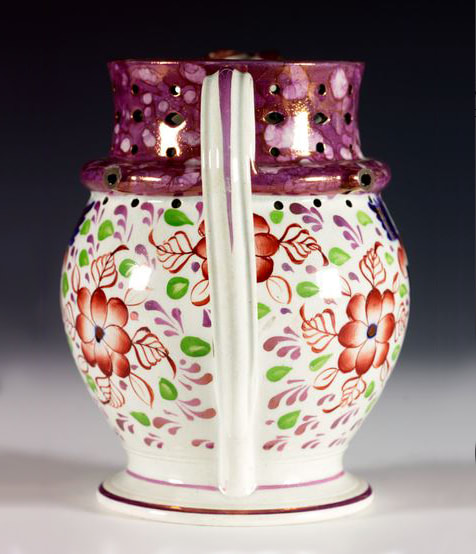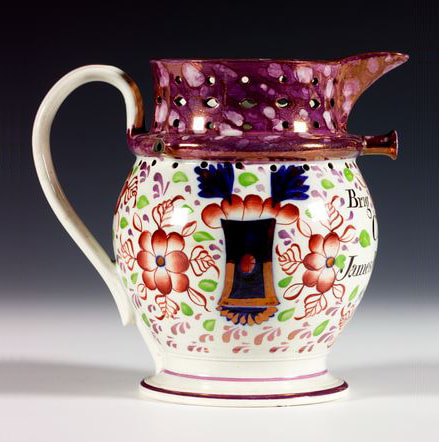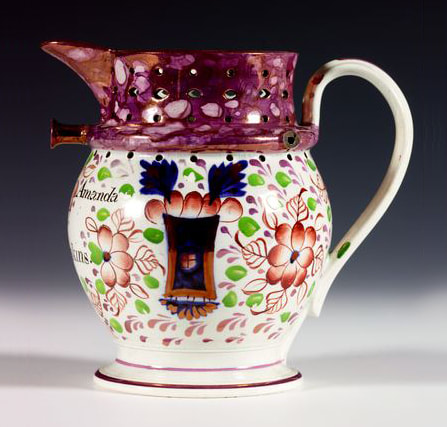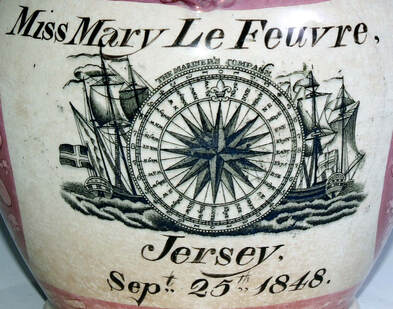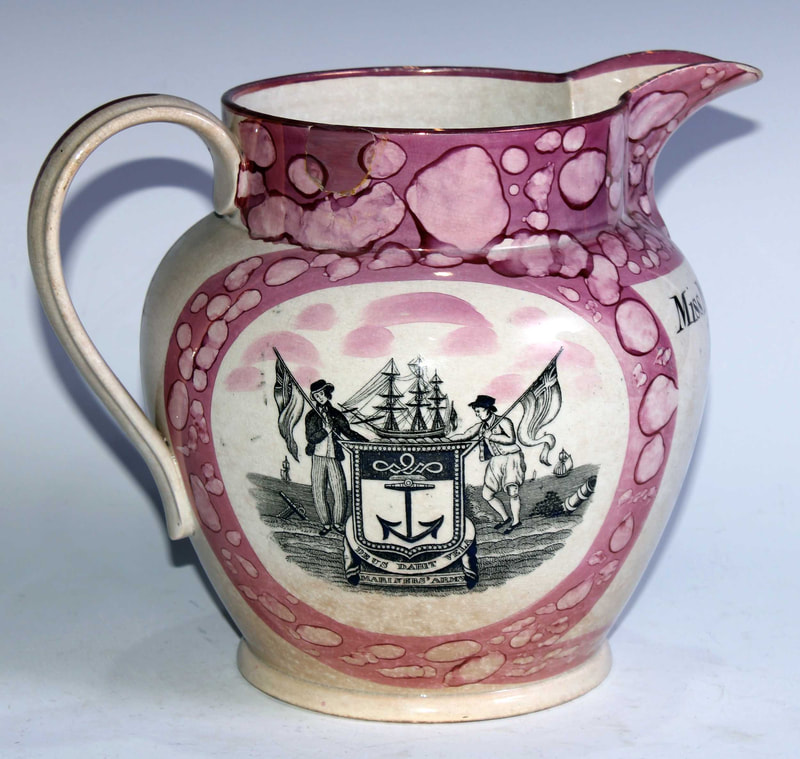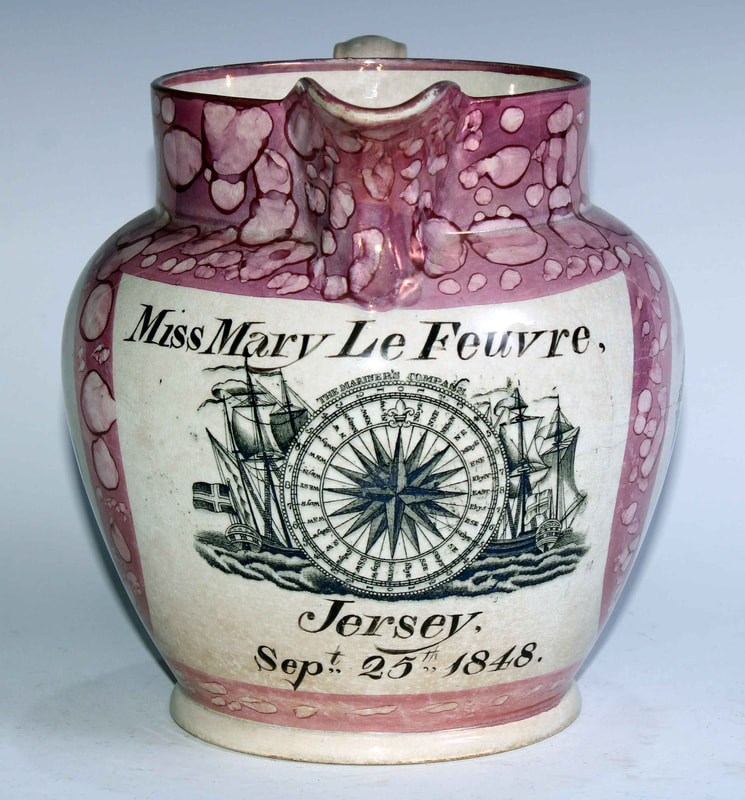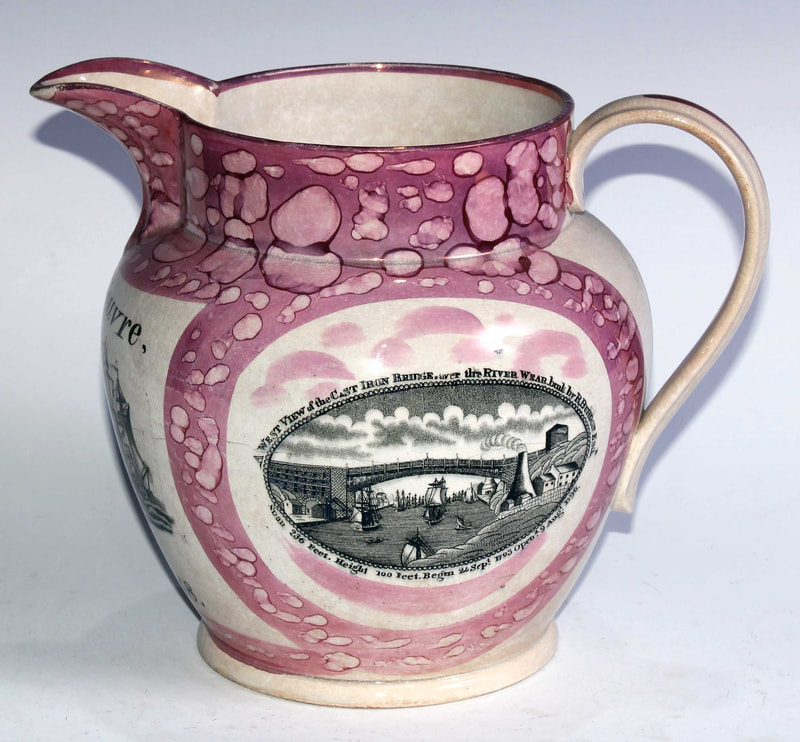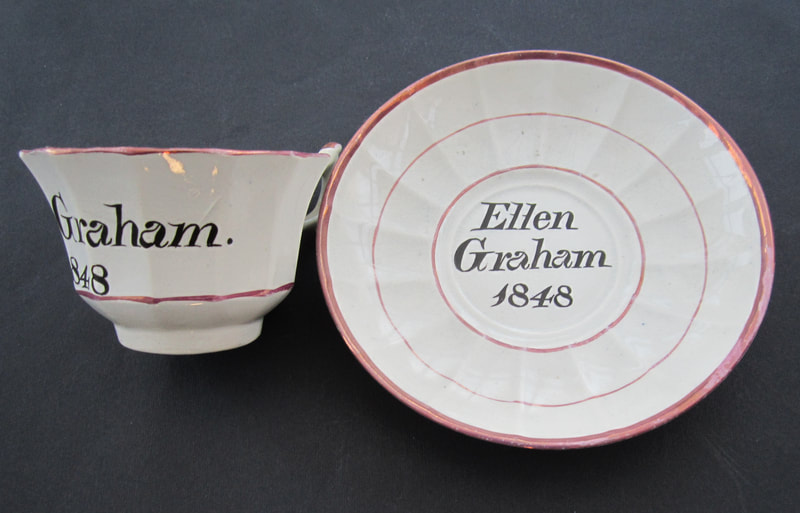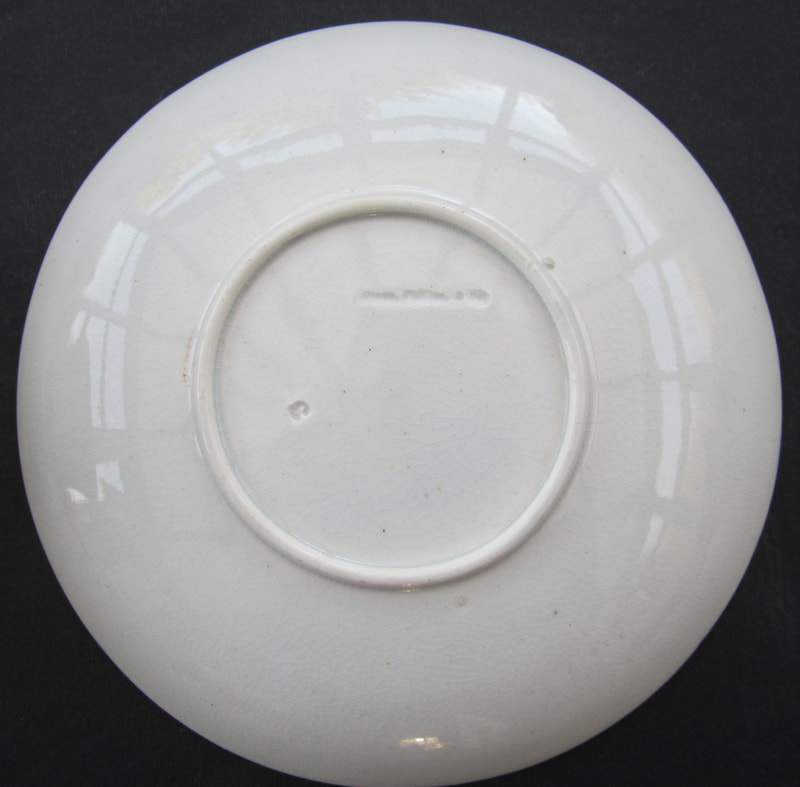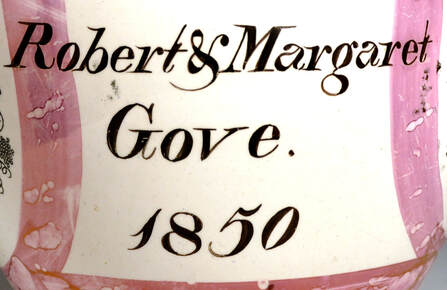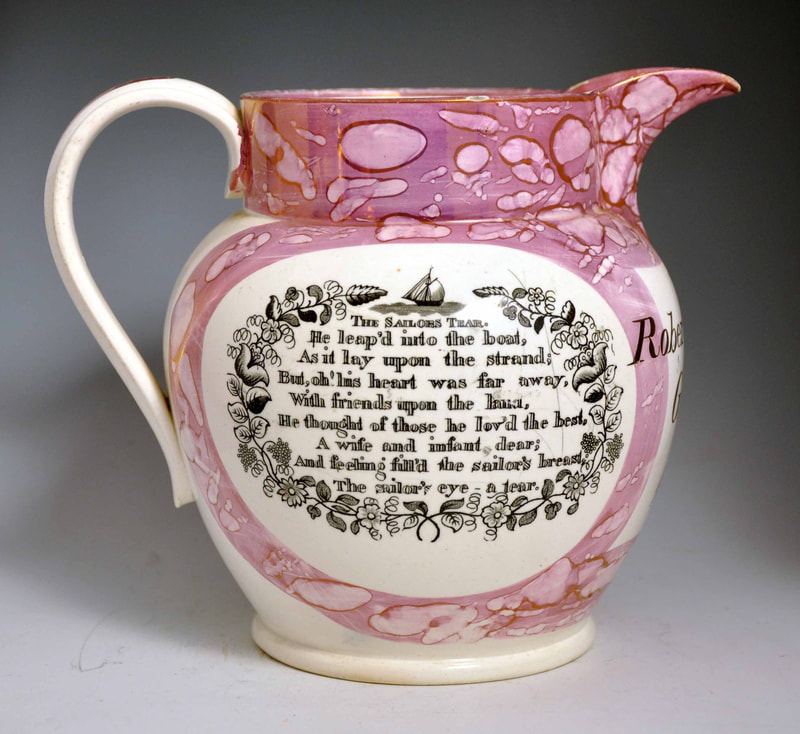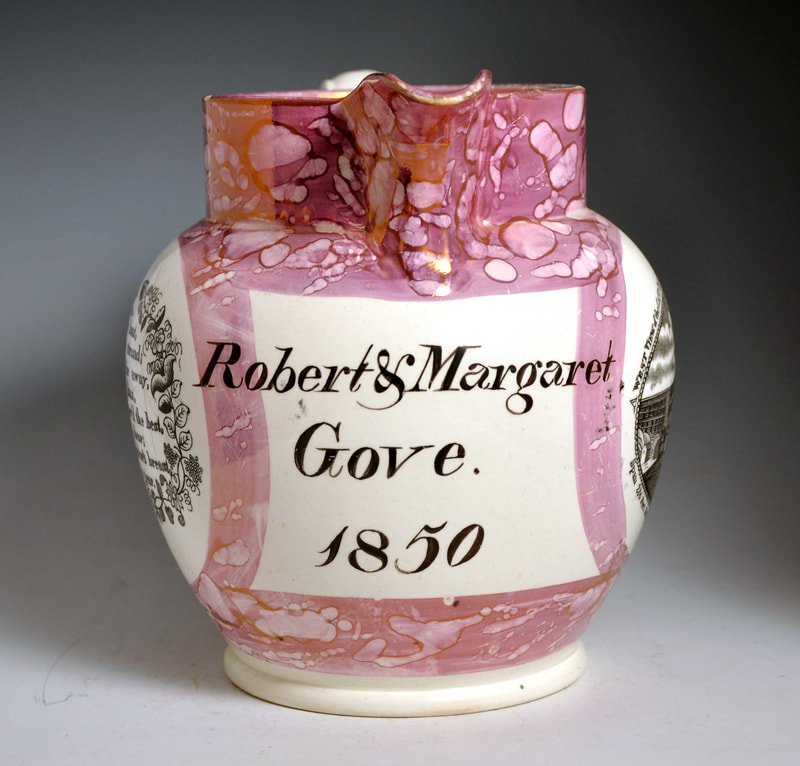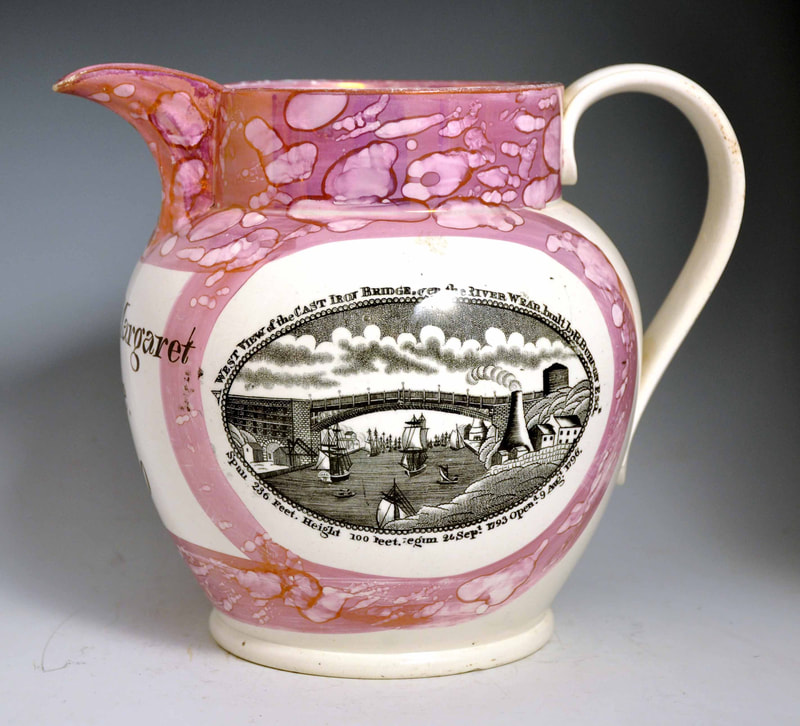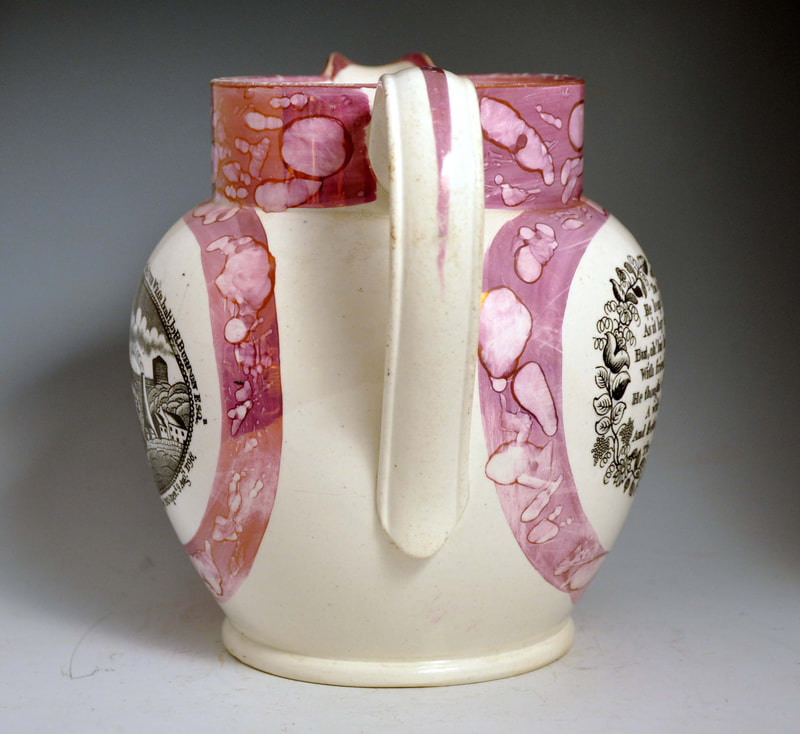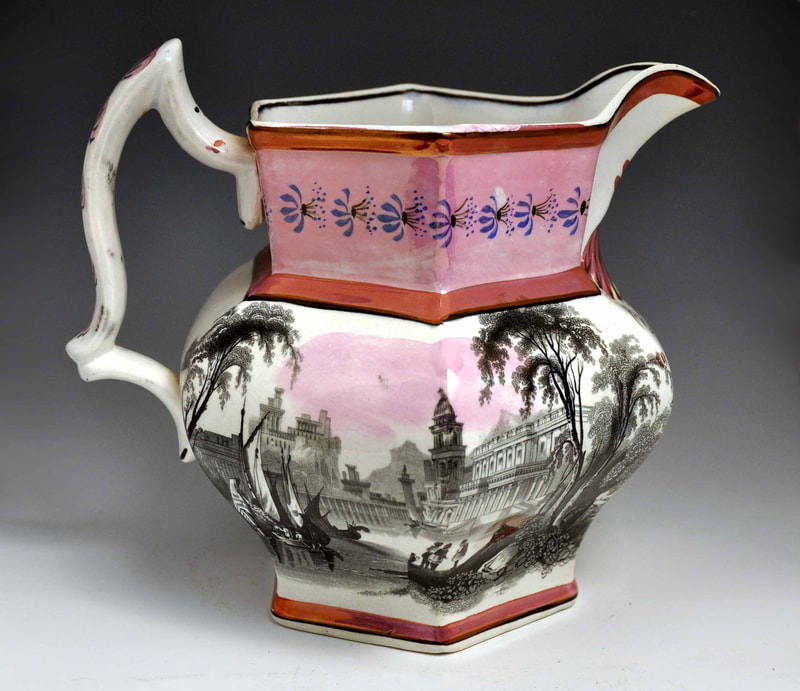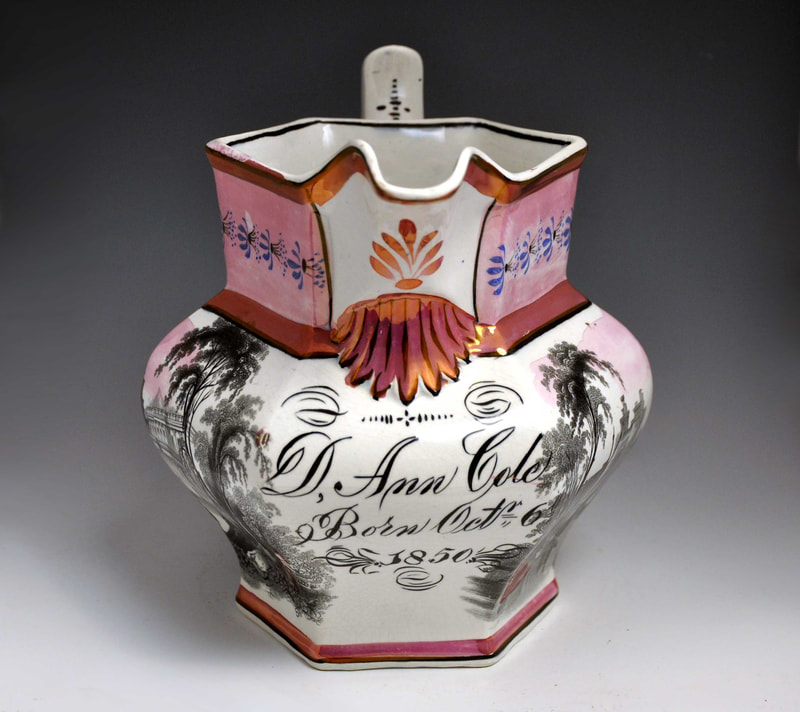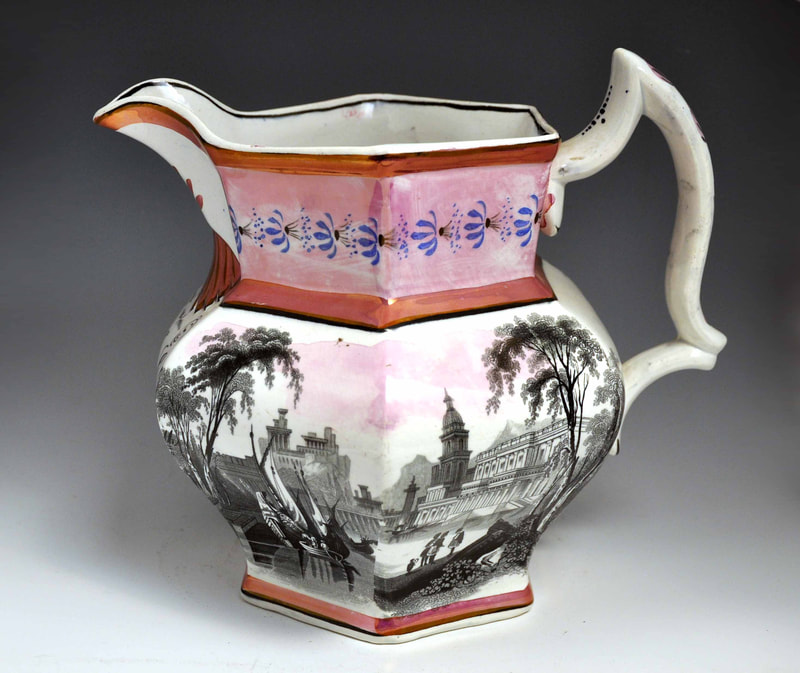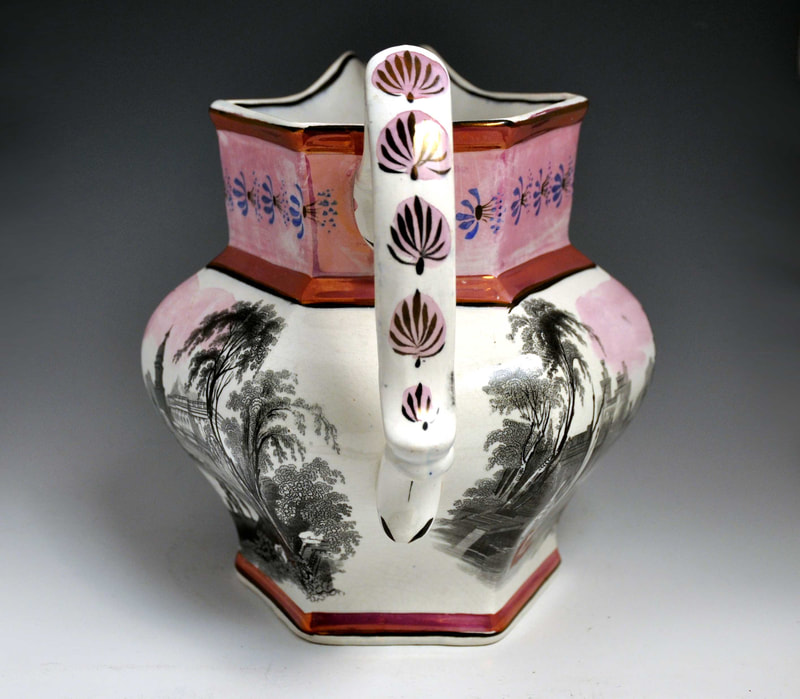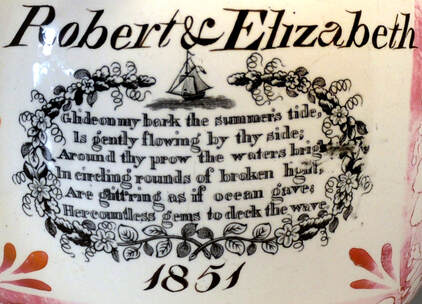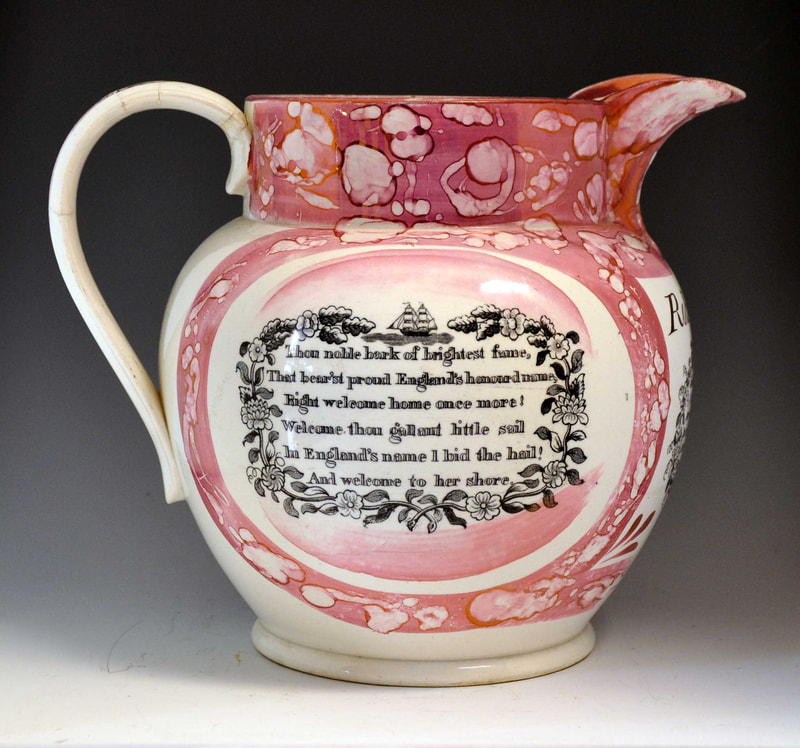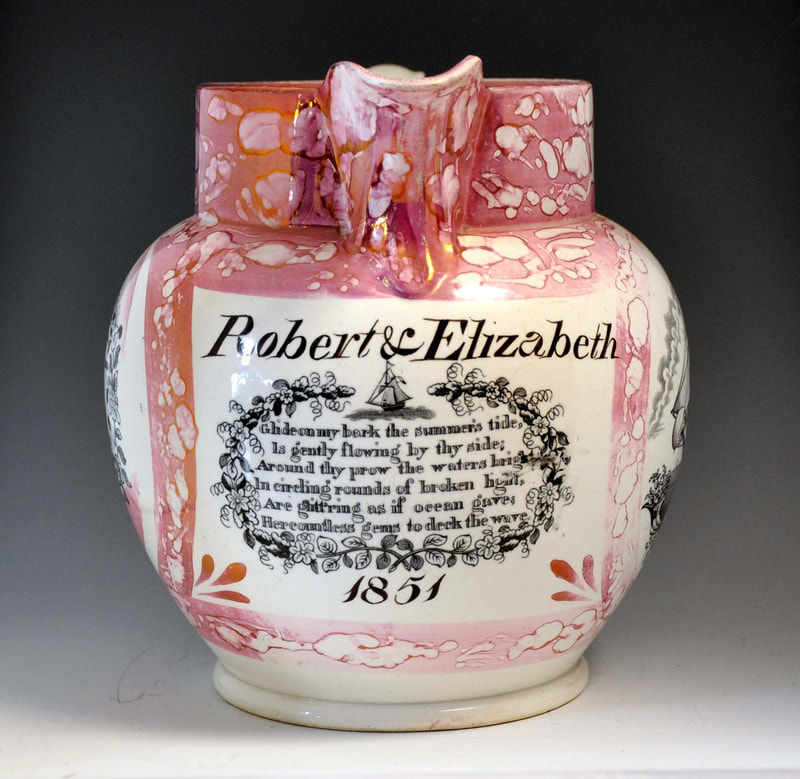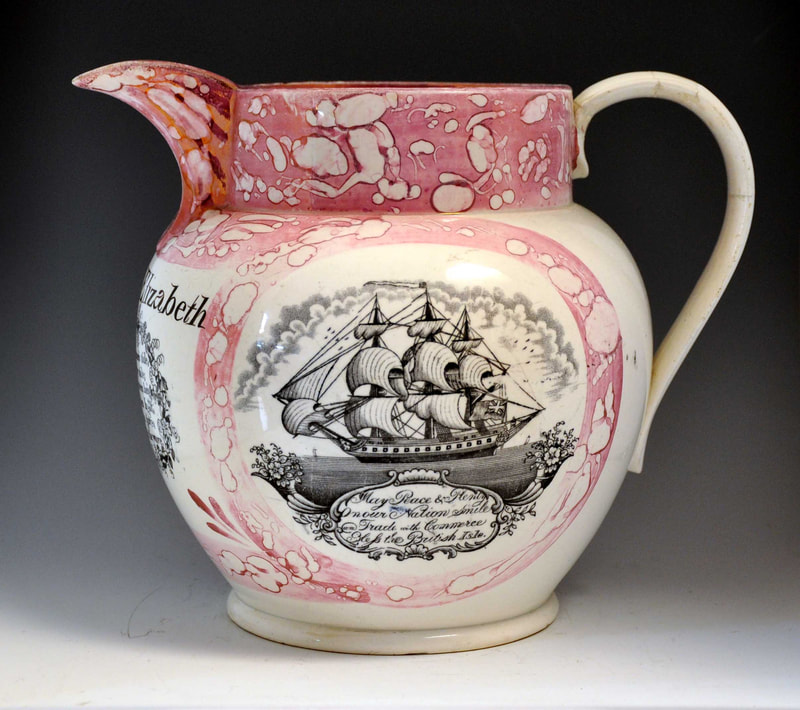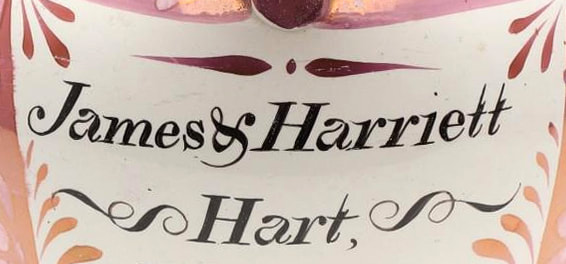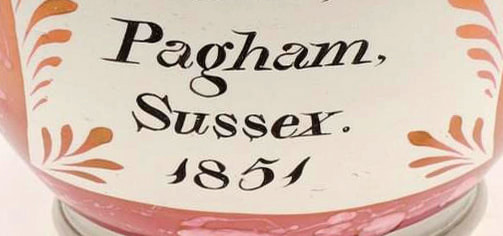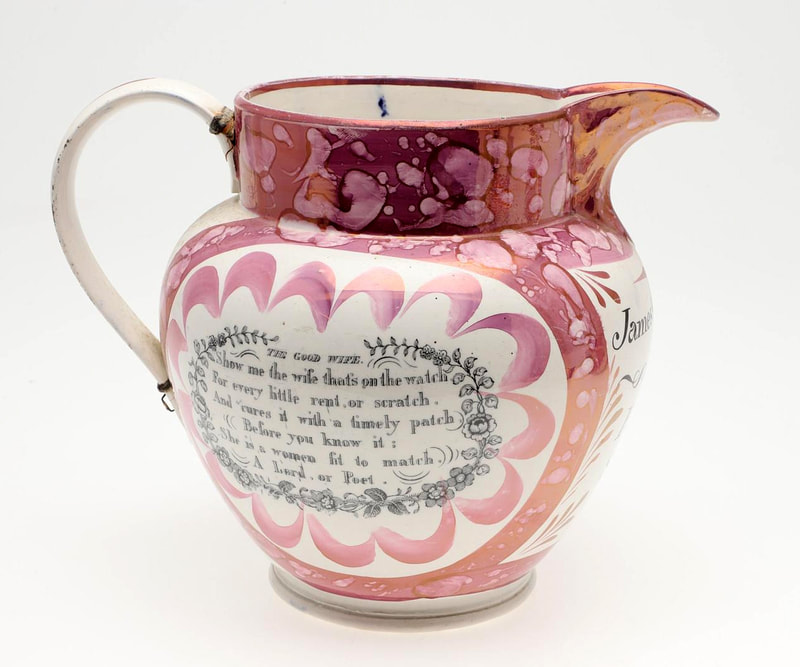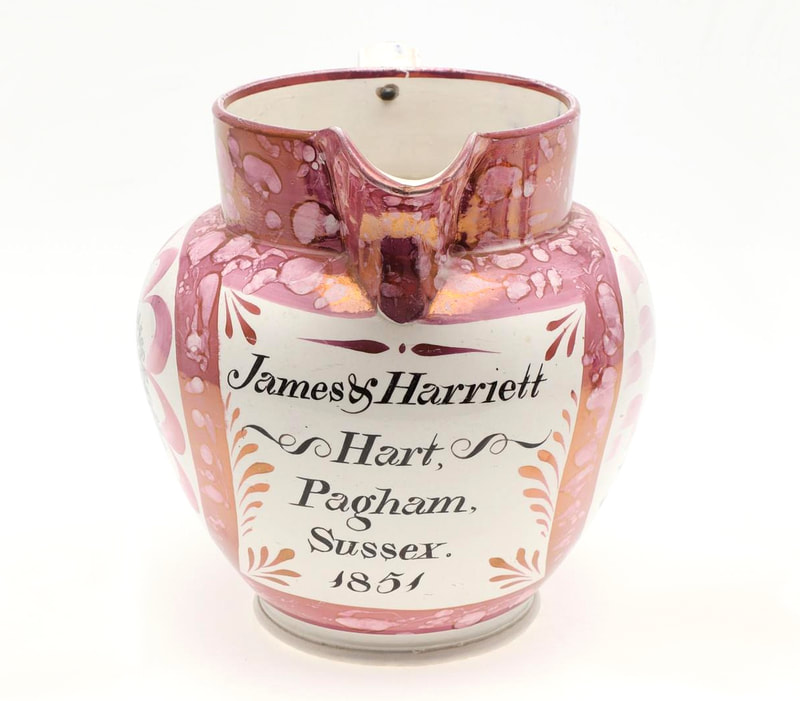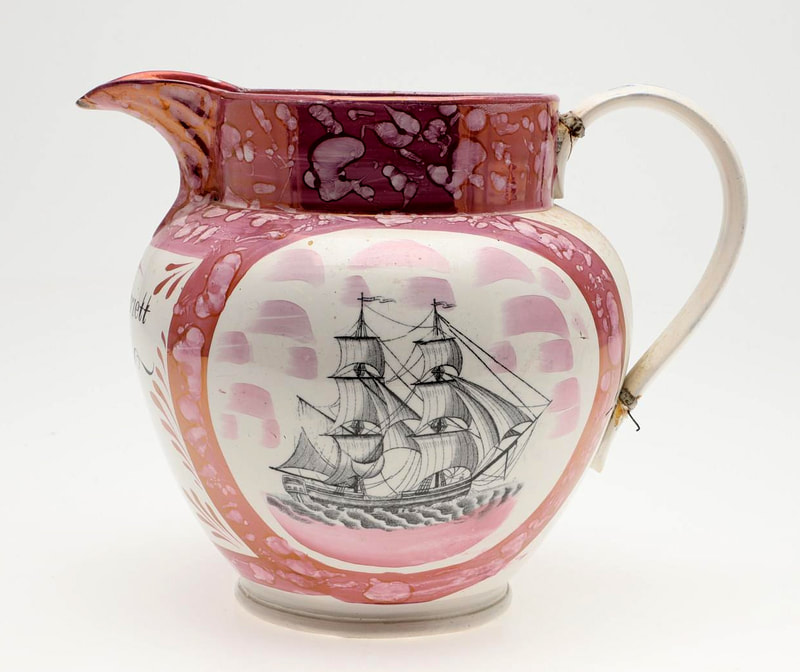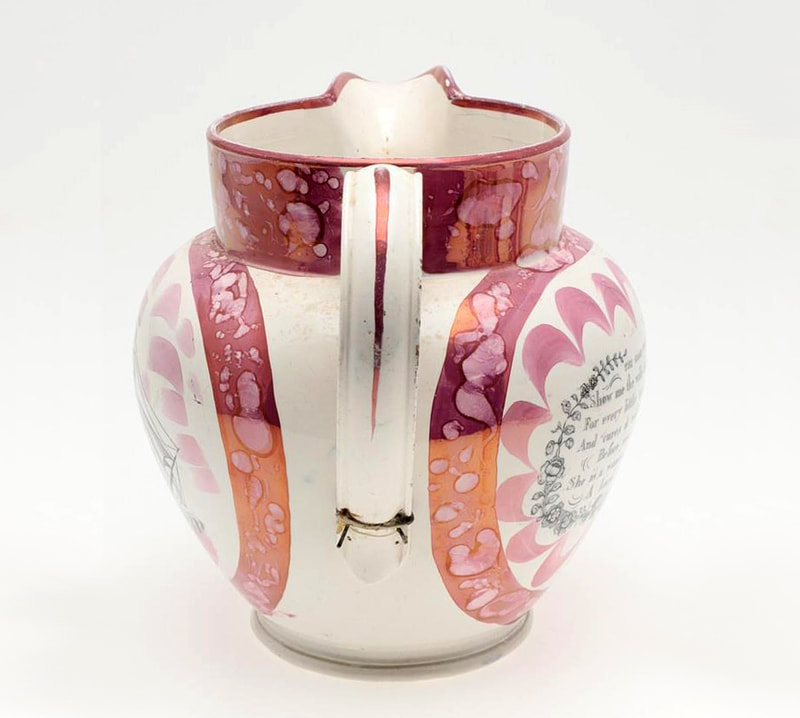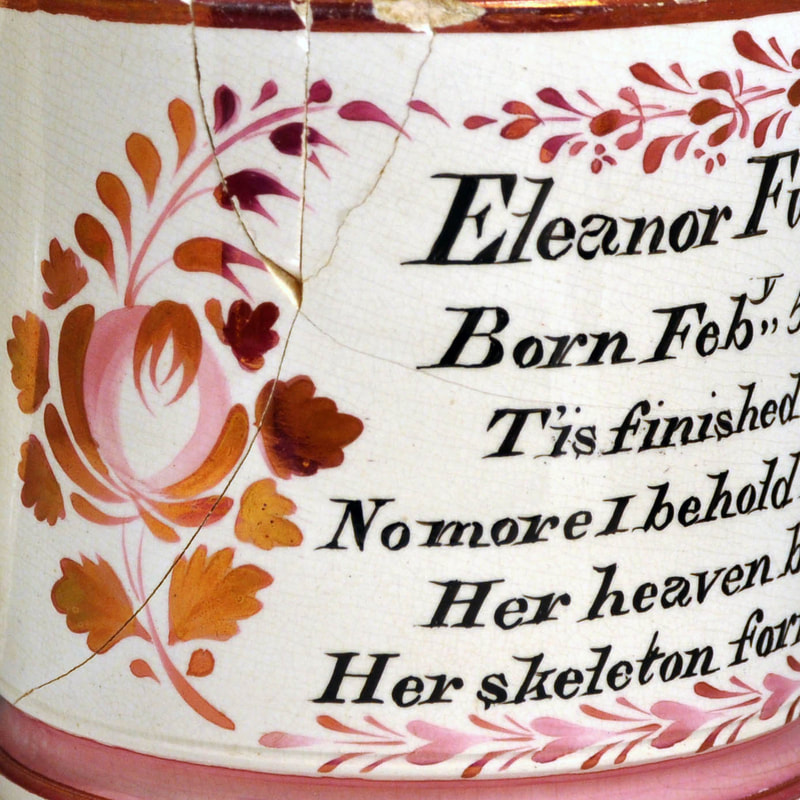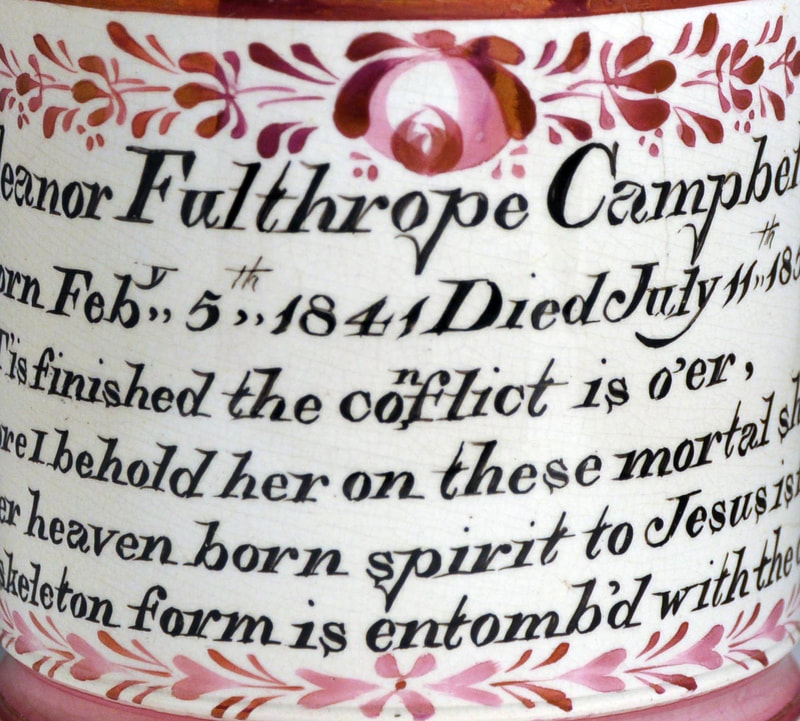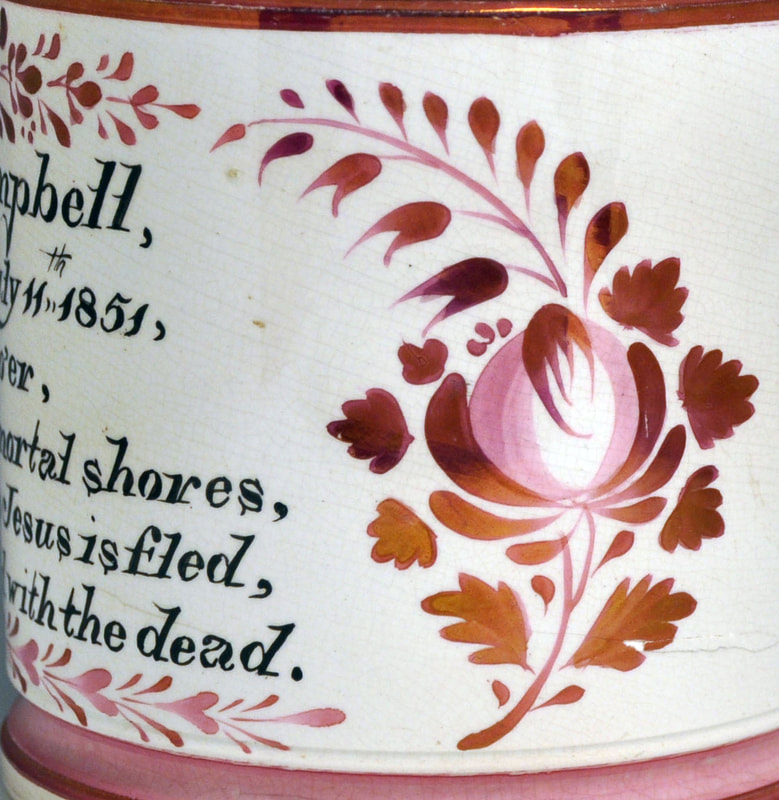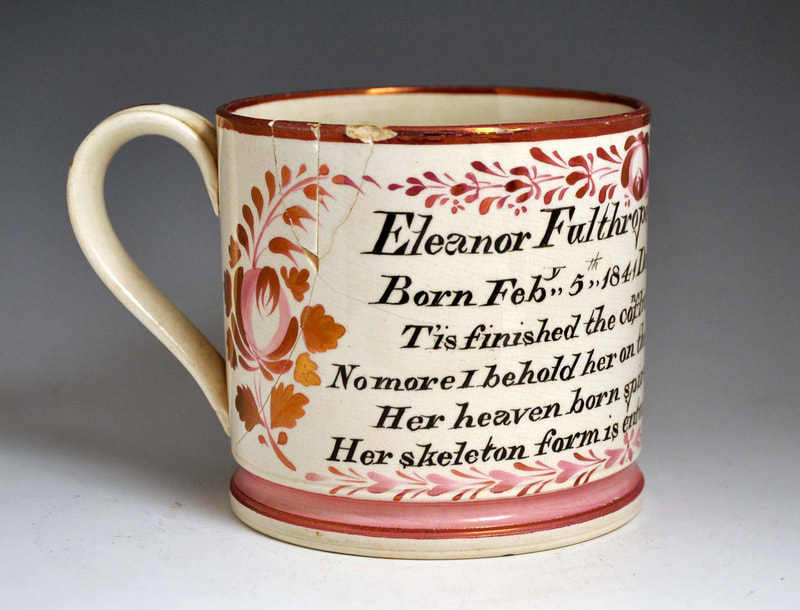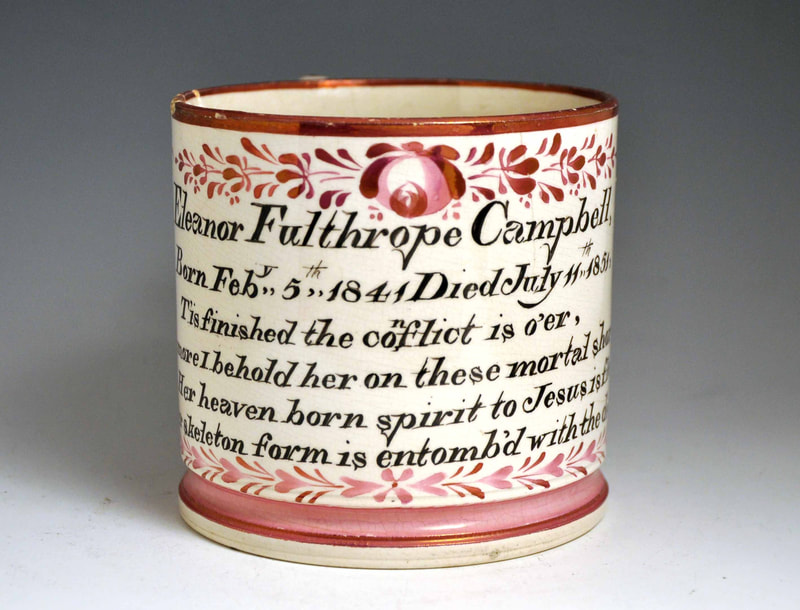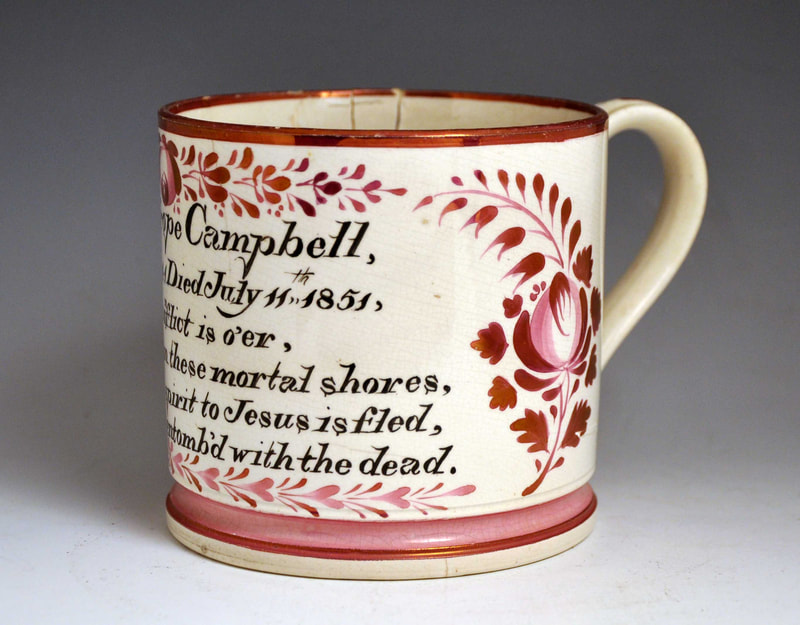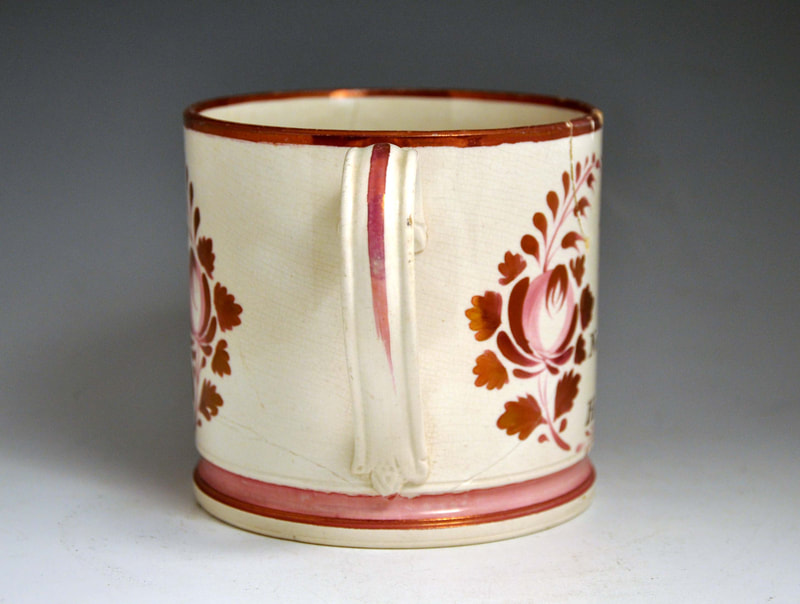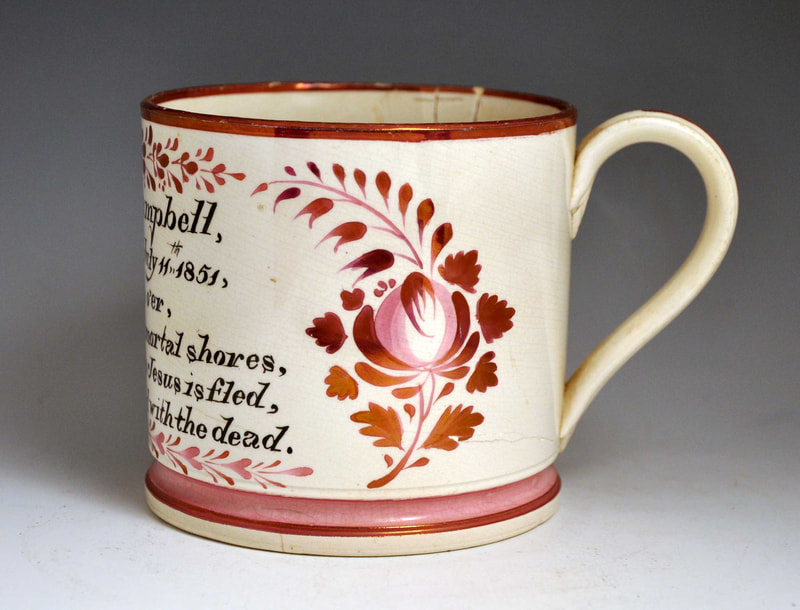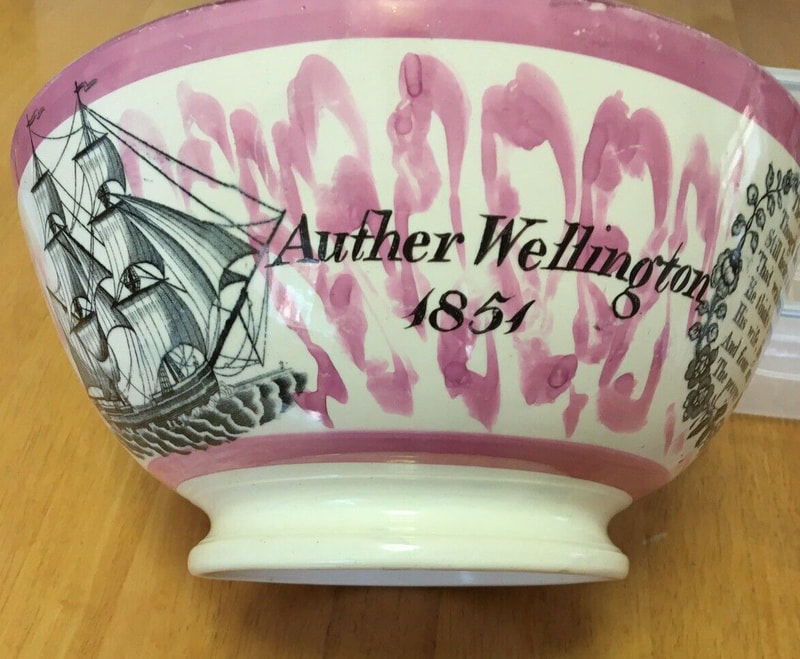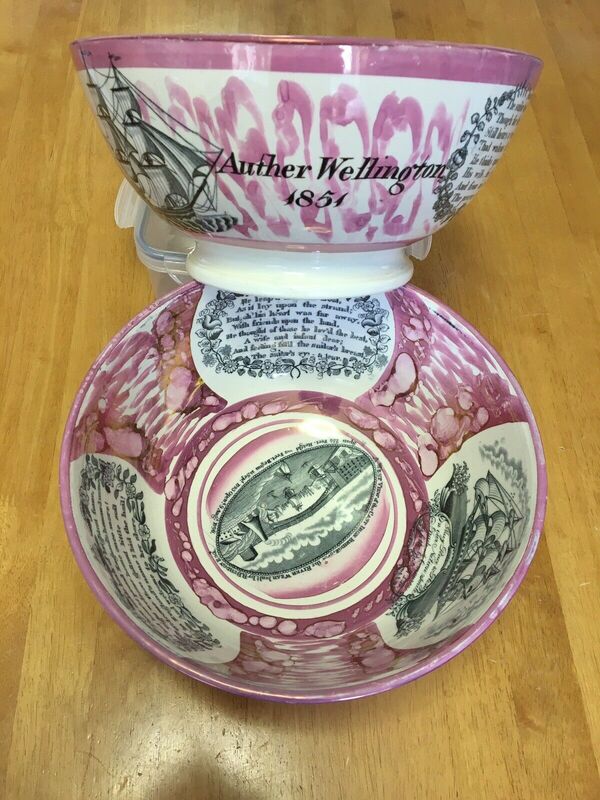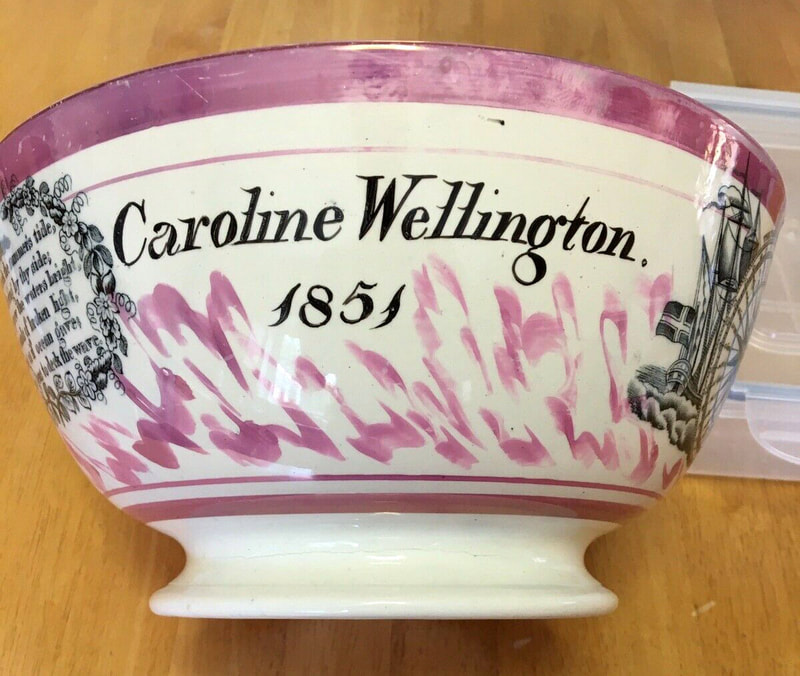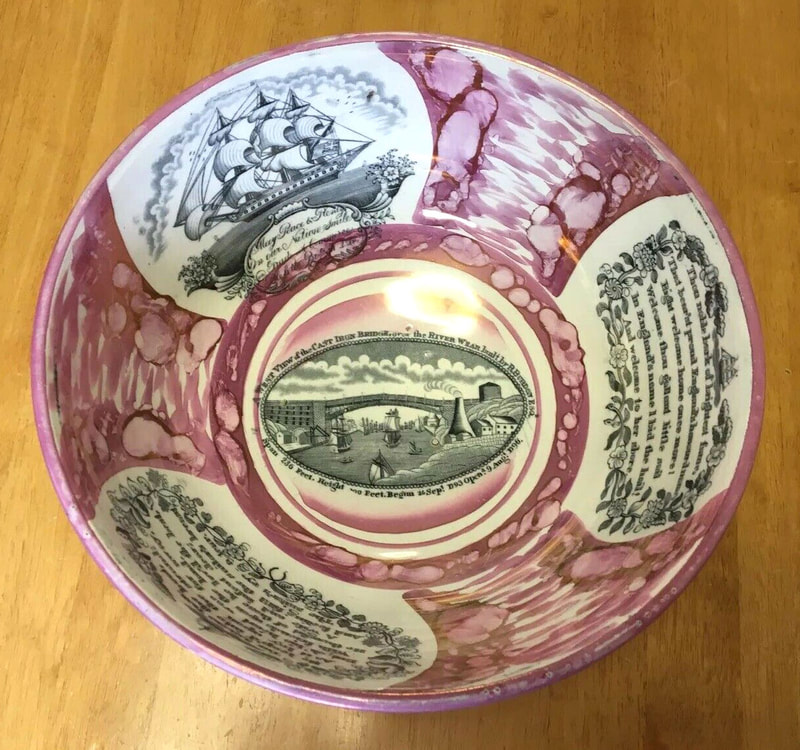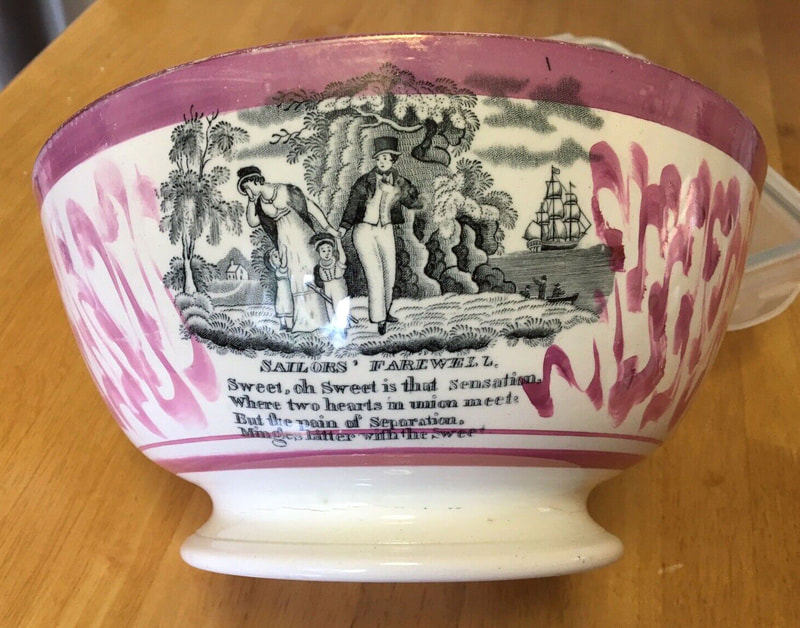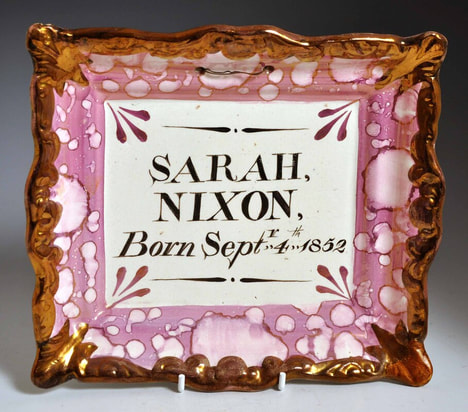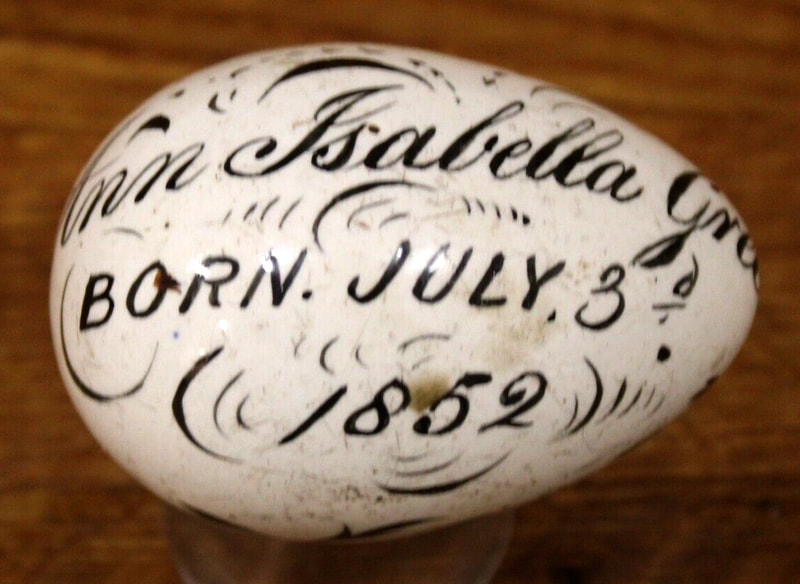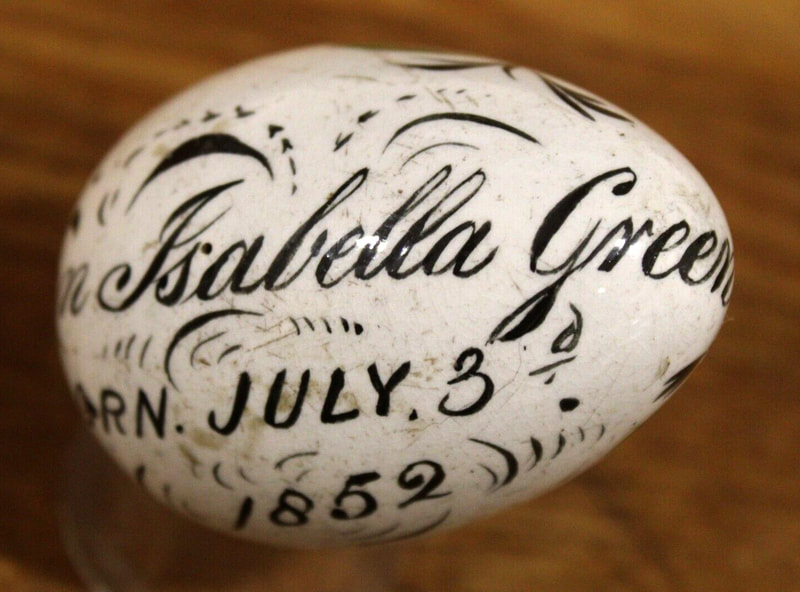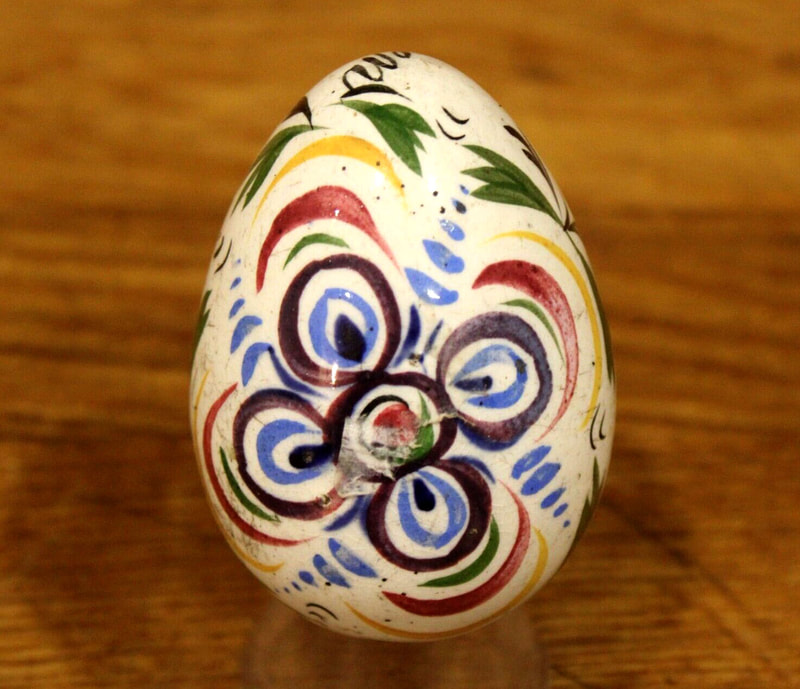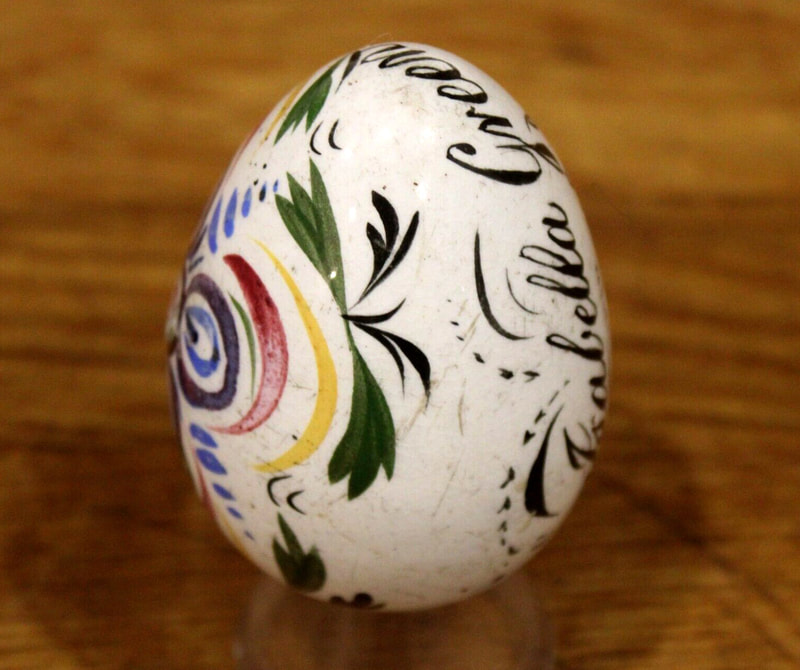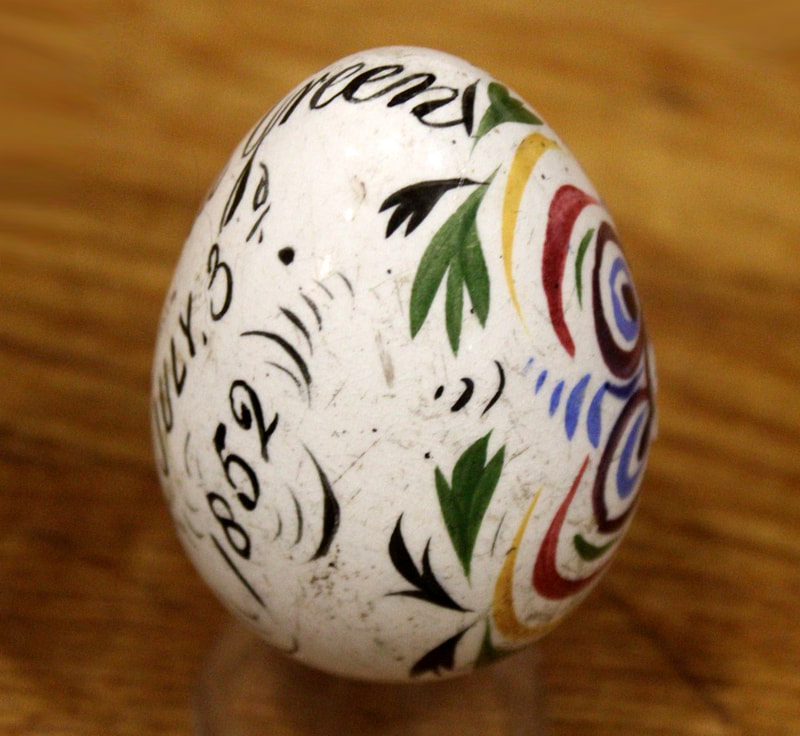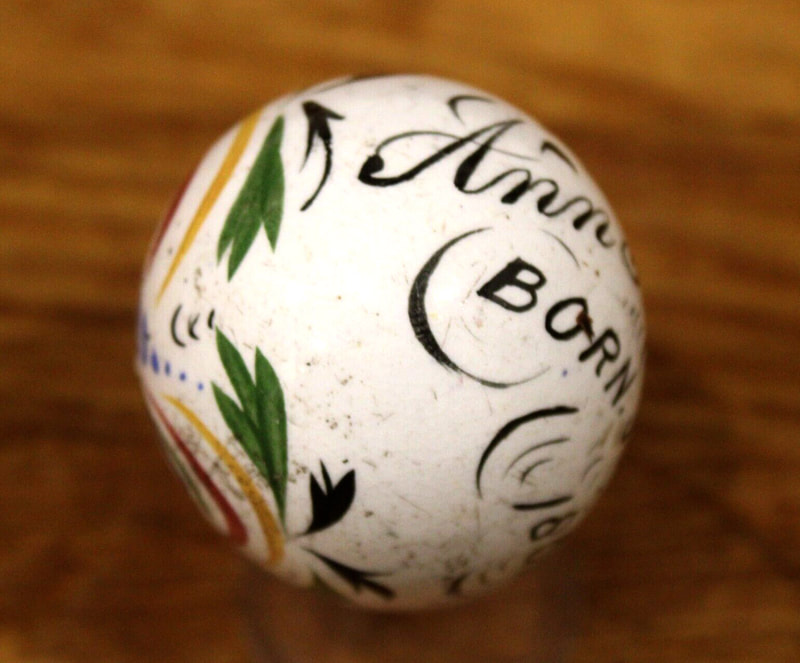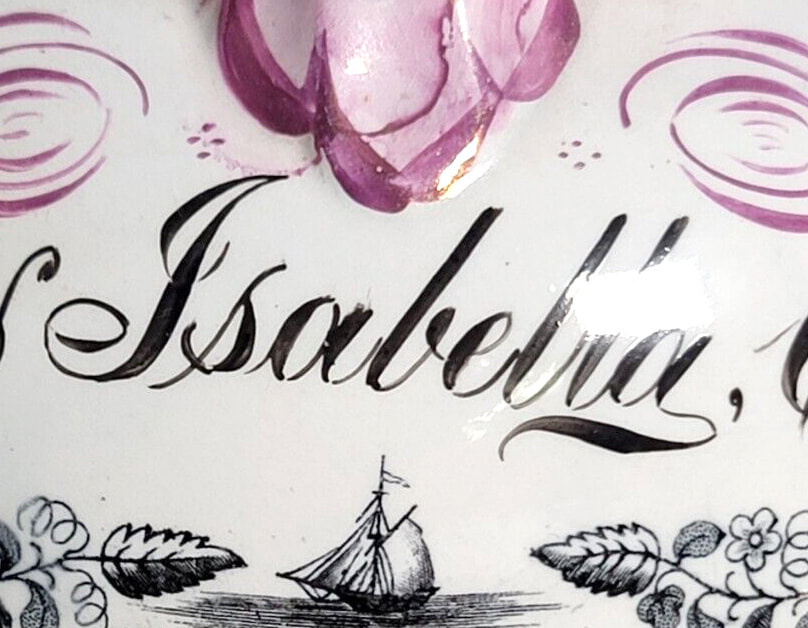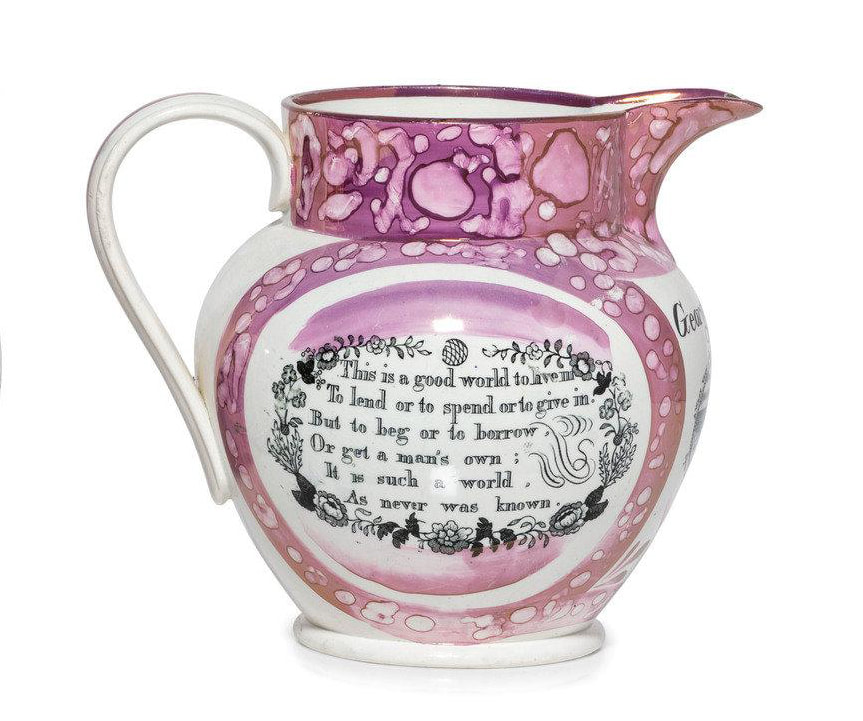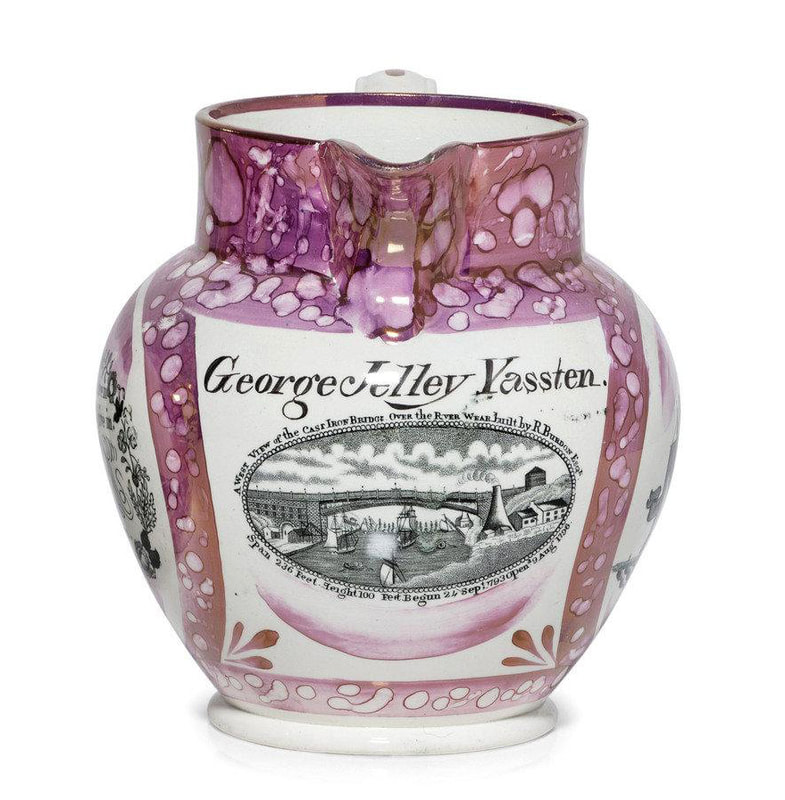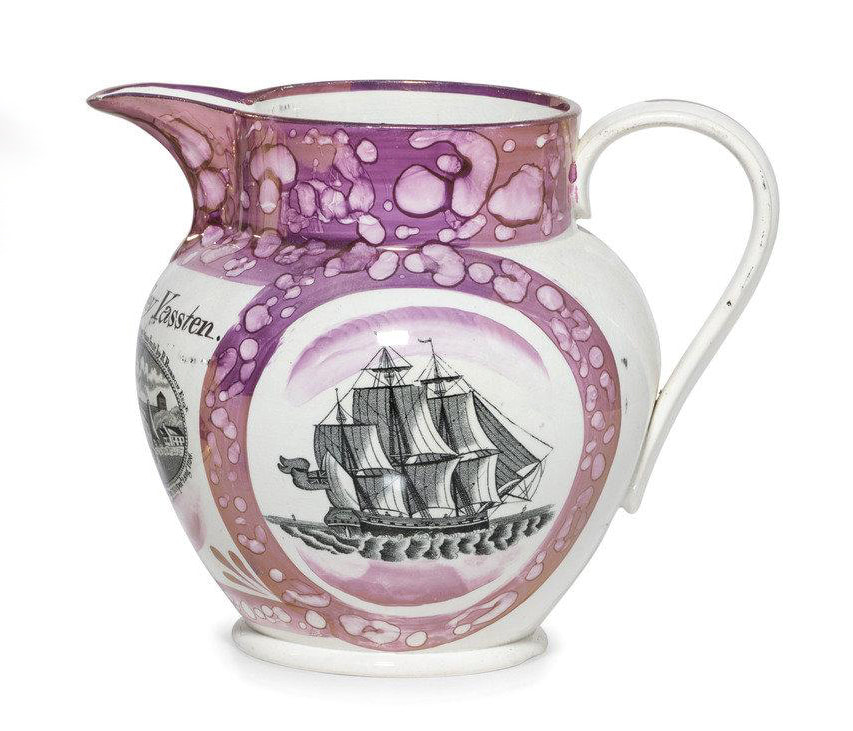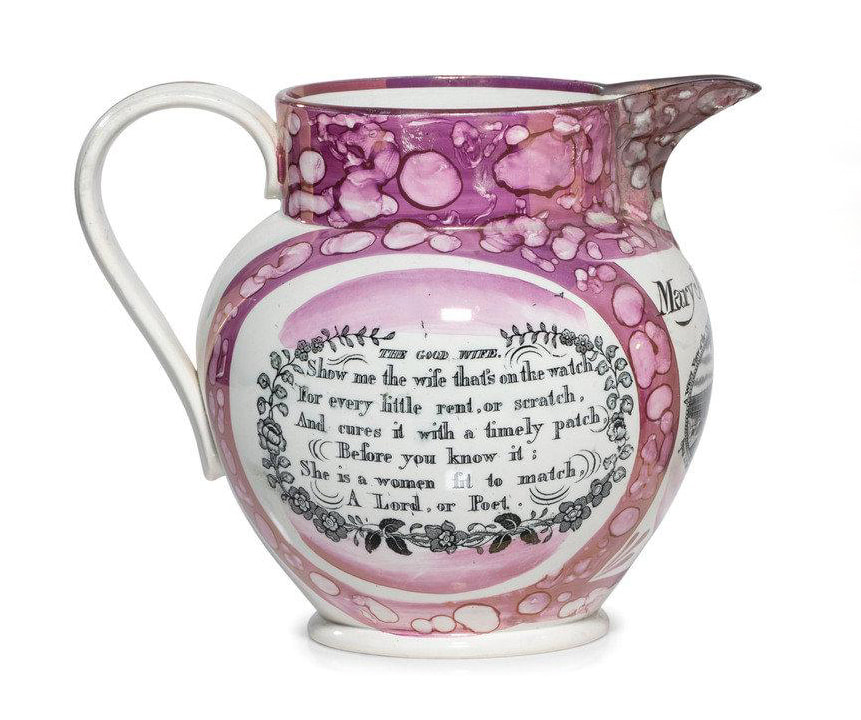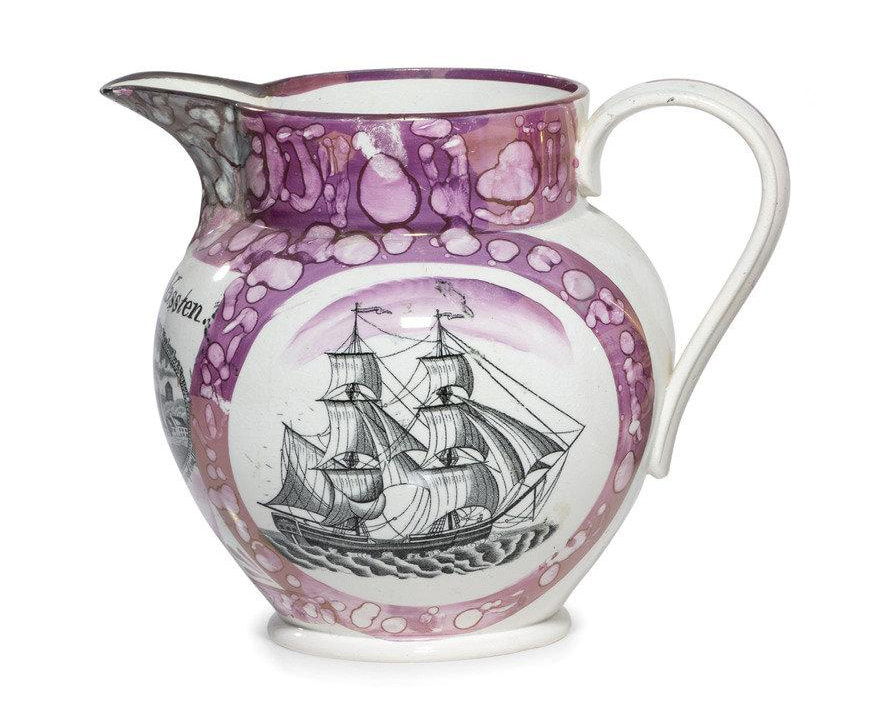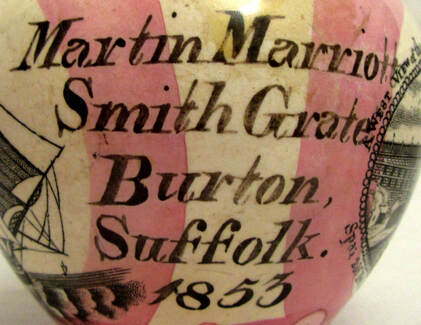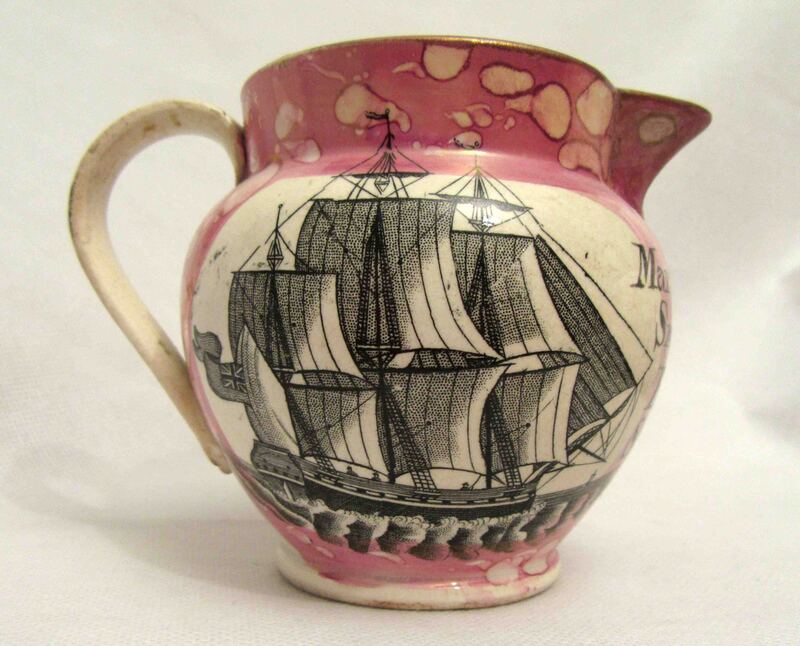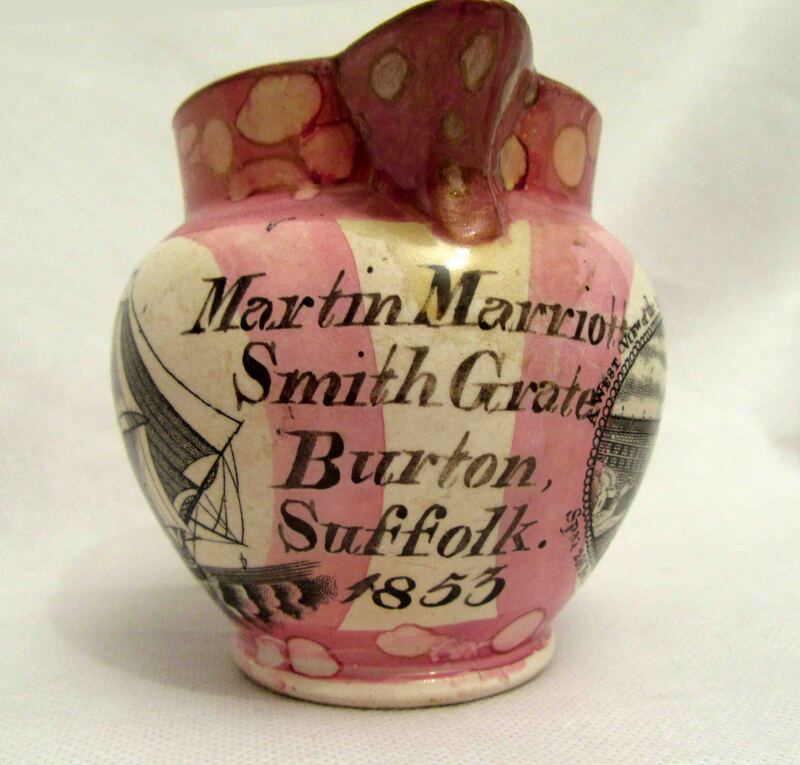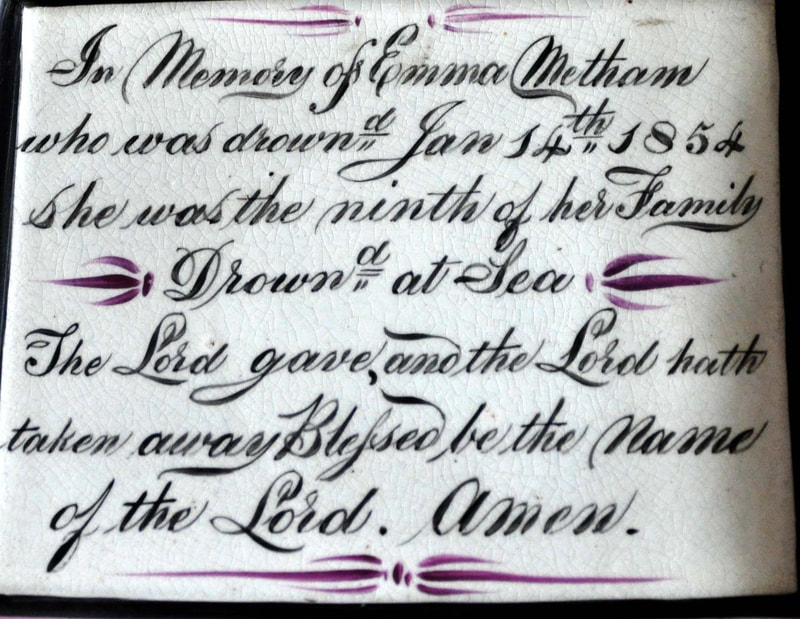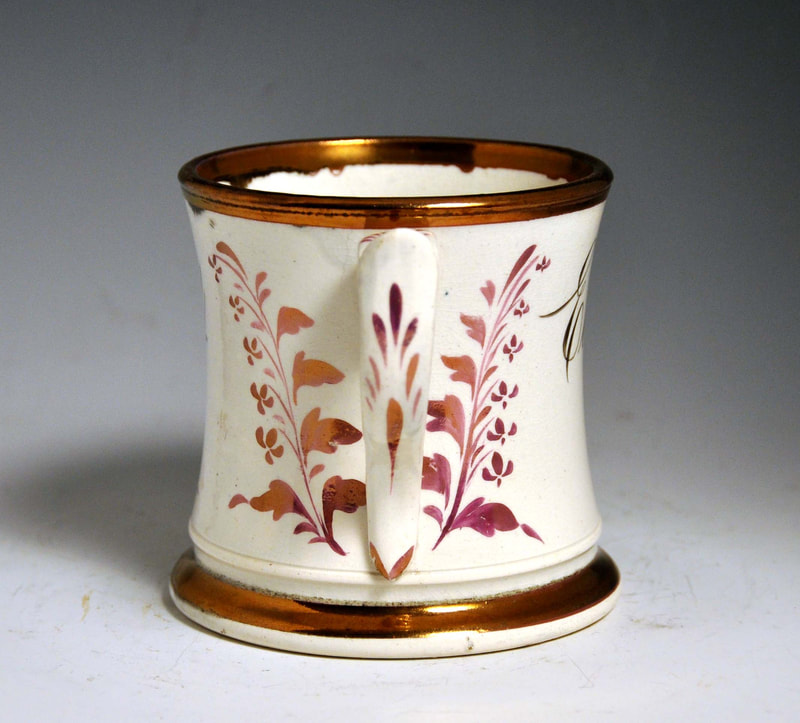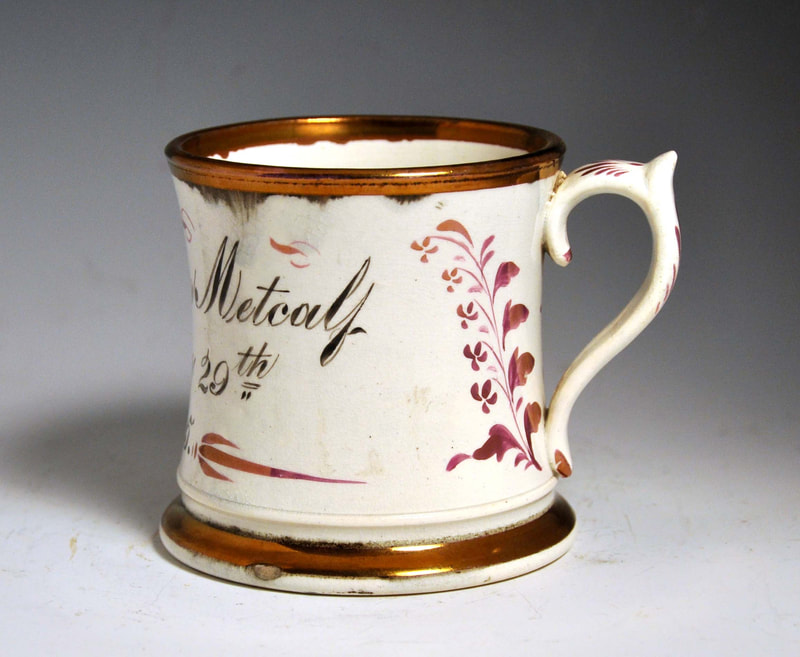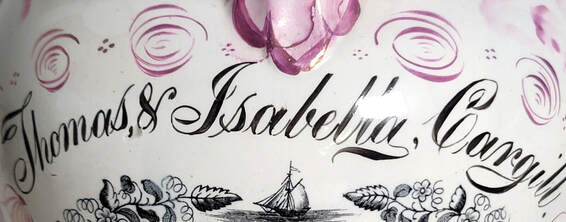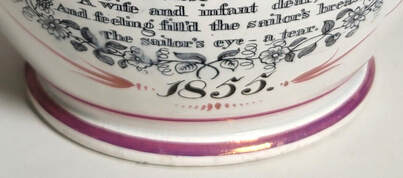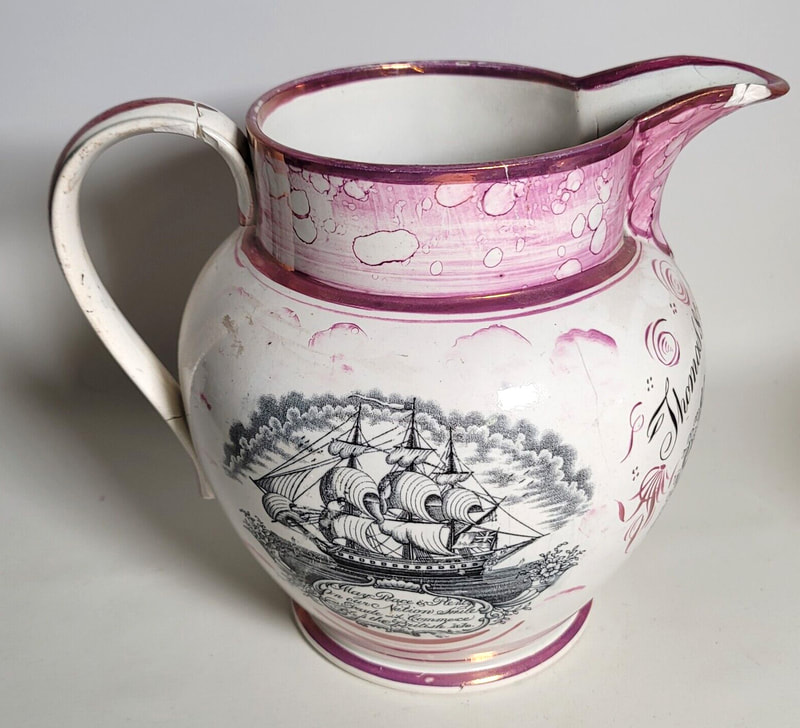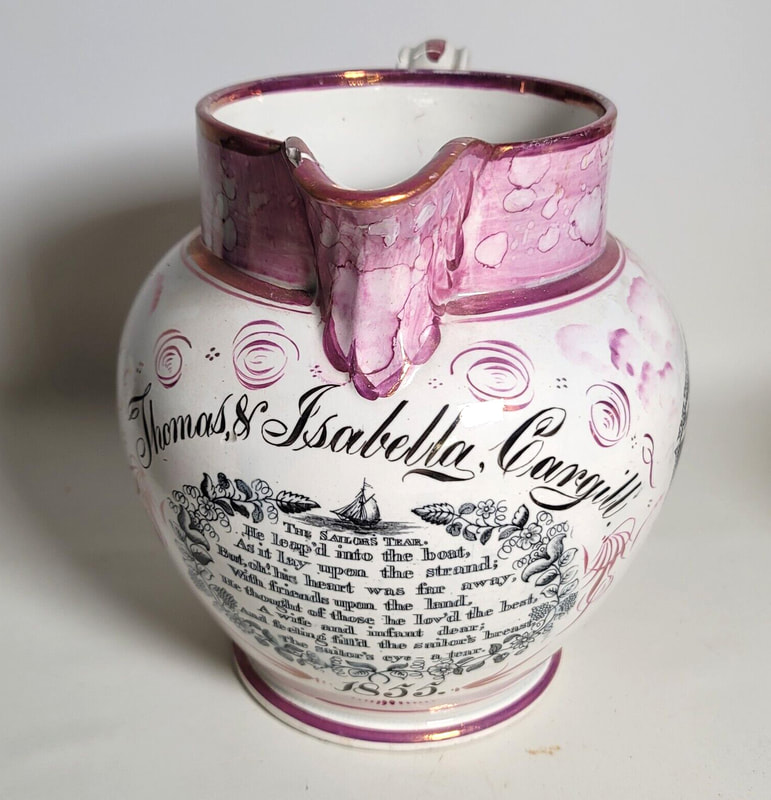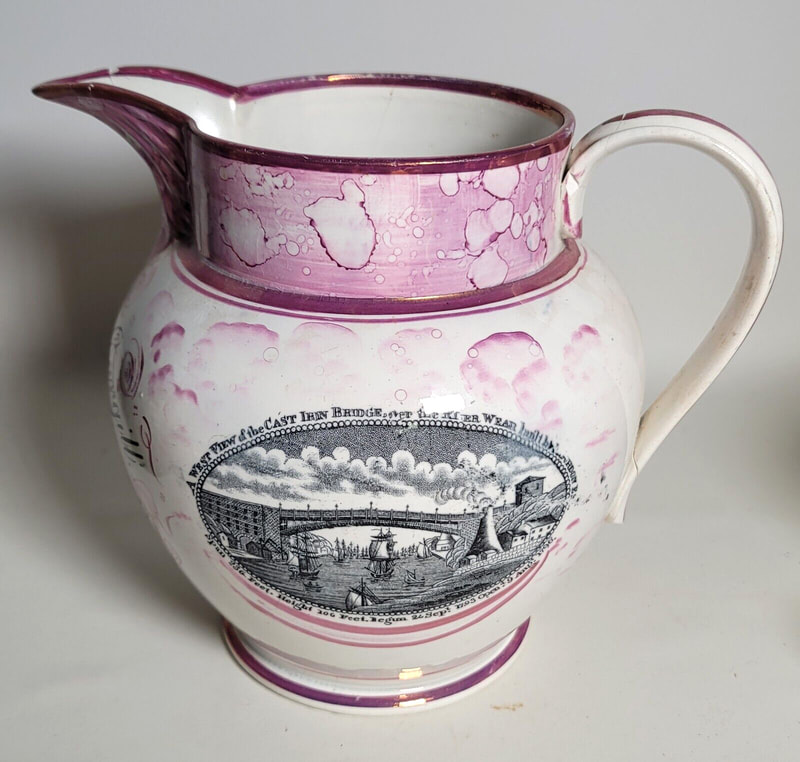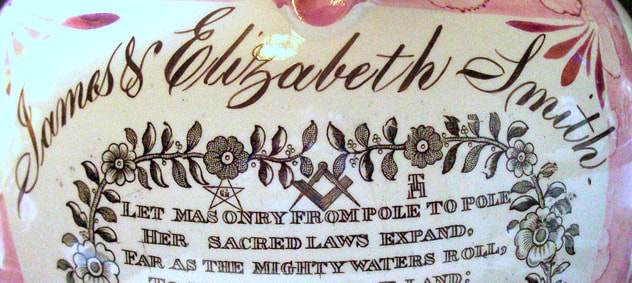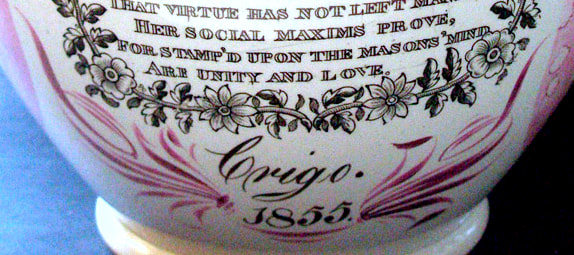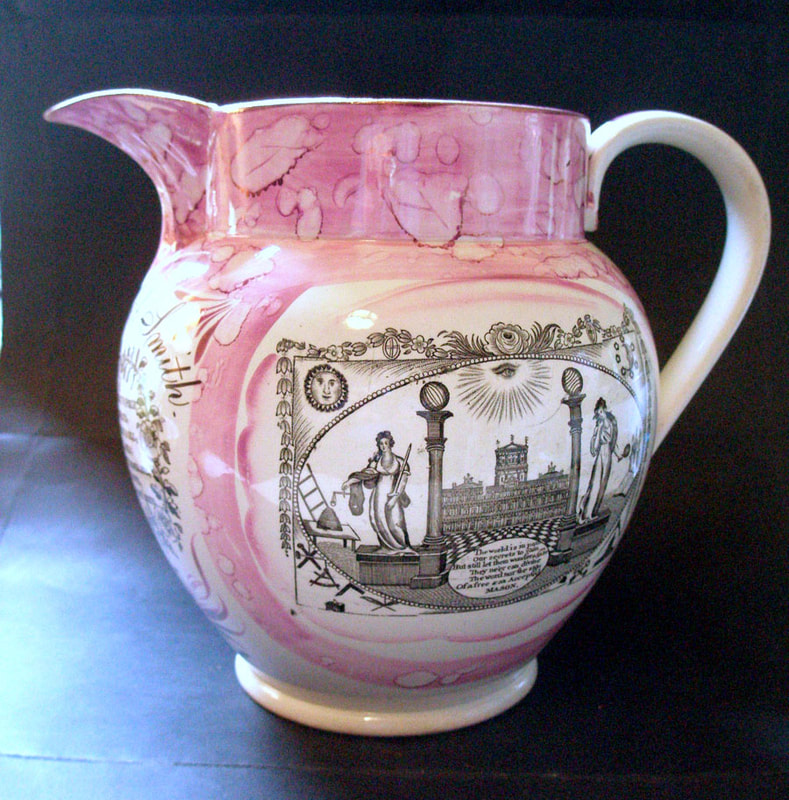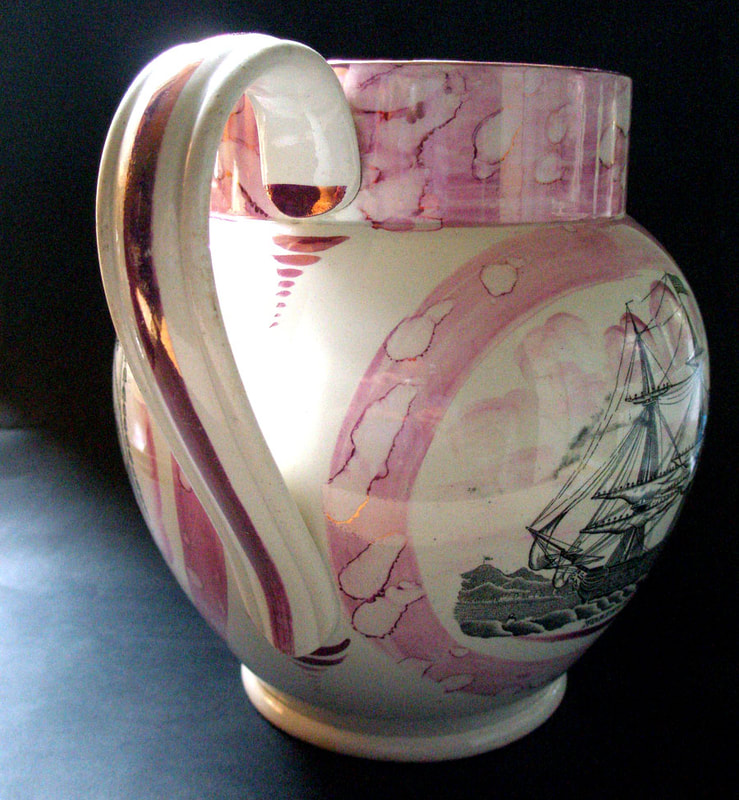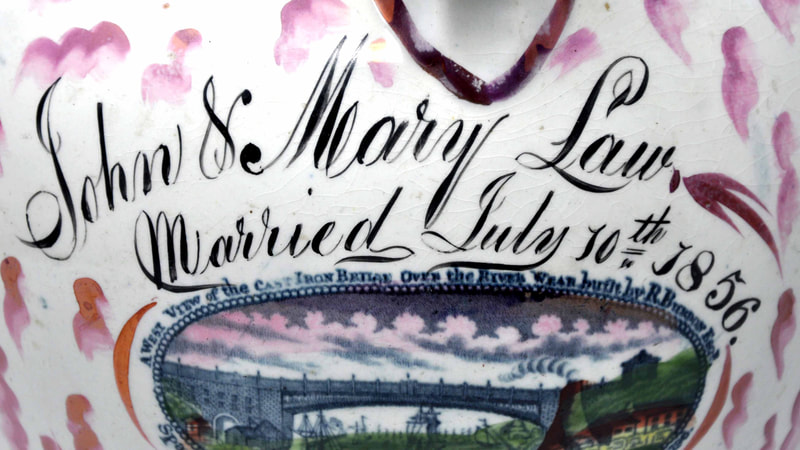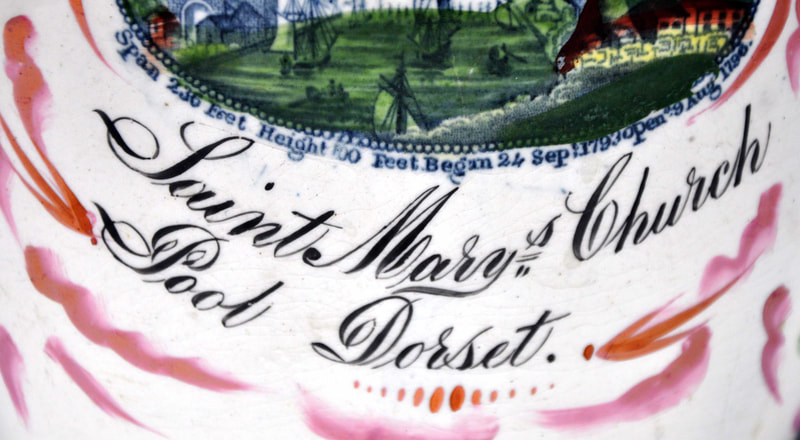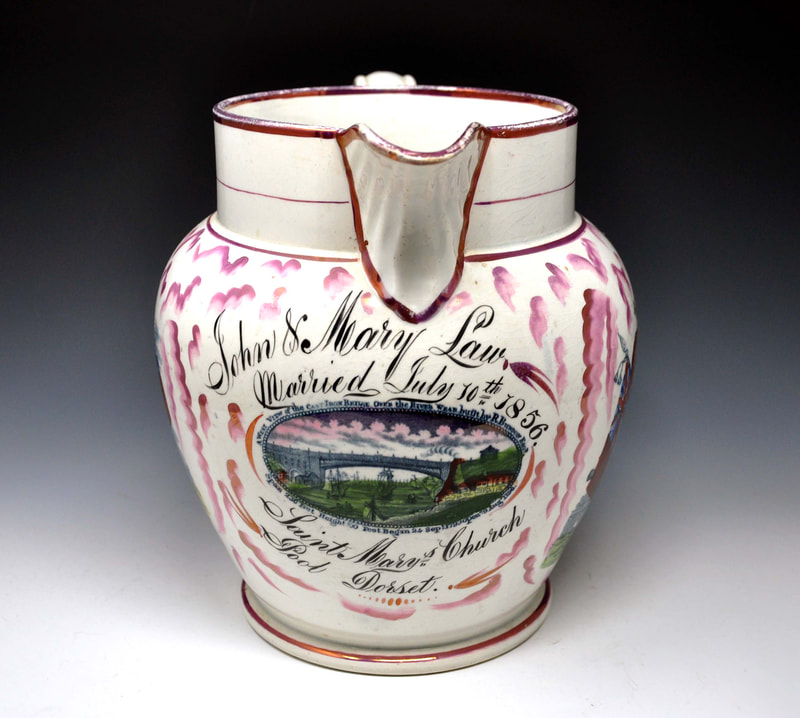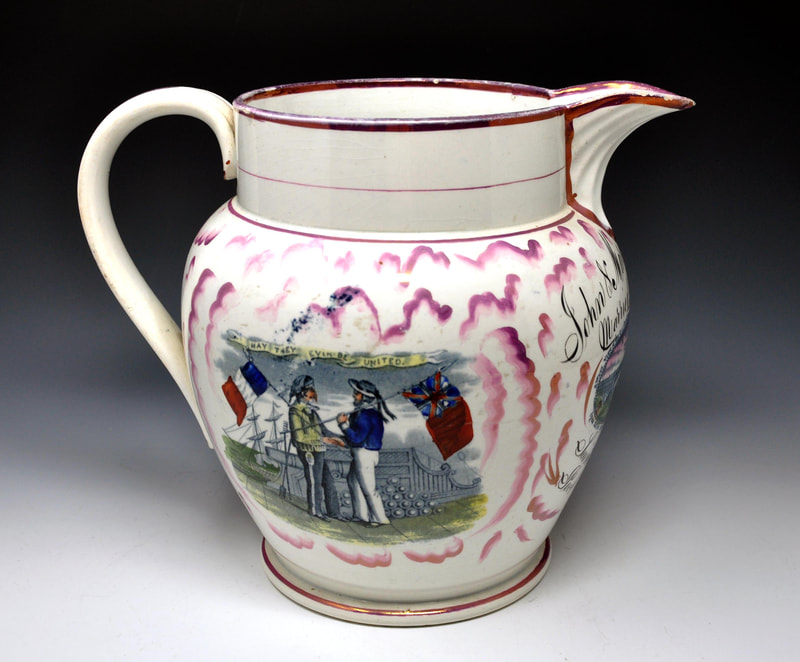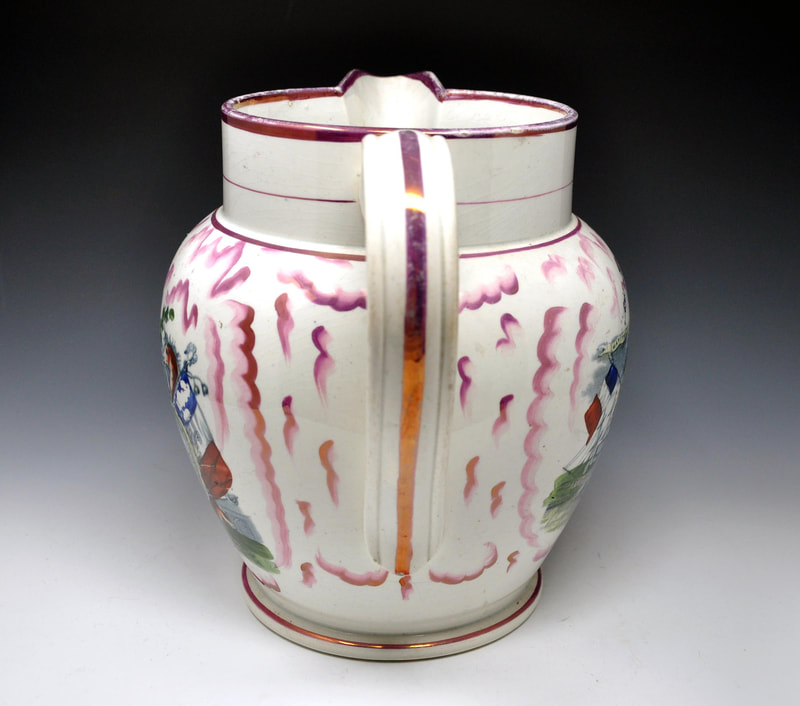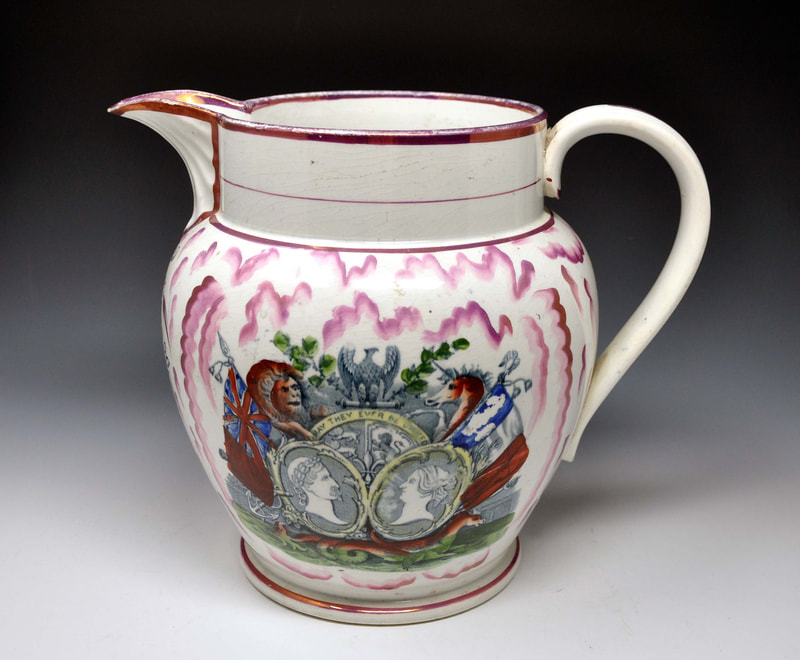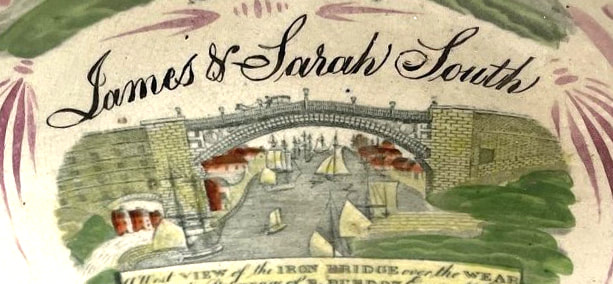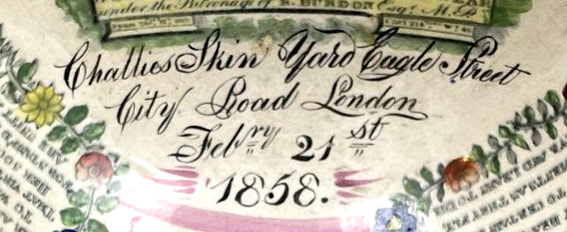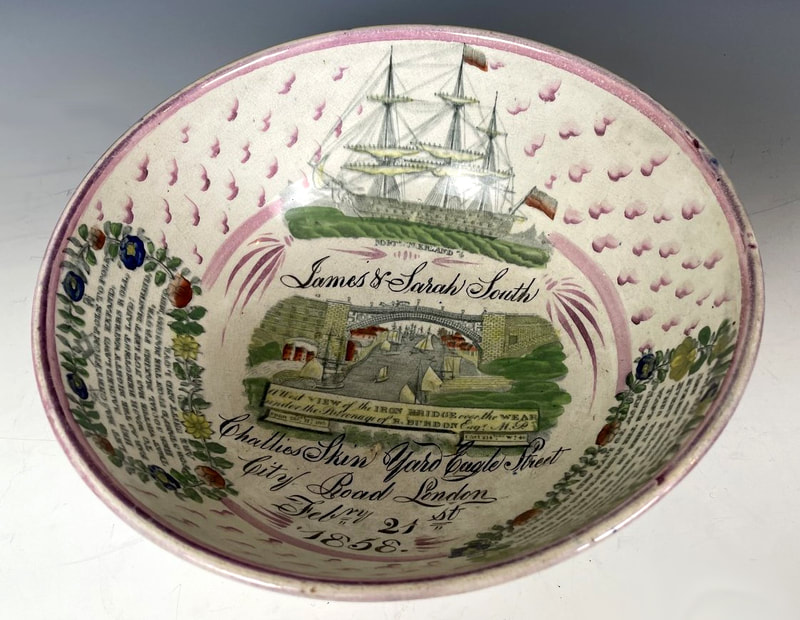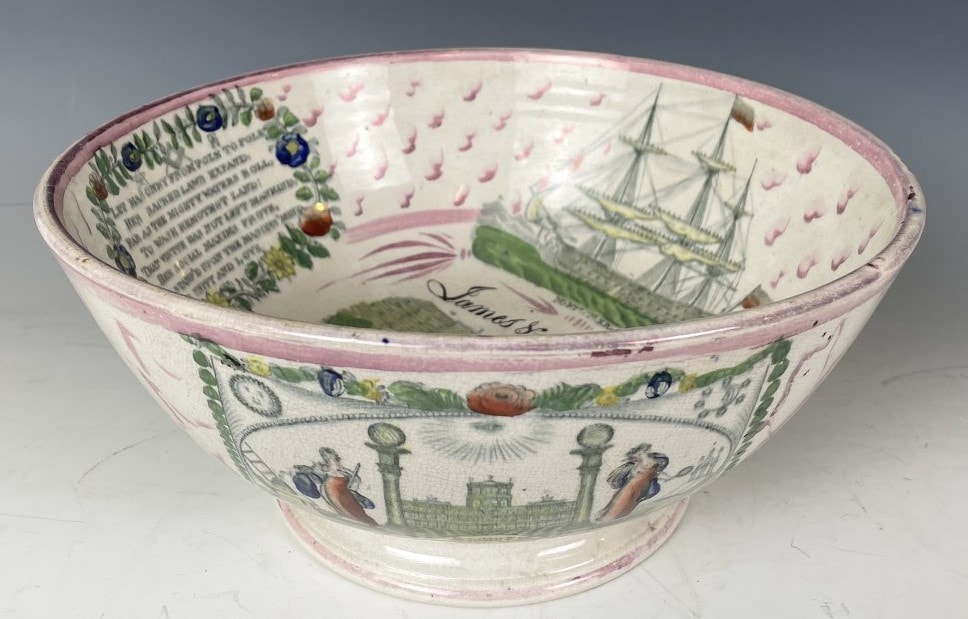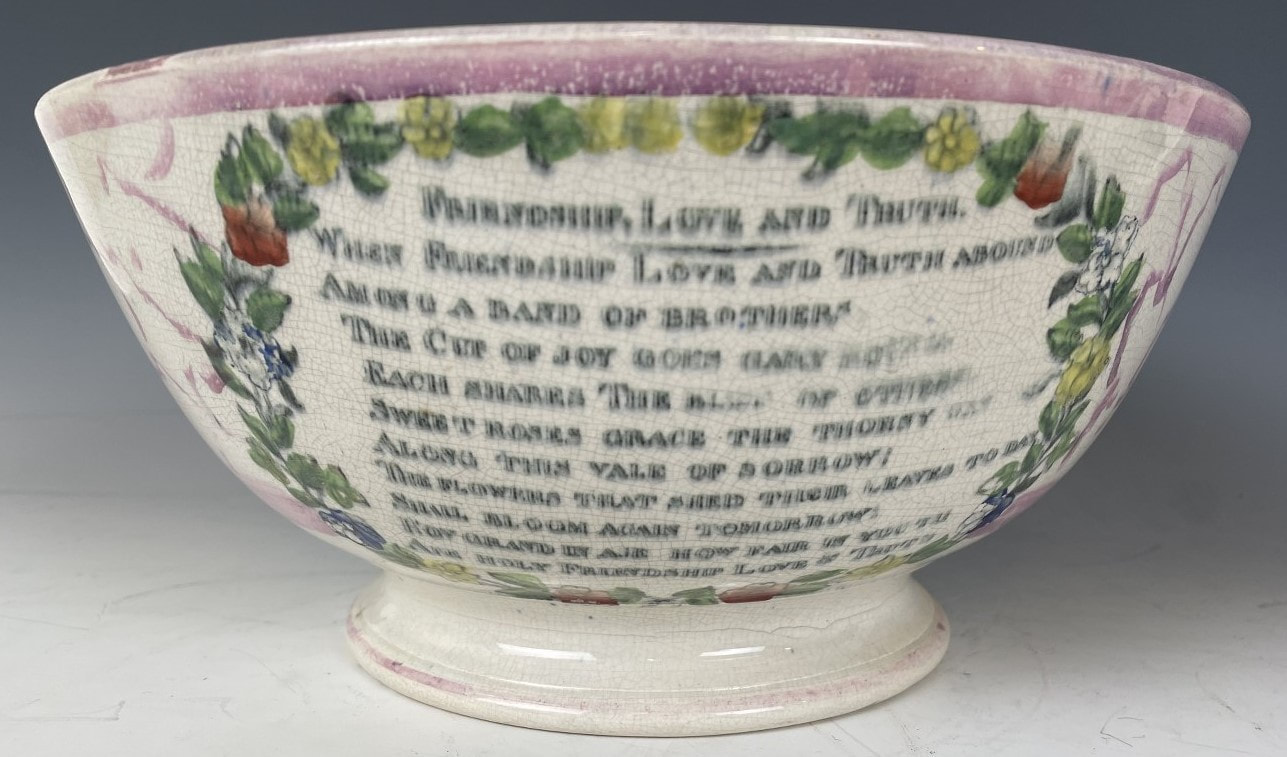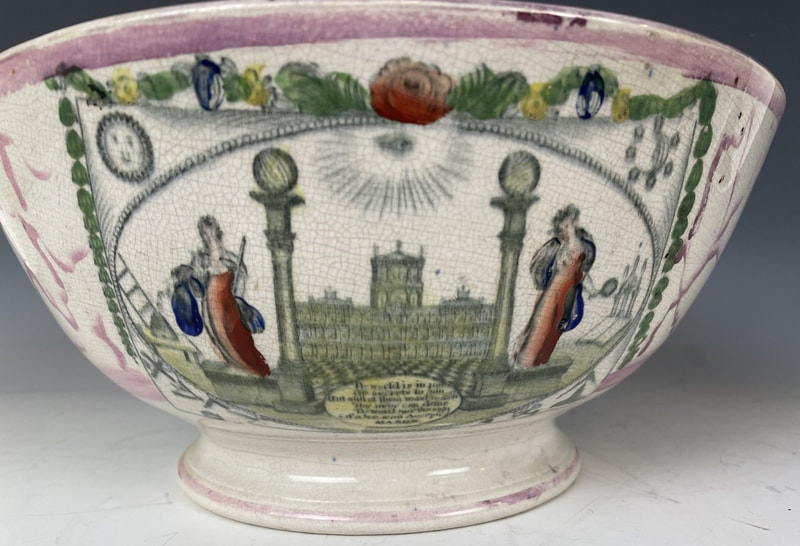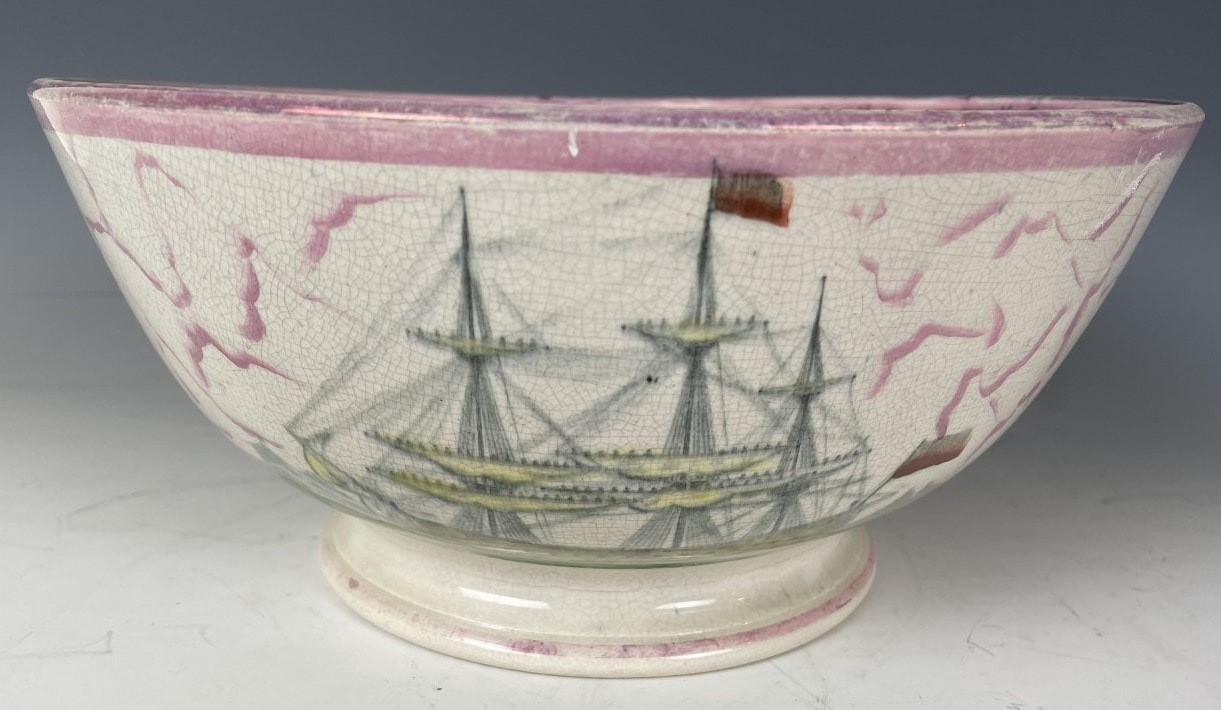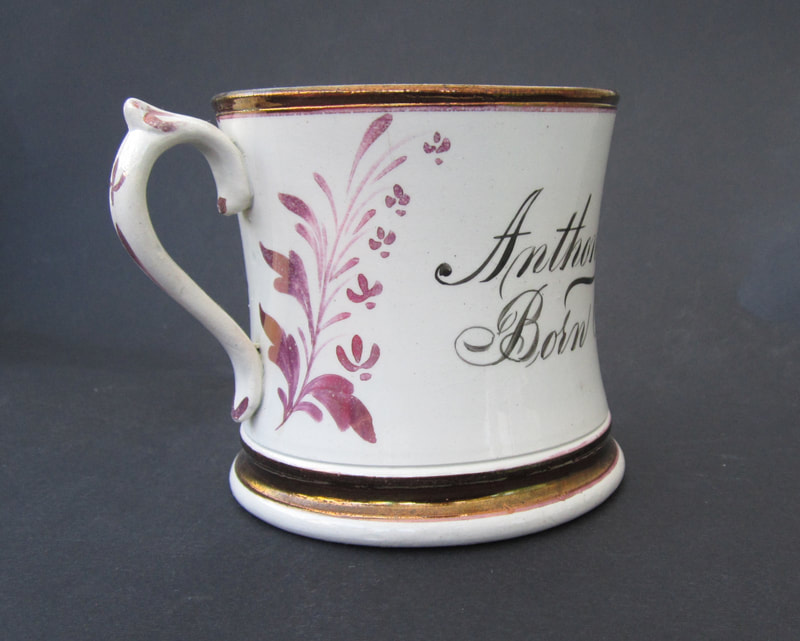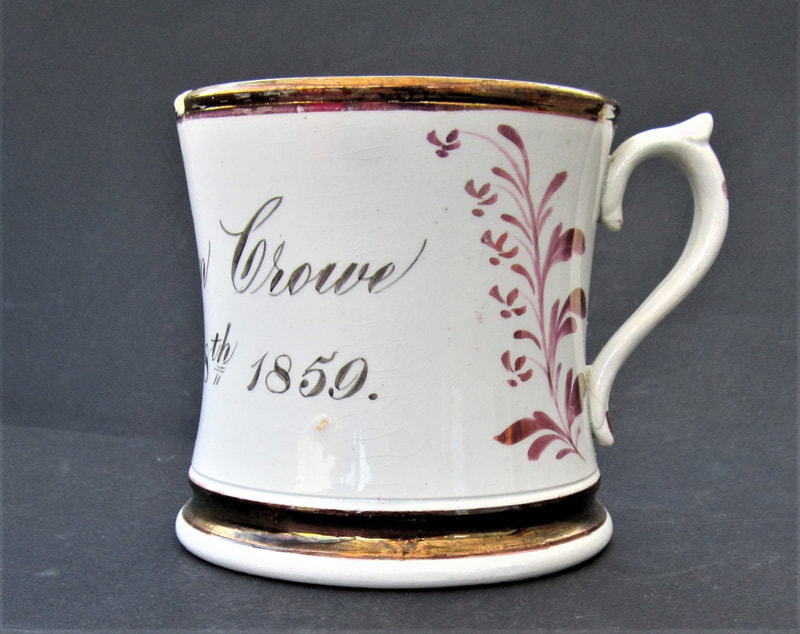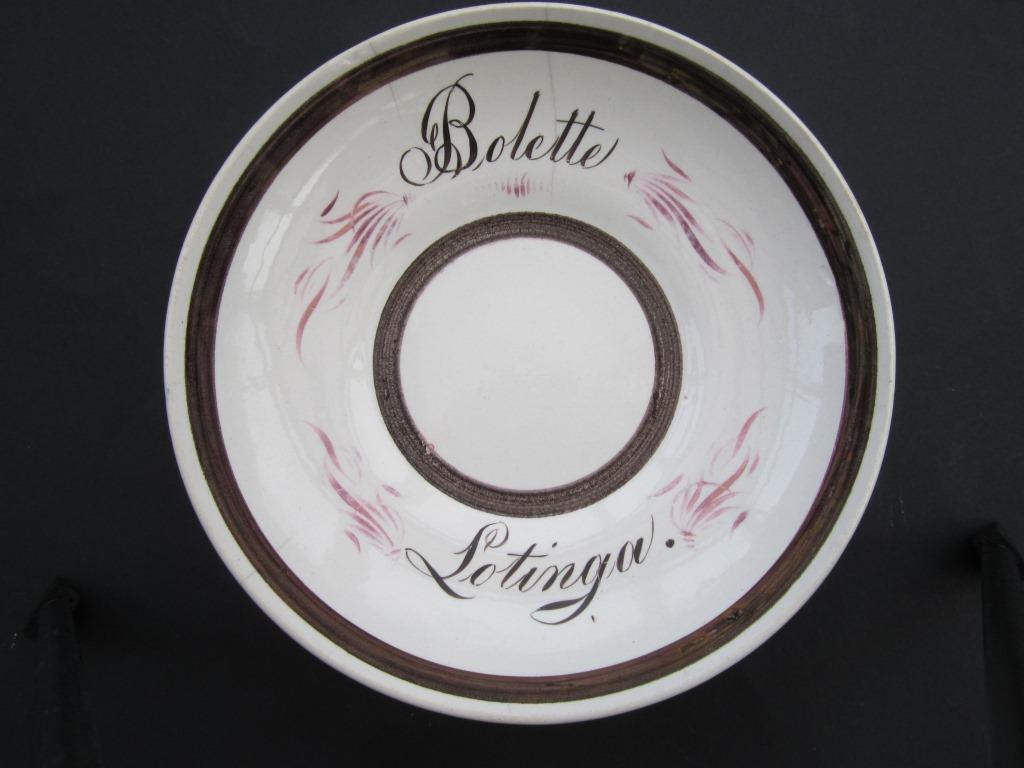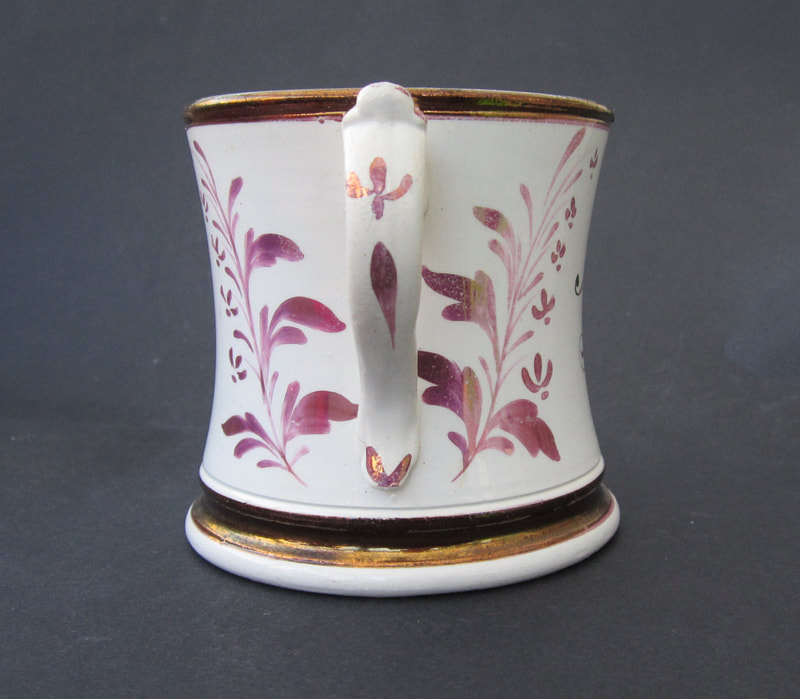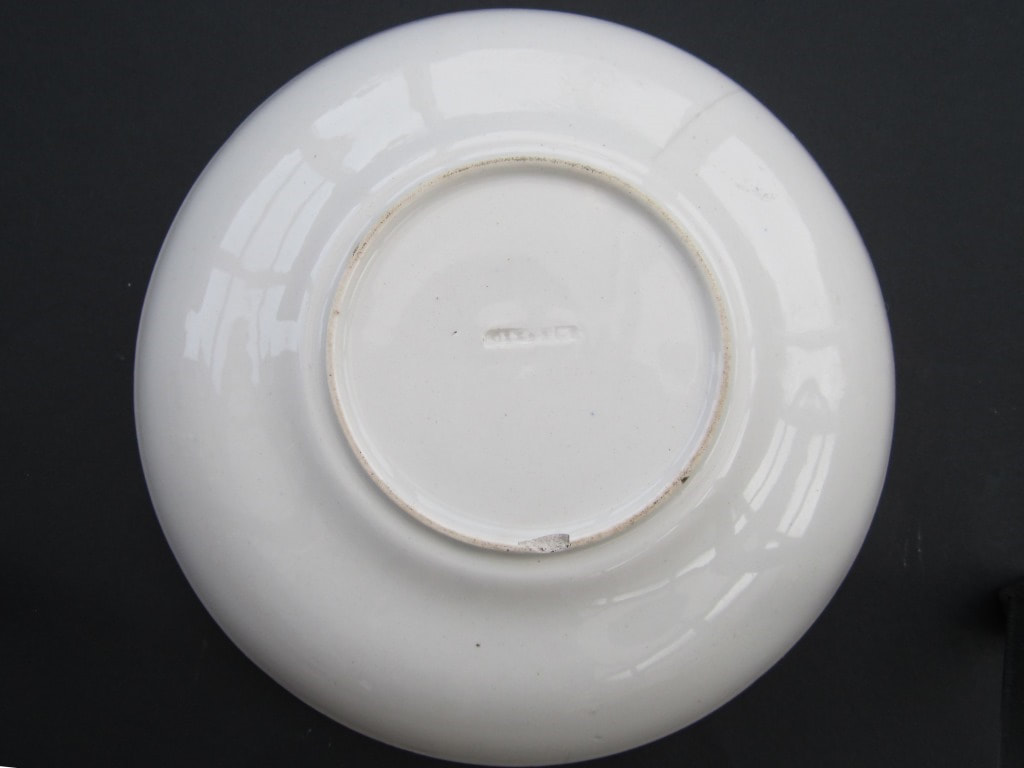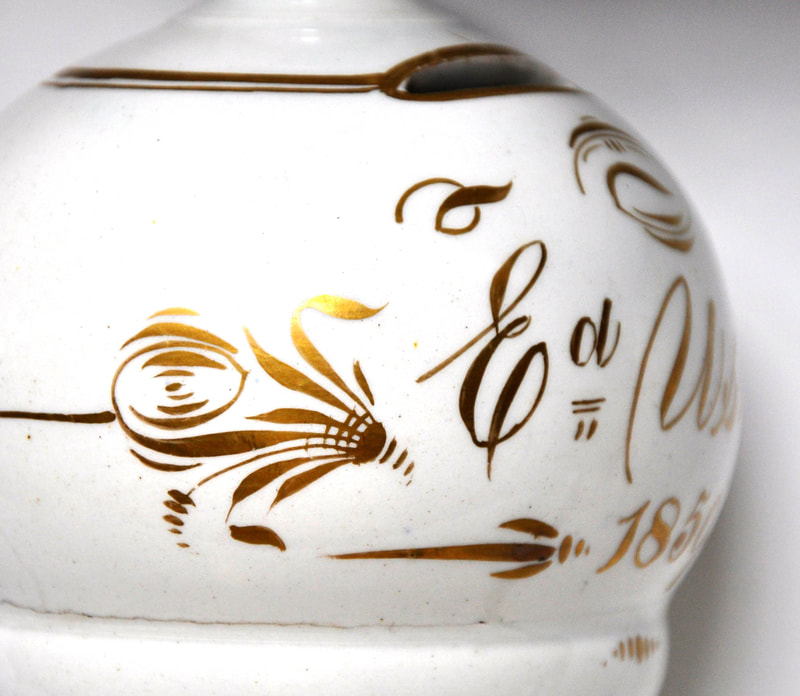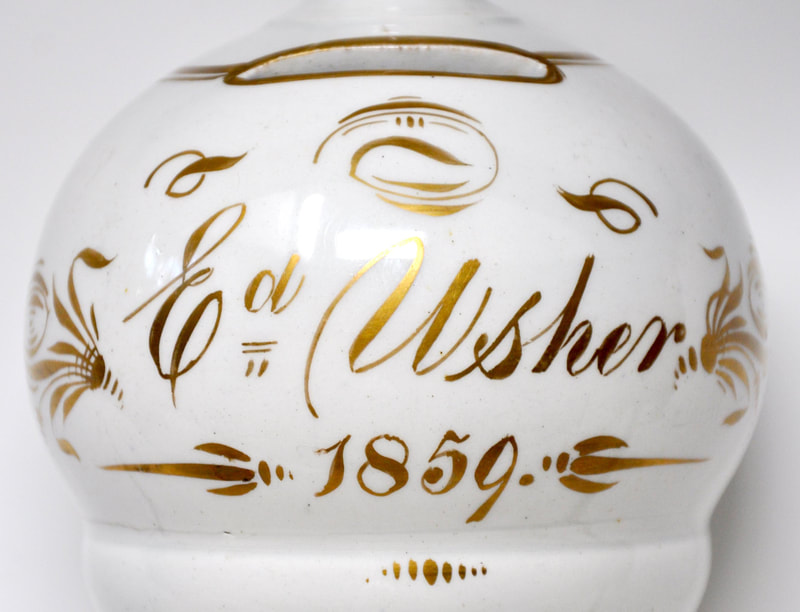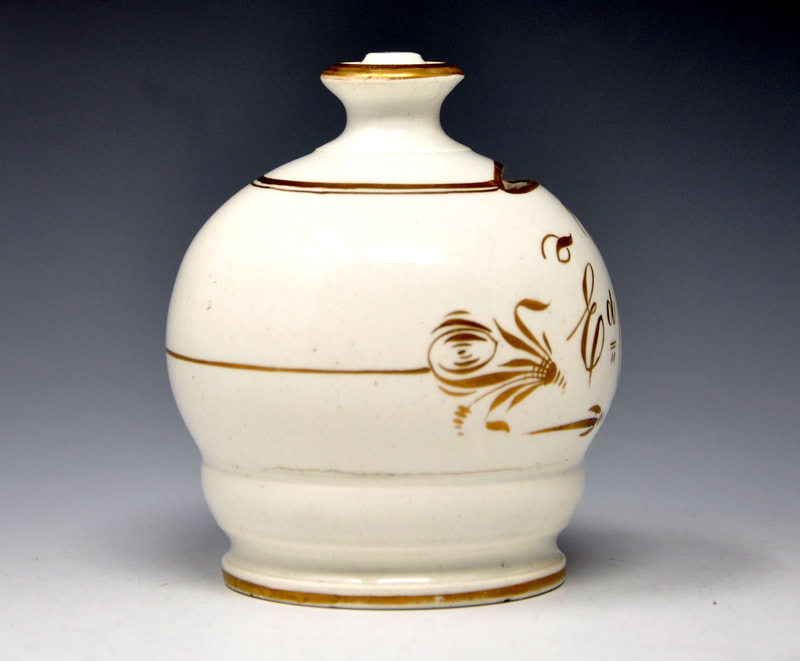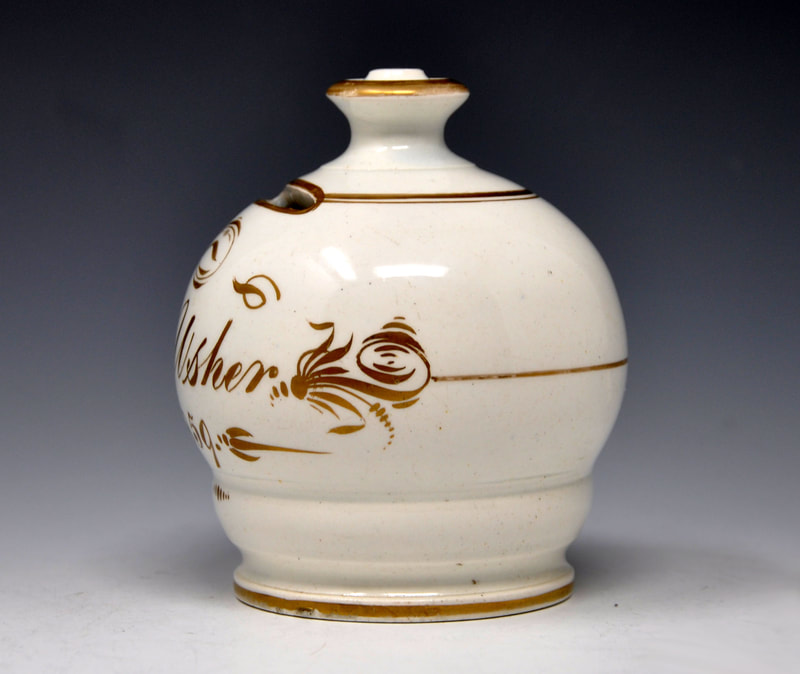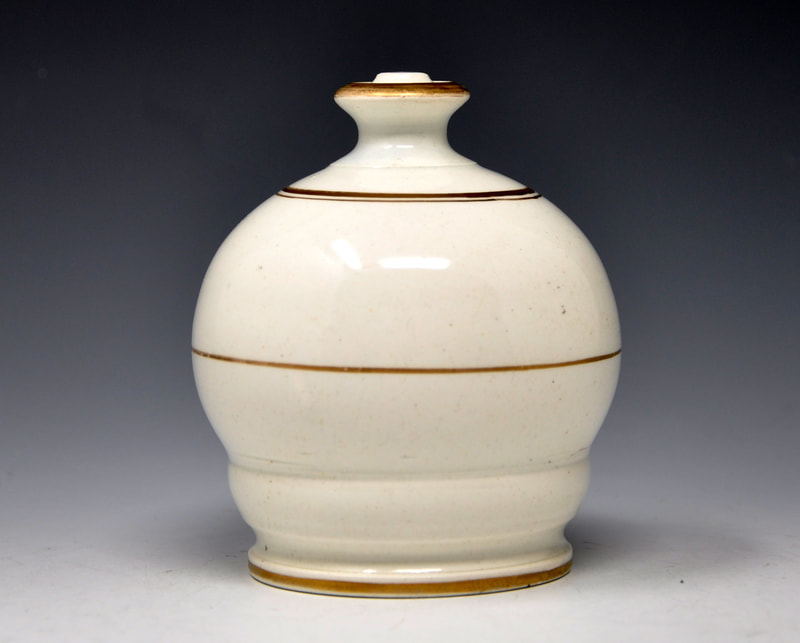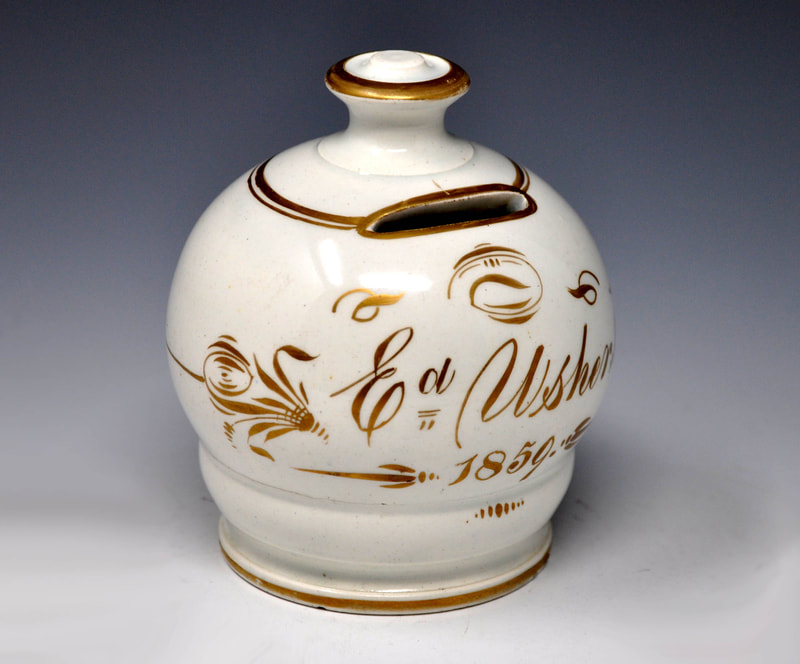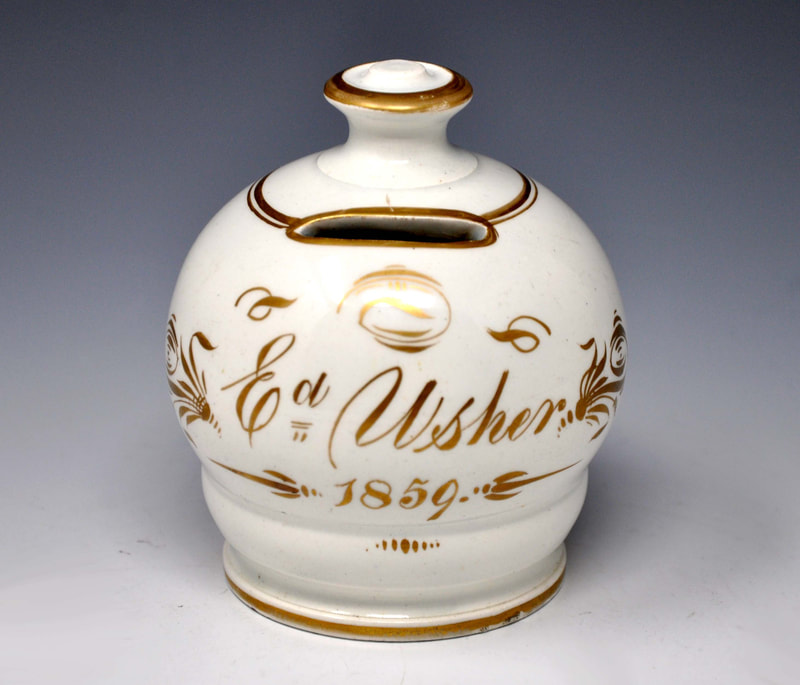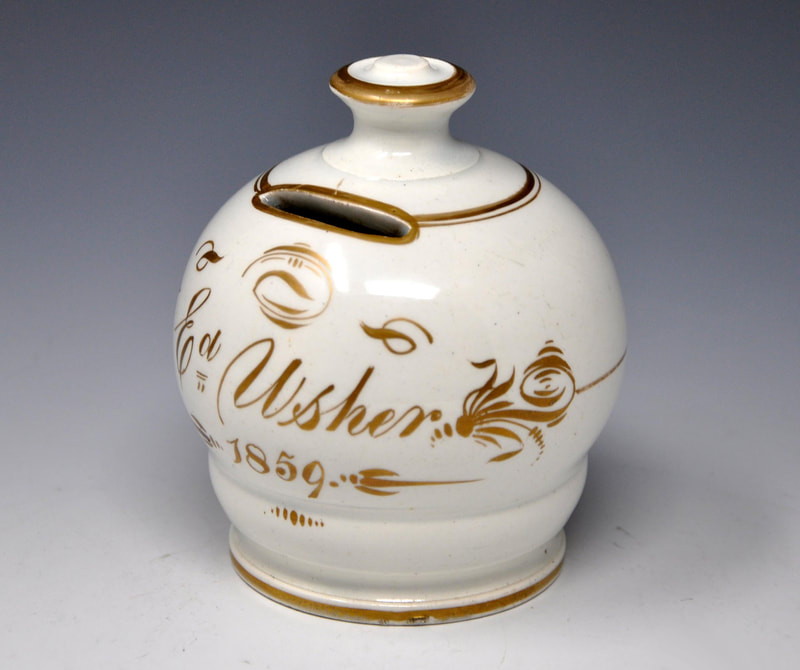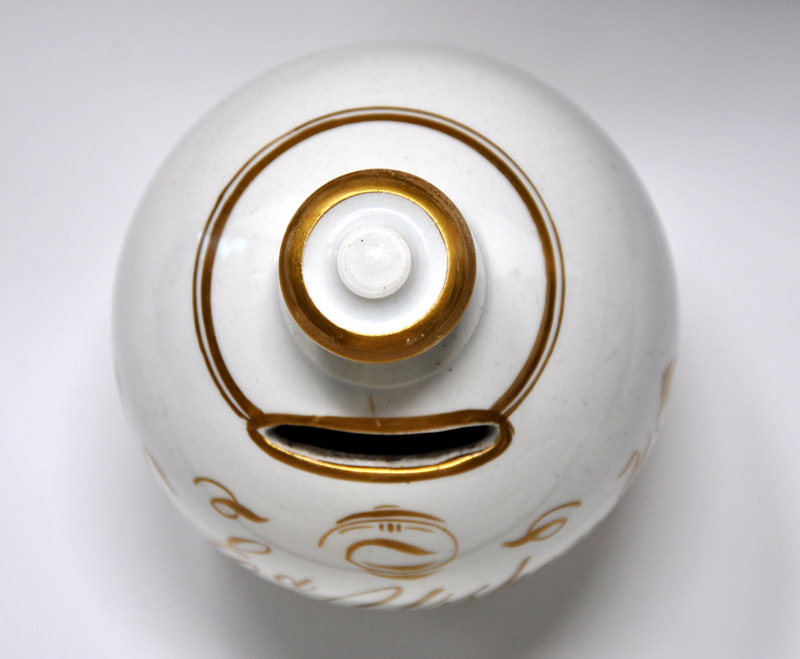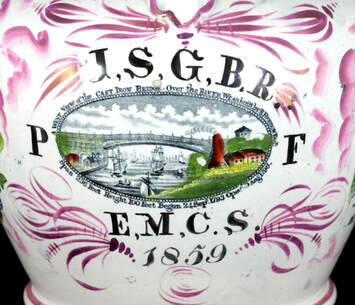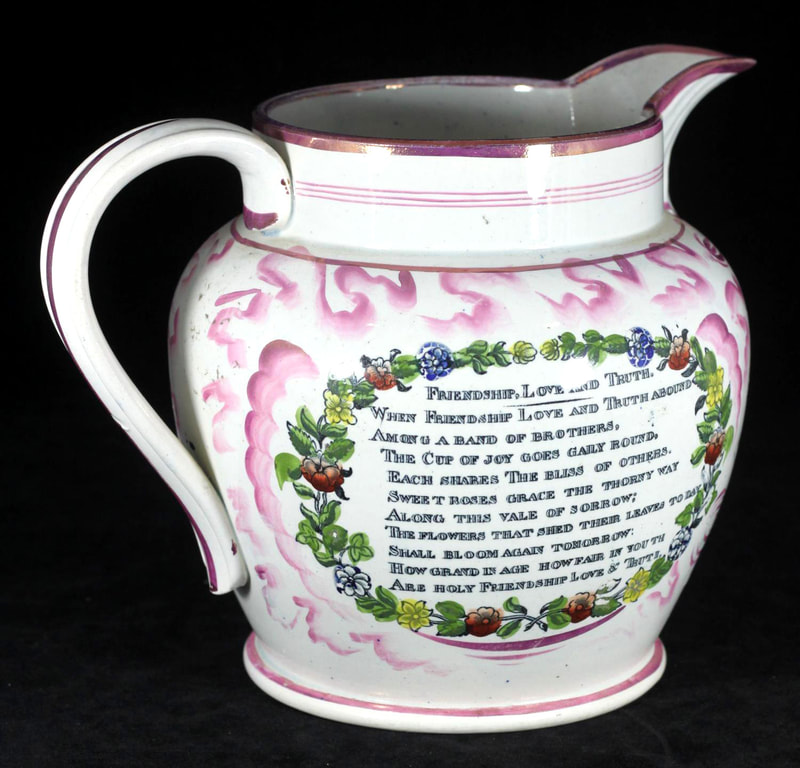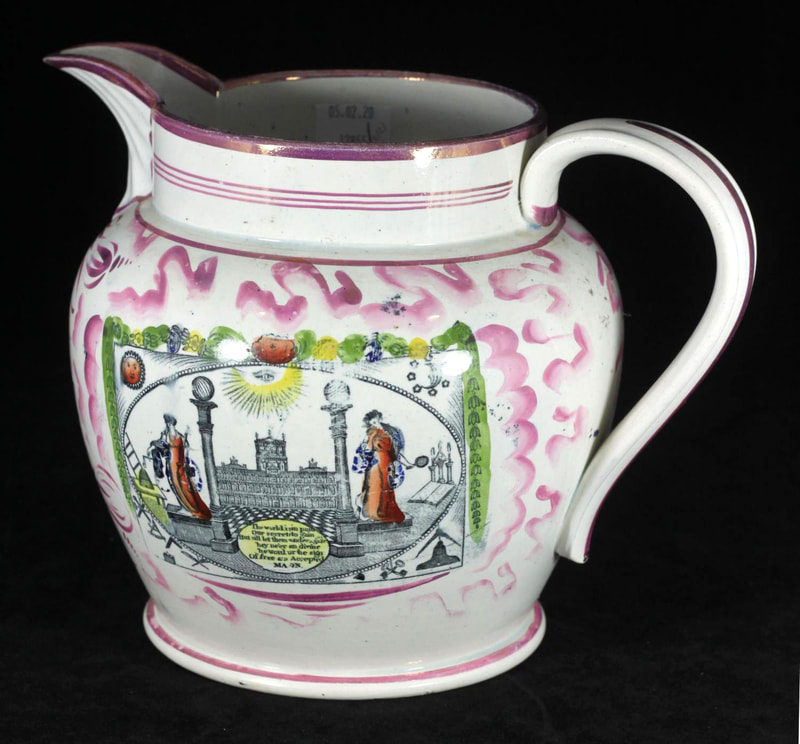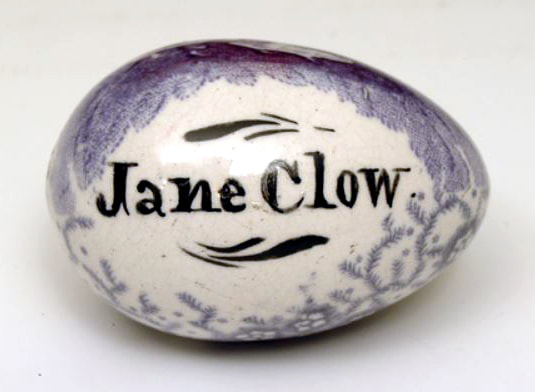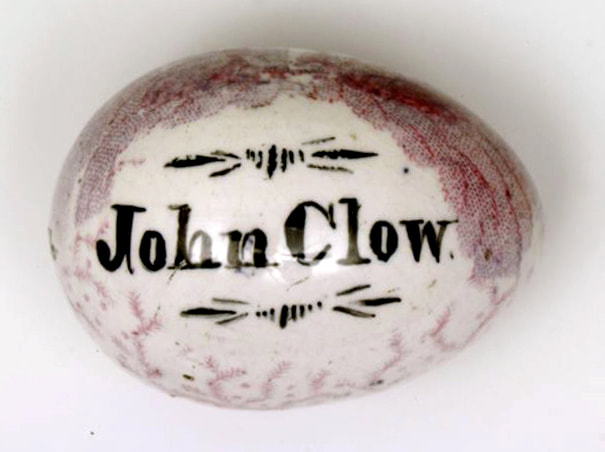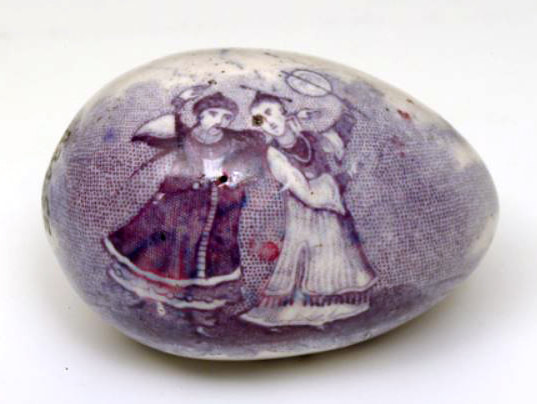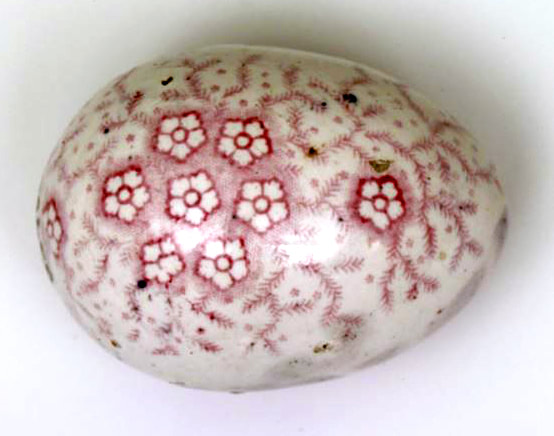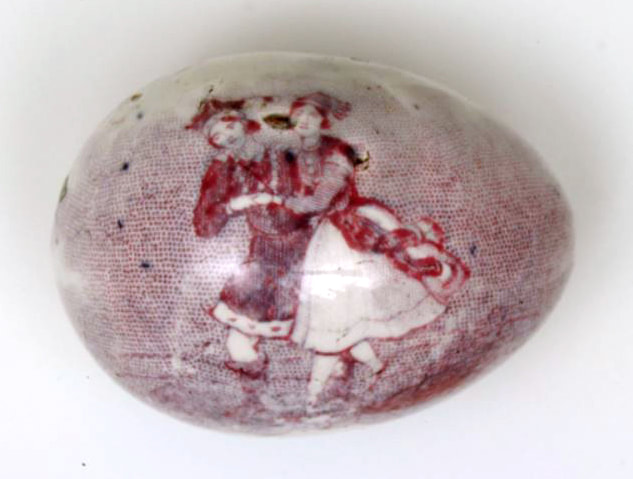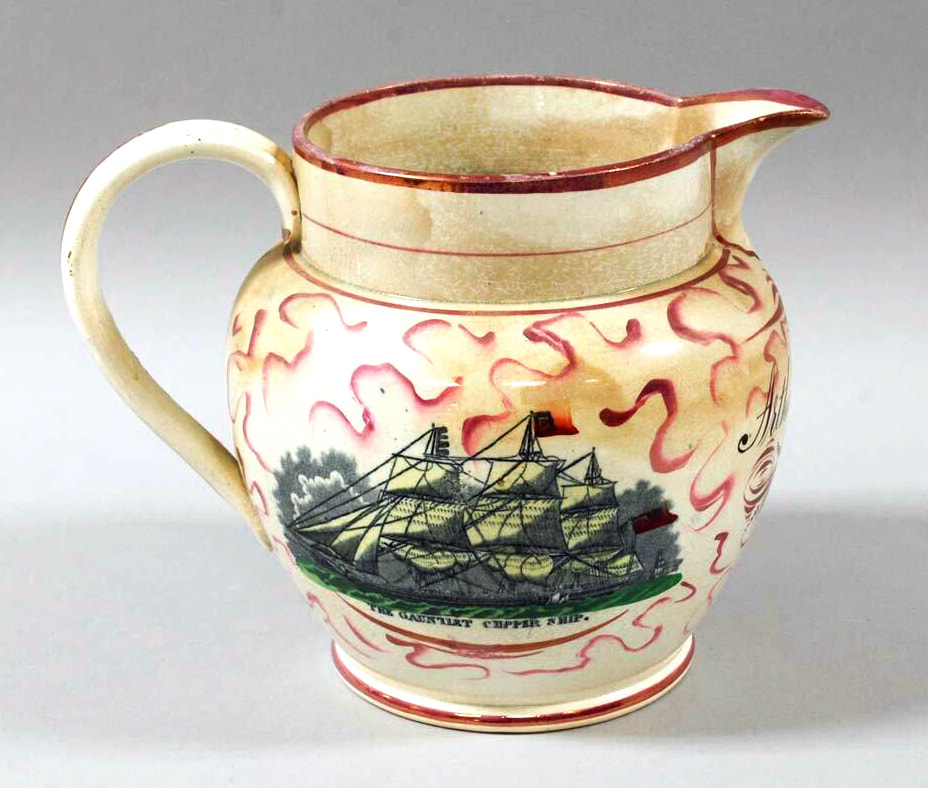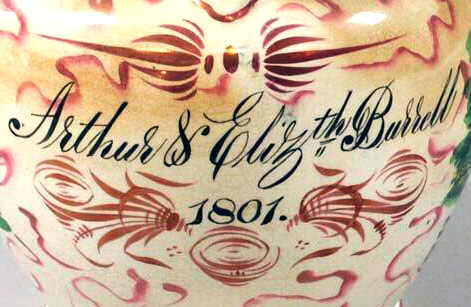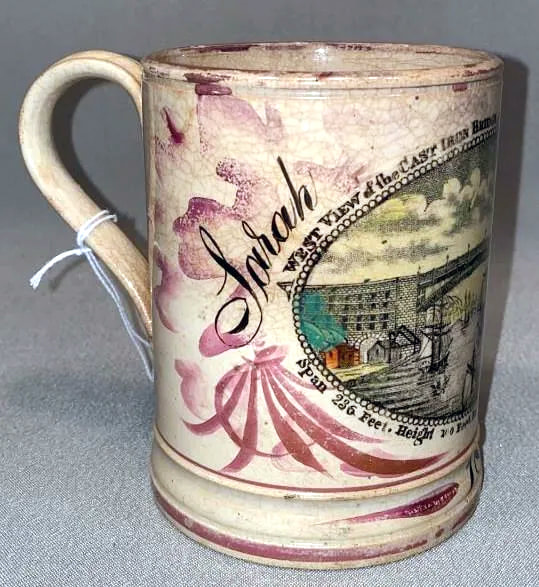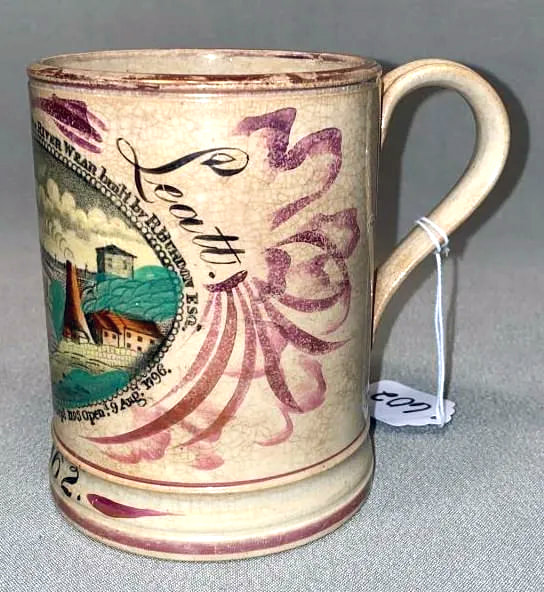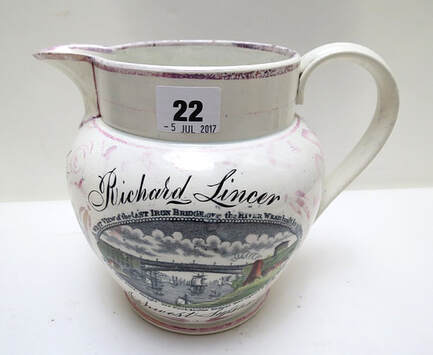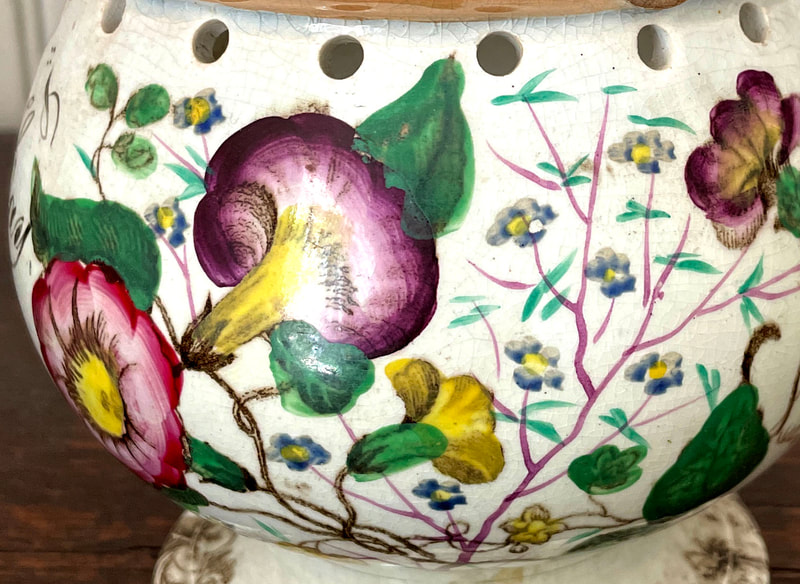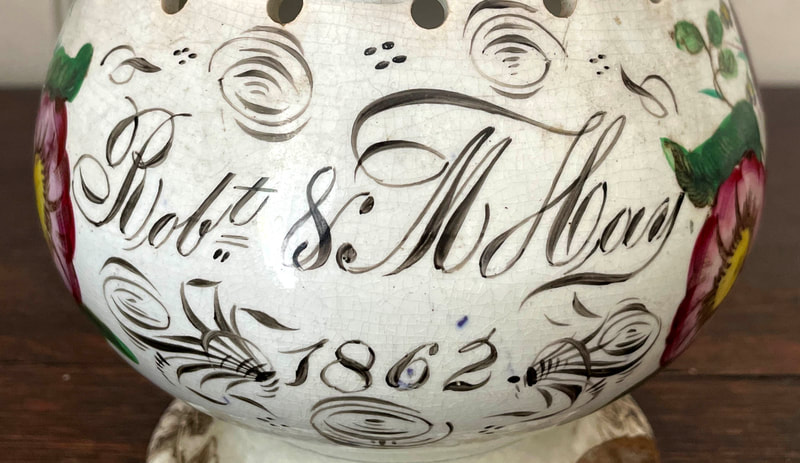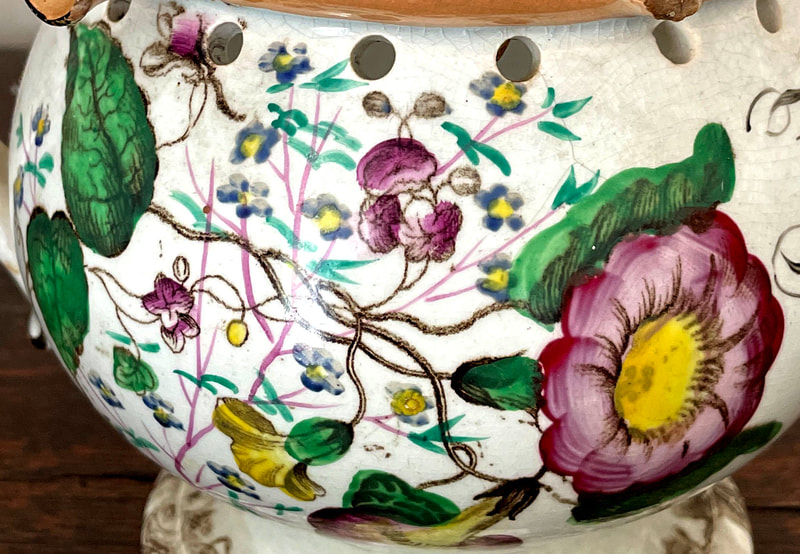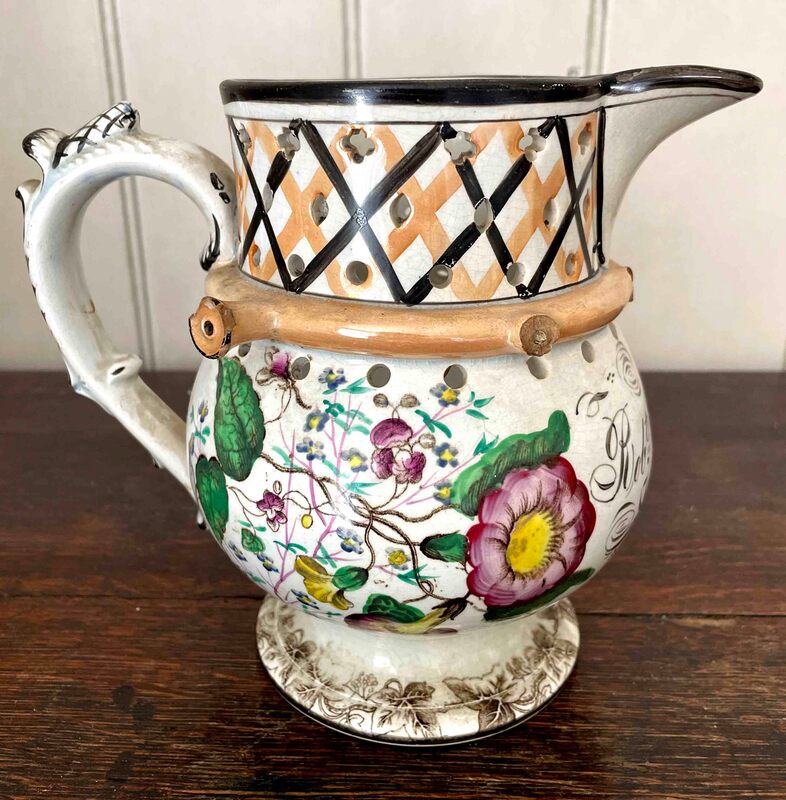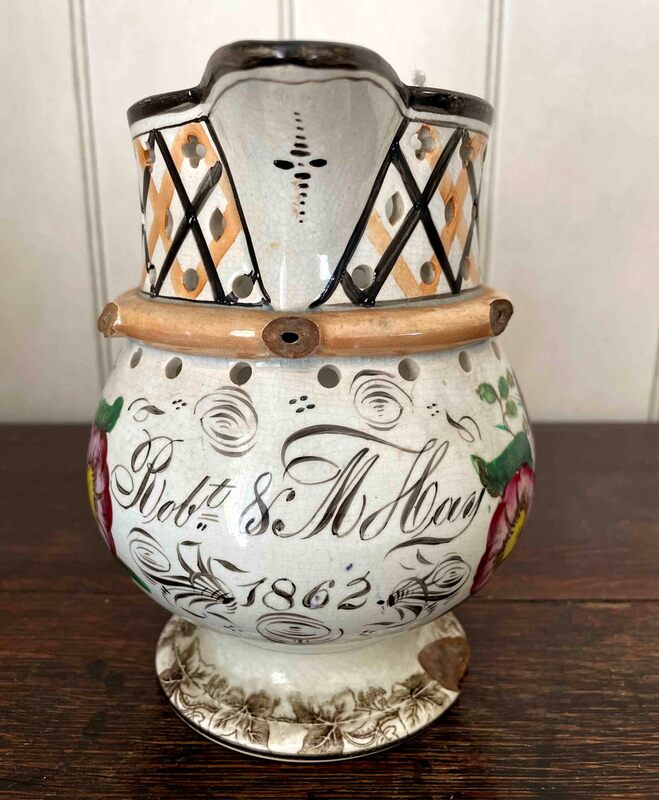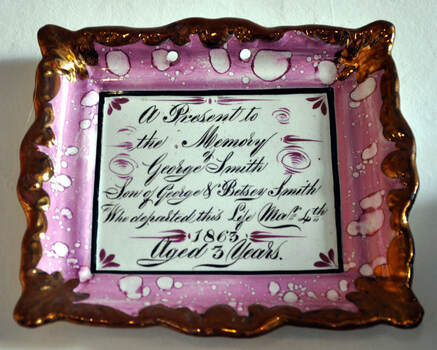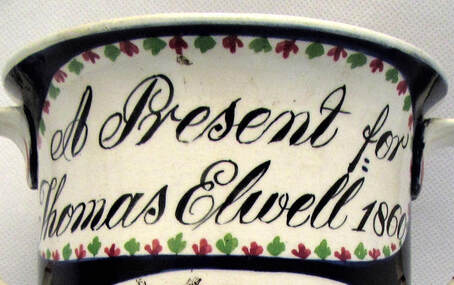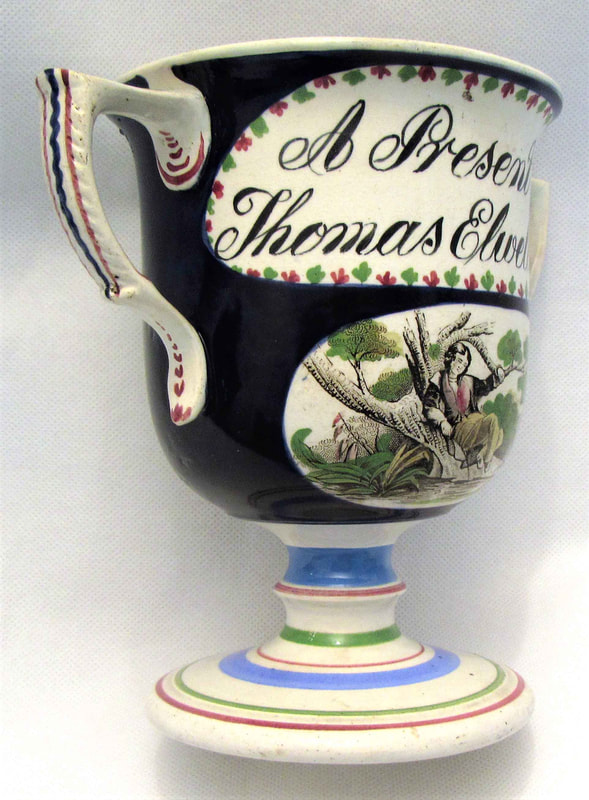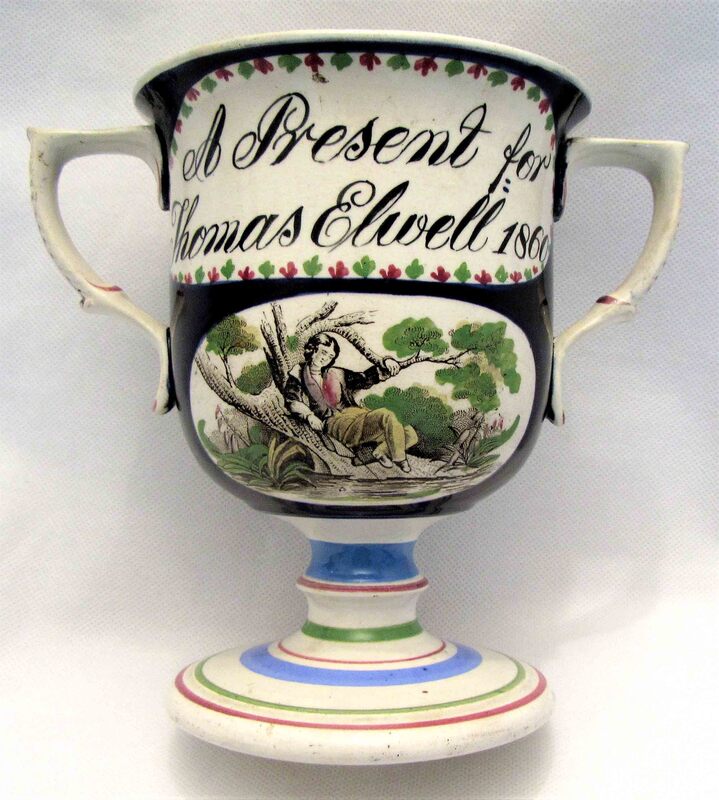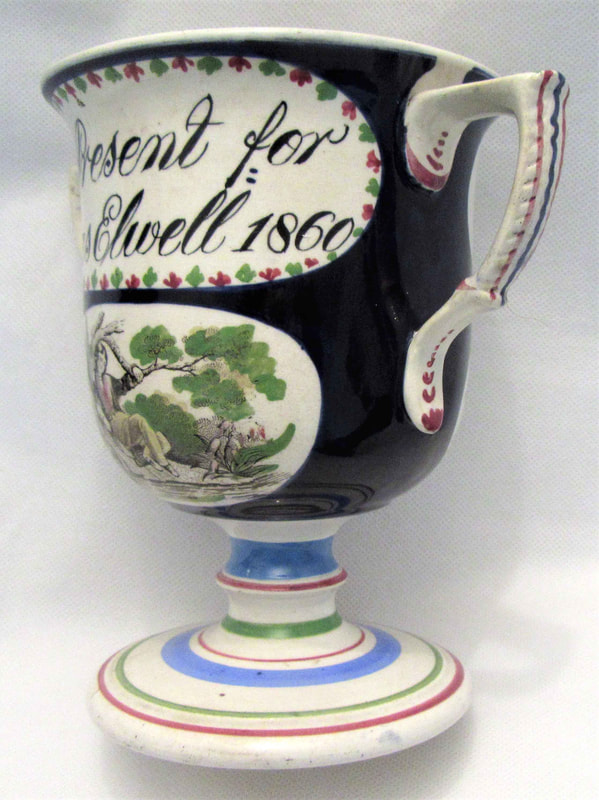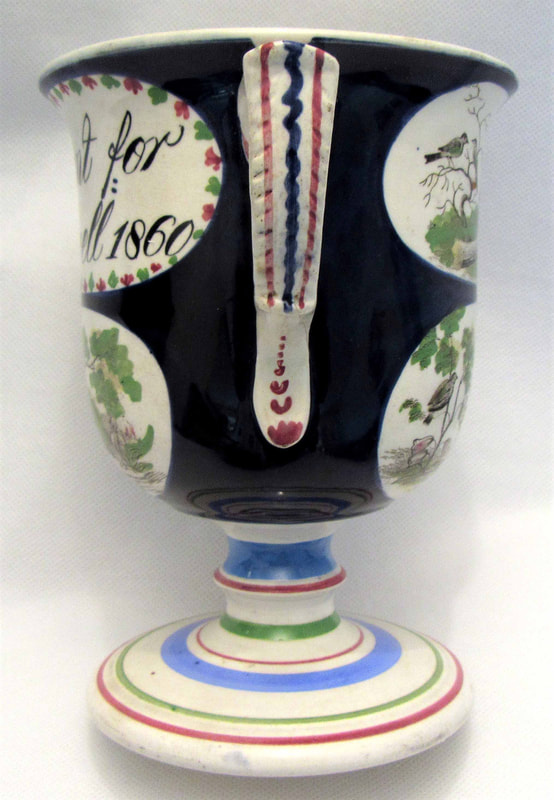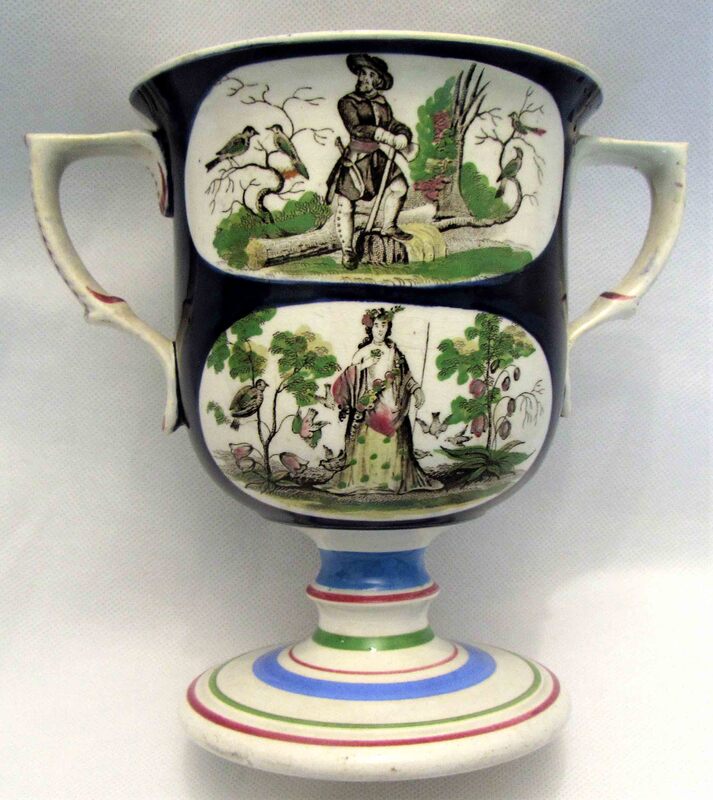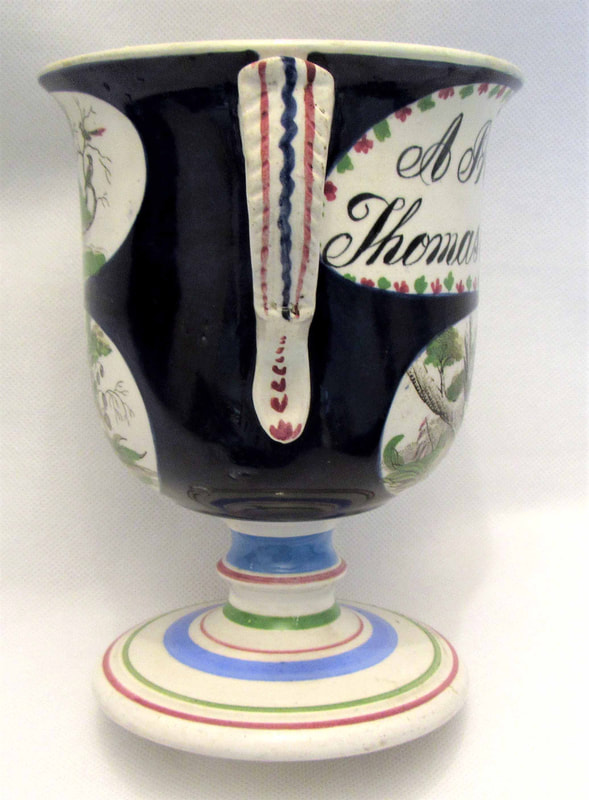Dixon, Phillips & Co inscriptions
The above partnership ran from 1839 to 1865 when the Garrison Pottery closed. Inscriptions from the 1840s appear to be less common. There are two main hands during this period. The earlier hand from the 1840s to early 1850s has a distinctive lower case 't' and 'l' and a flamboyant ampersand. The enameller appears to have first worked in North Shields, for Carr & Patton, until moving to the Garrison Pottery in about 1845. The left example below is from North Shields, and the right from a firmly-attributed Dixon, Phillips & Co jug.
The later hand, from about 1850–65, has a neat cursive script, often surrounded by lustre flourishes. The enameller again appears to have had a career on Tyneside, at Thomas Fell's St Peter's Pottery, before arriving in Sunderland. Below are examples from Fell from the 1830s and 40s on the left, and on the right, from Dixon, Phillips & Co from the 1850s and 60s.
Inscriptions in date order
The left plate has a date of 1842, which precedes the date at which the first enameller discussed above left North Shields. It has a Dixon, Phillips & Co impress, used before 1850. Unfortunately I don't have a photo of the mark. The three plates in the centre have the later mark 'Dixon Co'. The bowl on the right, with a similar lustre motif is firmly attributable to North Shields. It seems likely that the De Putron plate was commissioned after 1842 with a retrospective date. Below, a typical Dixon, Phillips & Co jug with similar decoration and a Channel Island family inscription, but no date.
The inscription 'was married' suggests it was made after the event. I think the earliest it could be is c1845.
This jug has a brick red inscription and could easily be mistaken for a North Shields item. However, the transfers match those found on other Garrison Pottery items.
|
Masonic register: William Wescombe
St George's Lodge, Exeter, 14 April 1805 Children:
1841: laundress, 76 years old Living with William and Maria Brooks, and Maria Sparks (20), Withycombe, Devon Died: 21 January 1846 Burial: 28 January 1846, Withycombe Raleigh, Devon Again, the lustre motifs around the transfers match those on the plates above. |
A rare Gaudy Welsh puzzle jug from the Sunderland Museum & Winter Gardens, Tyne & Wear Archives & Museums collection. Note the similarity of the 'p' in 'Capt' to the jug above, and the two commas signifying abbreviation. Norman Lowe has identified a James Whiskins, who in 1841 was a seaman living in South Street, Bishop Wearmouth, Sunderland. He was baptised 11/4/1784 in Whitechapel. By 1851, as a widower, he returned to London and became a magistrate.
The horizontal lustre strokes around the transfer also appear on North Shields items. This jug, again with a Channel Island family inscription.
The saucer has an impressed mark for 'Dixon, Phillips & Co'.
At some point before 1850, an enameller who worked for Thomas Fell in Newcastle in the 1830s and 40s moved to Sunderland and worked at the Garrison Pottery. This is the earliest dated example of his work there that I have found. It is possible though that this jug was made sometime after the date in the inscription.
Thanks to Norman Lowe for the following information: Ellen Campbell was buried 13/7/1851 Christ Church Tynemouth. Father Hugh, mother Catharine. A few months earlier she was living with mother and siblings at 3, Clive Street Shepheards Quay, Tynemouth Union. No mention of Fulthrope but it’s a rare surname confined almost exclusively around Tyneside at this period.
This darning egg is not instantly recognisable as a Garrison Pottery item. Although, the pattern on the reverse is reminiscent of carpet balls attributed to that pottery in Baker. However, compare the text with the detail from the 1855 'Cargill' jug shown below. The swirling motifs around the text are also typical of the later Dixon hand.
Thanks to Norman Lowe for his detective work on this one. George Jelley married Mary Ann Short at Yapton Sussex on 25 December 1832. So somewhere along the line, Yapton got lost in translation and was written Yassten. The jugs were likely made as an anniversary gift in the early 1850s.
Around 1854 the Fell enameller becomes the dominant hand at the Garrison Pottery until its closure in 1865.
A mug dated 1859, and a saucer with a similar inscription and the 'Dixon Co' impress.
A rare example of an inscription in gilt on a money box from the Garrison Pottery. Thanks to Norman Lowe for the following information: the name on the money box presumably relates to Alfred Edward Usher born 1859 in Bishopwearmouth to James Usher, a shoemaker, and his wife Jane. He is referred to as Ed in one source.
These darning two eggs (from the Sunderland Museum & Winter Gardens, Tyne & Wear Archives & Museums collection), although undated, are included here in the sequence for comparison with the jug above. The distinctive upper case 'J' and 'C' are very similar. Baker attributes these eggs to 'Probably Dawson's'. However, the Garrison Pottery is known to have produced a series of 'Polka Craze' transfers, like the two below, and seems like a much stronger candidate to me.
Although dated 1801, this jug was likely made much later. Perhaps in 1861 to commemorate 60 years of marriage. The decoration is very similar to the 1862-inscribed mug below.
A jug with the same Dixon bridge transfer and a similar inscription to the mug above.
A rare example of orange lustreware from the Dixon, Phillips & Co partnership, showing that the Garrison Pottery was innovating and producing quality items, right up to its closure in 1865. See another similar puzzle jug here.
And finally... I'm unsure that this item was made by Dixon, so it is presented out of date order. It is enamelled by a very similar hand to the slightly later plaque above.
